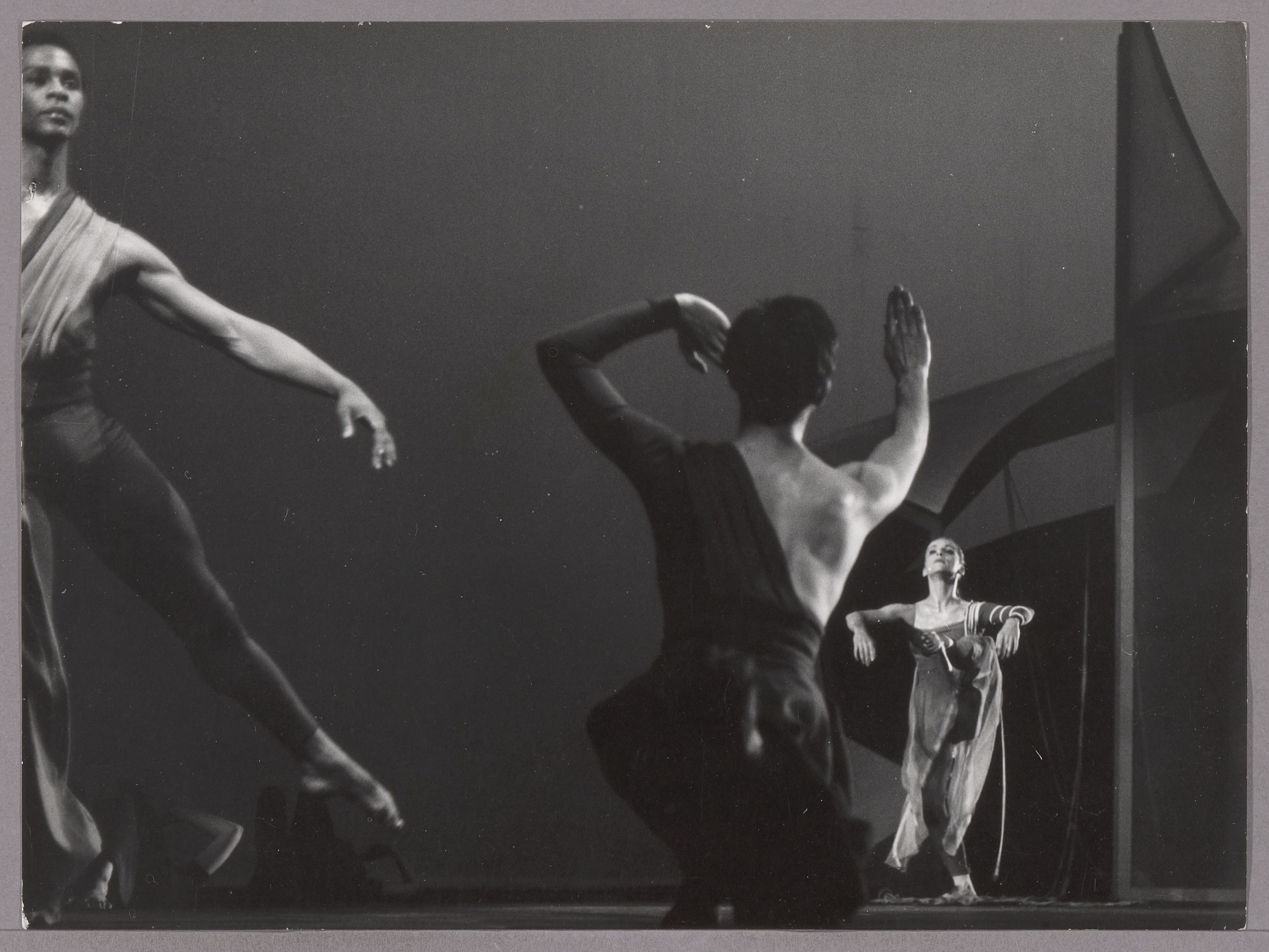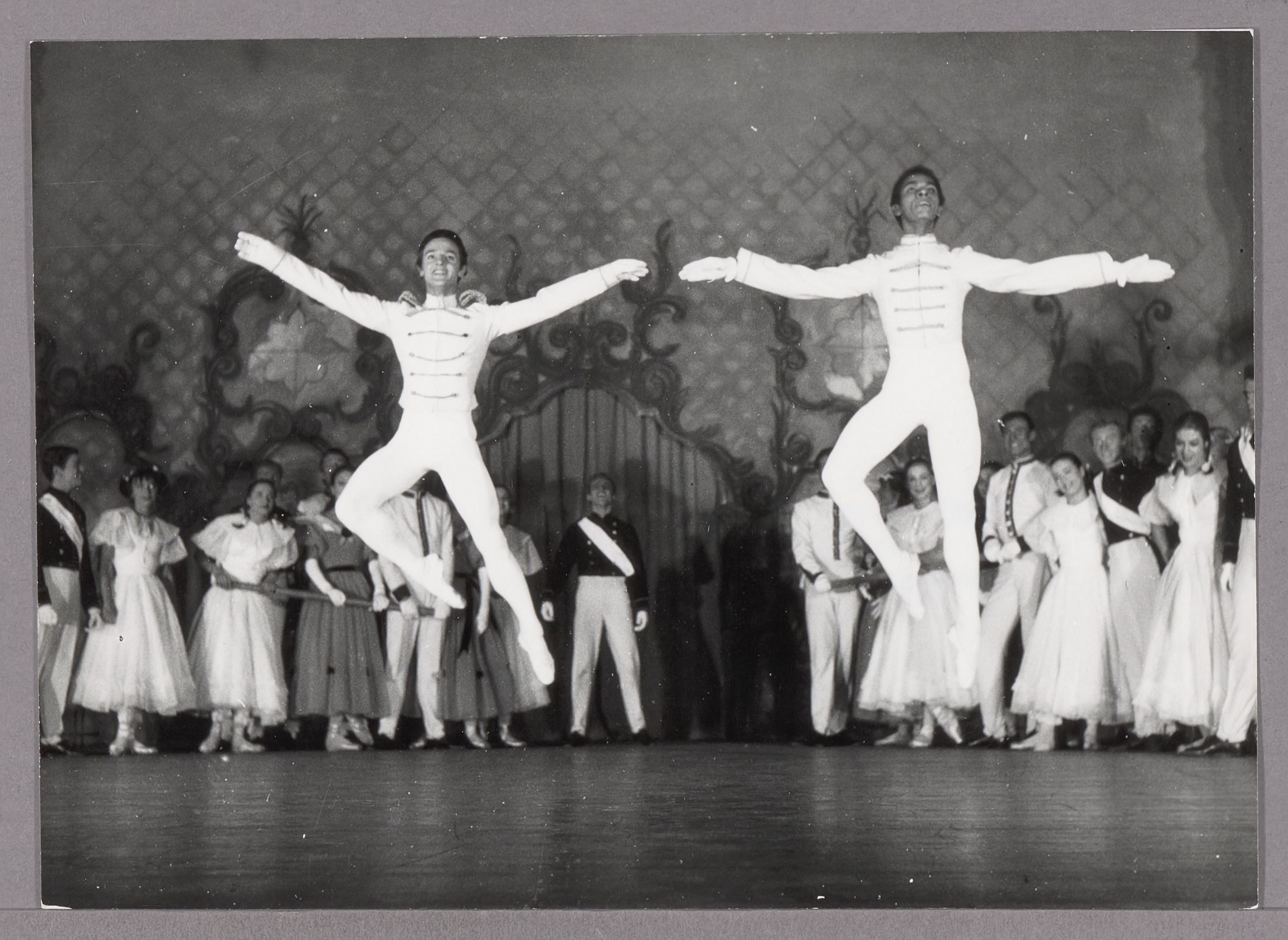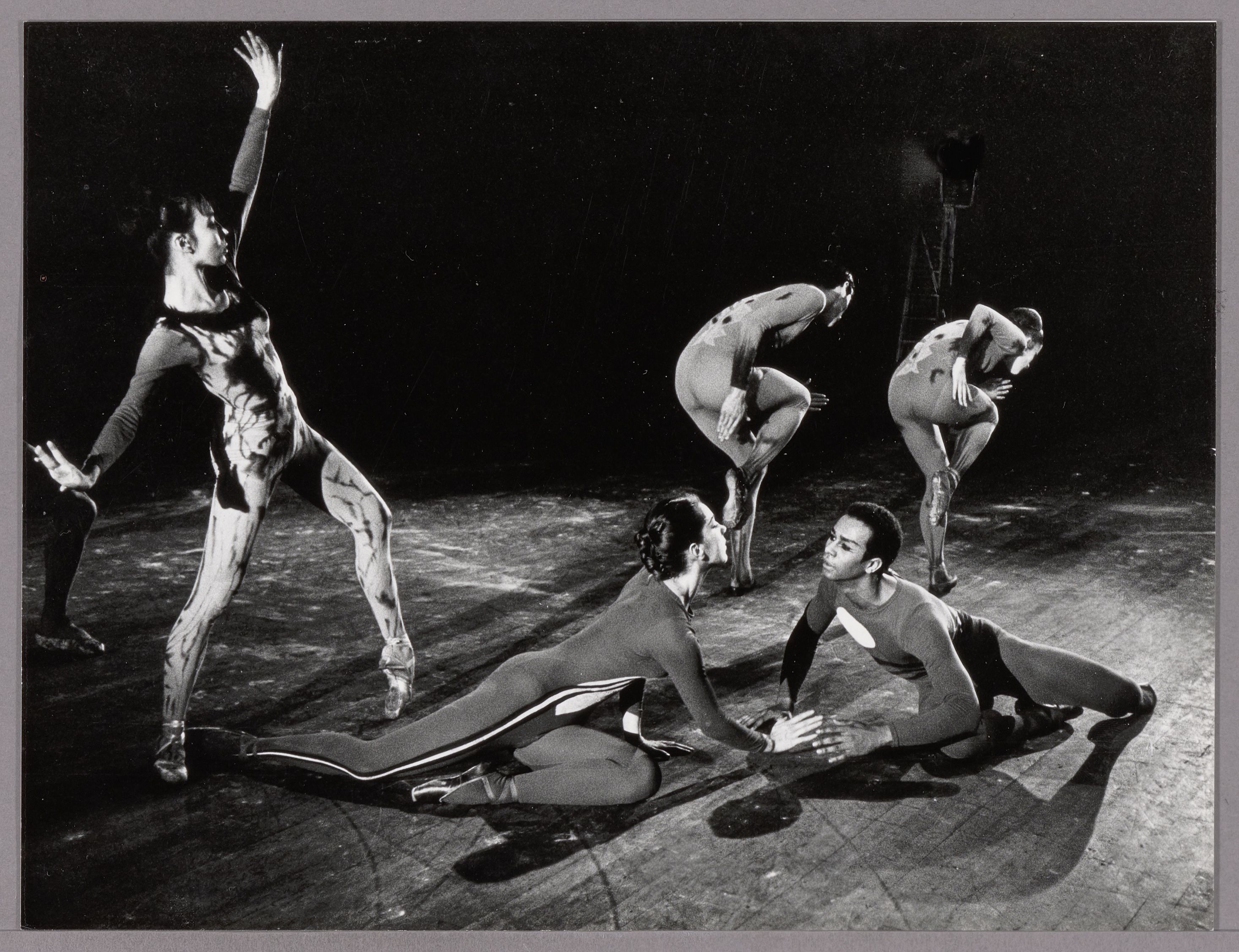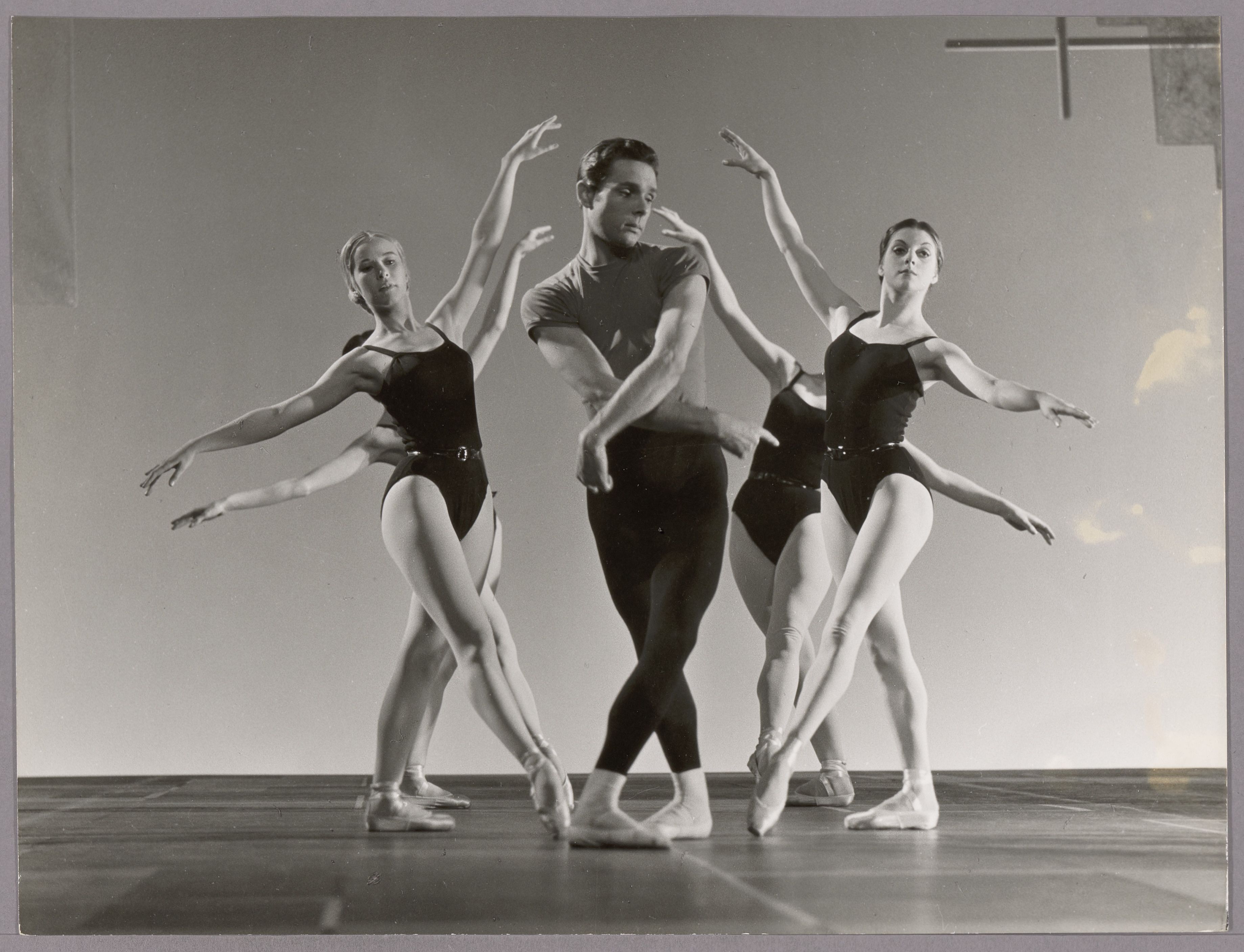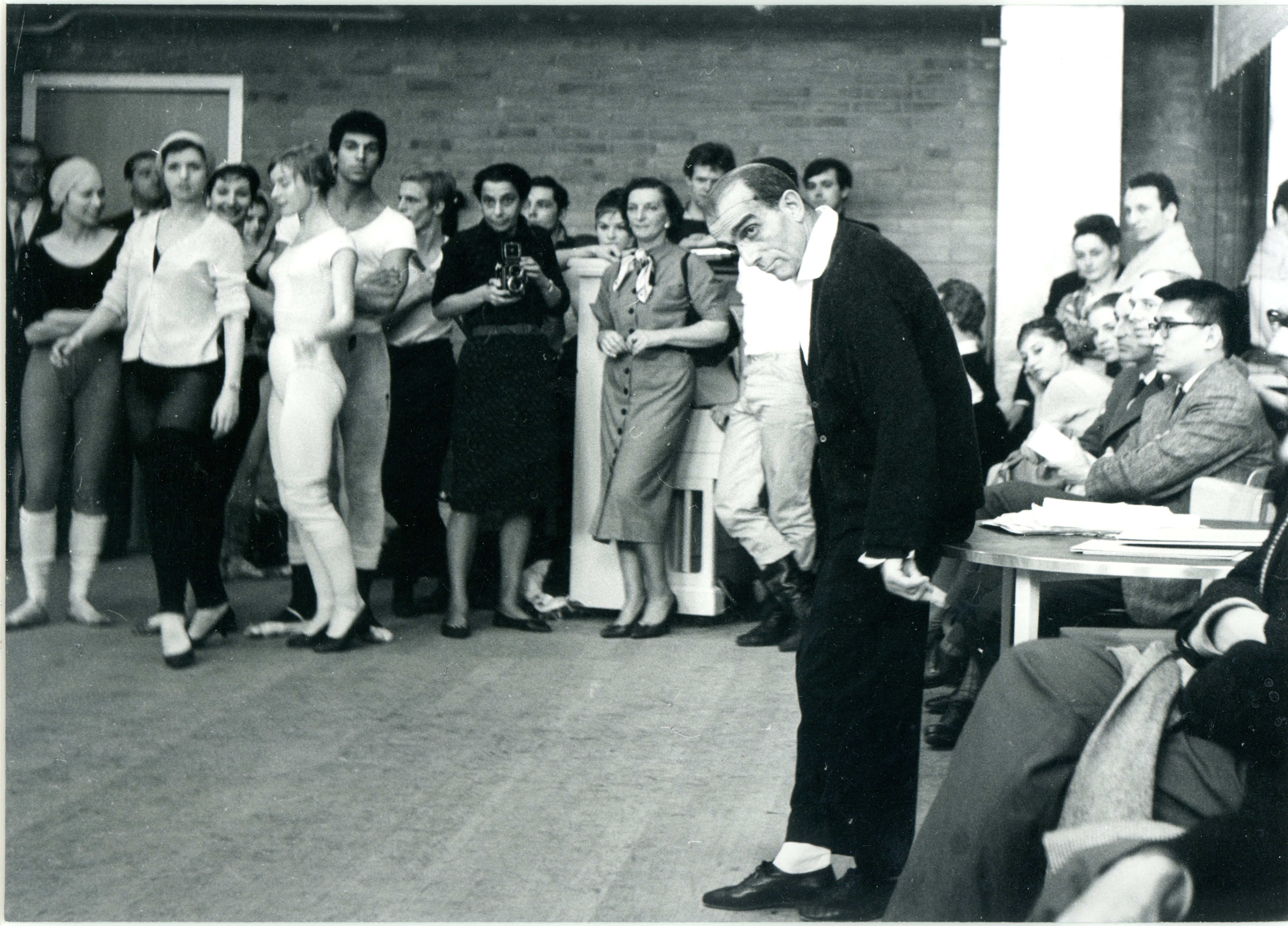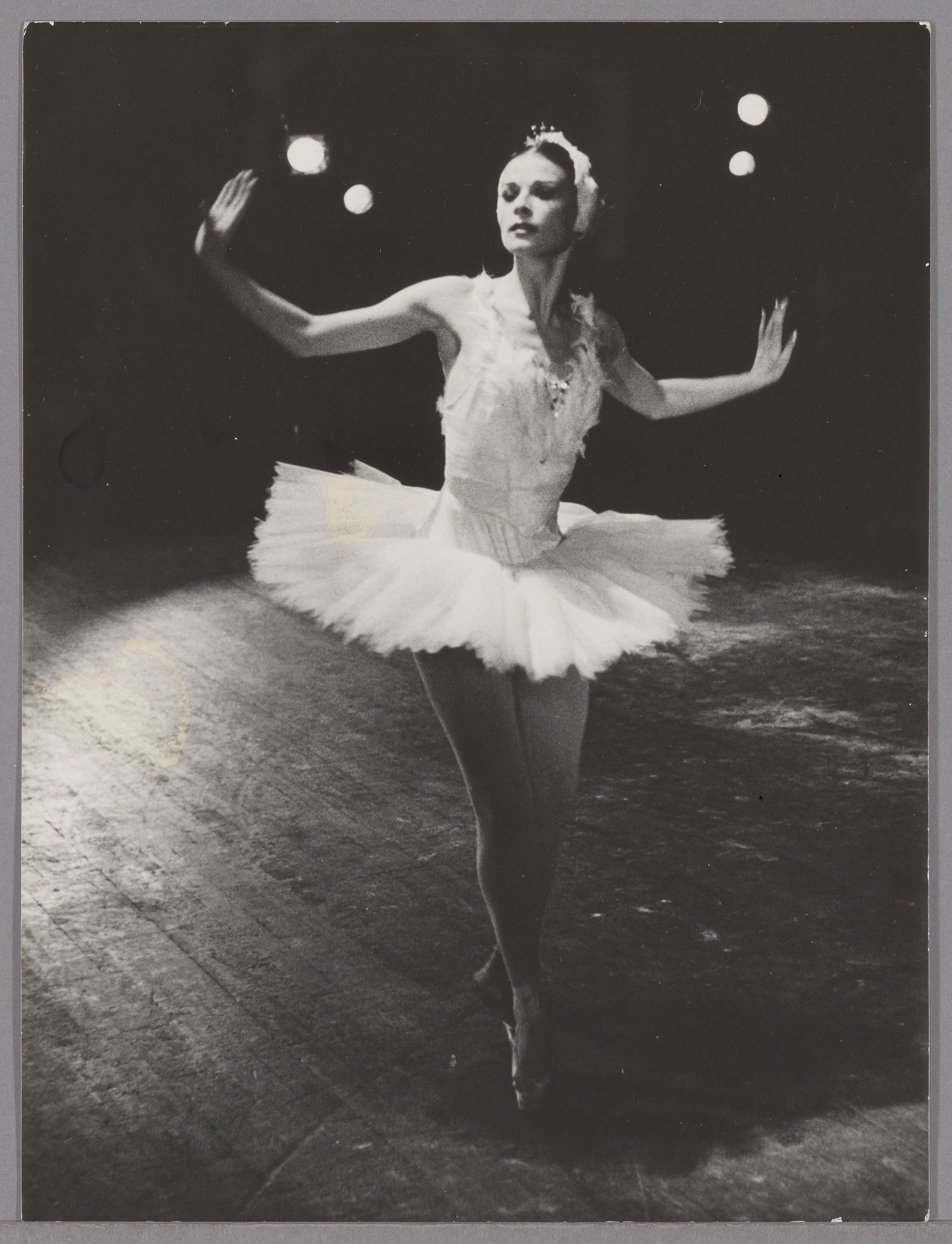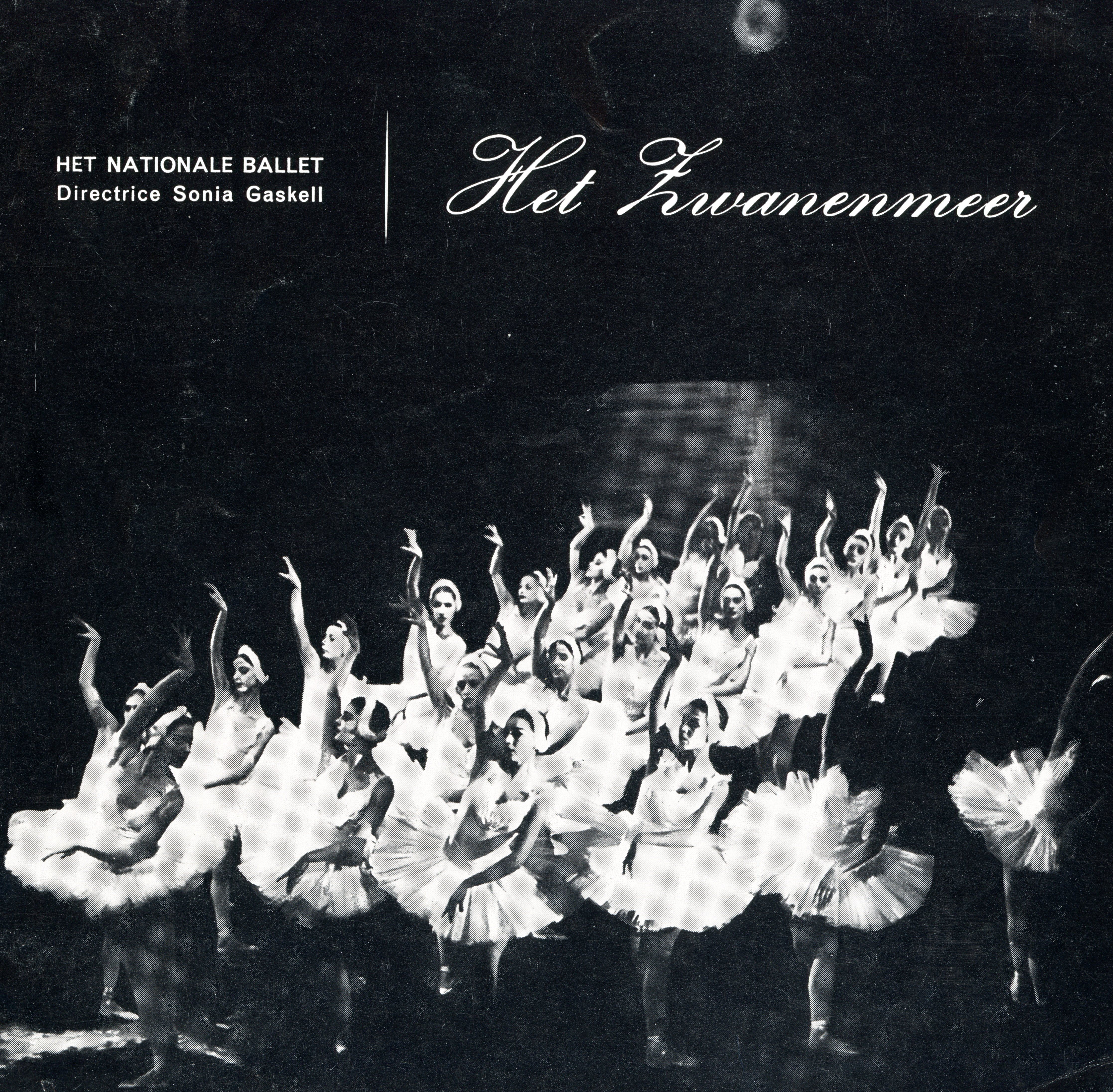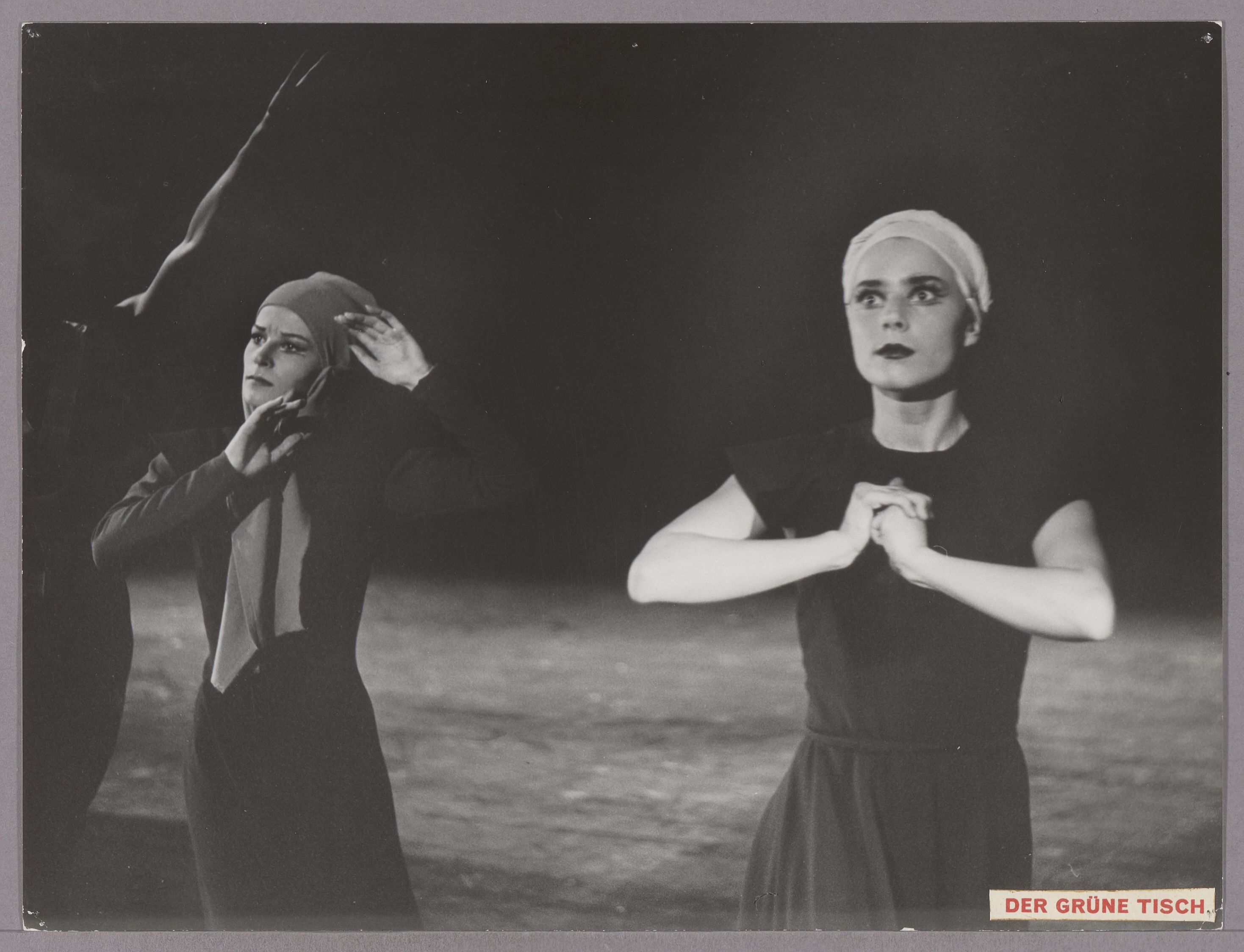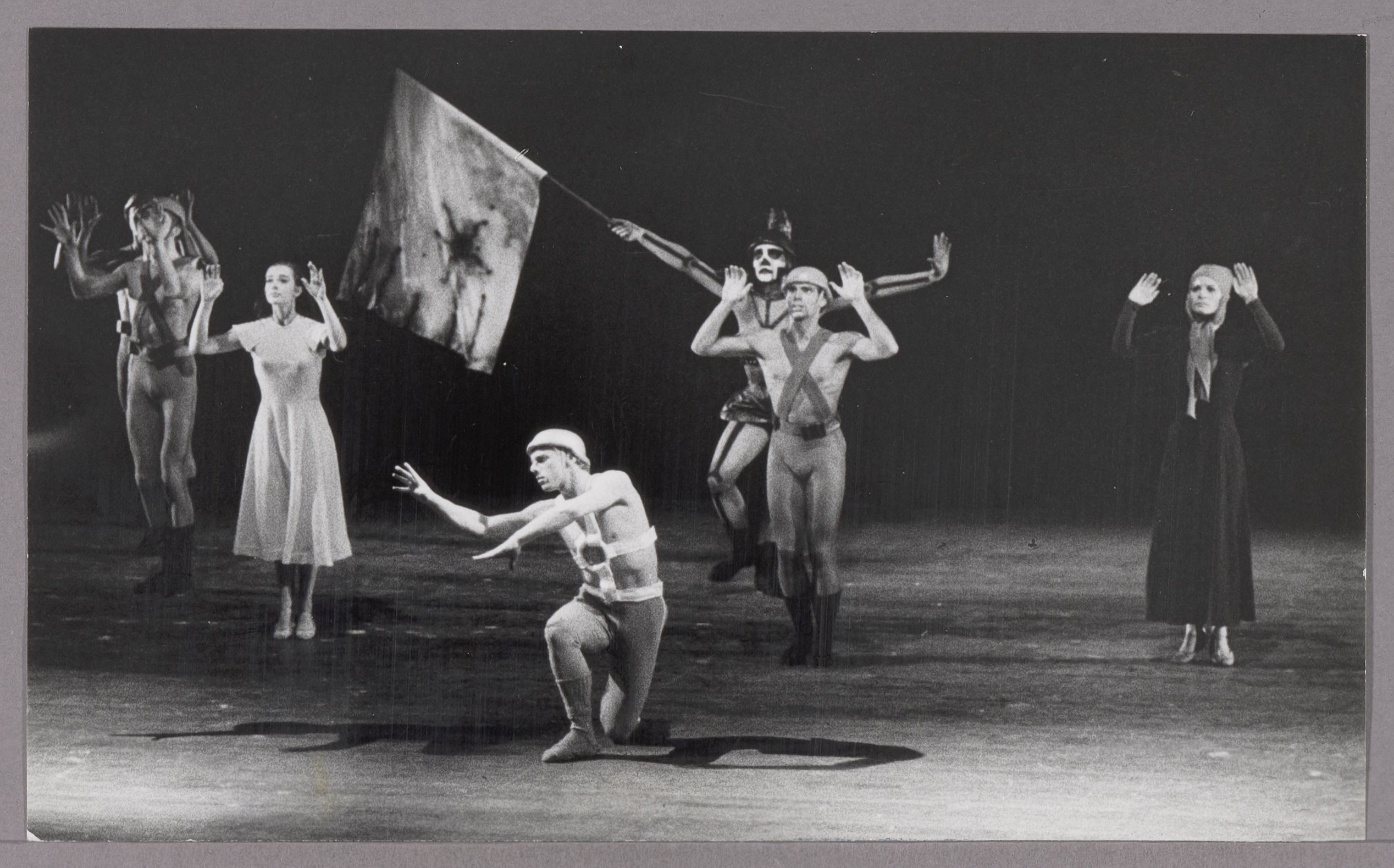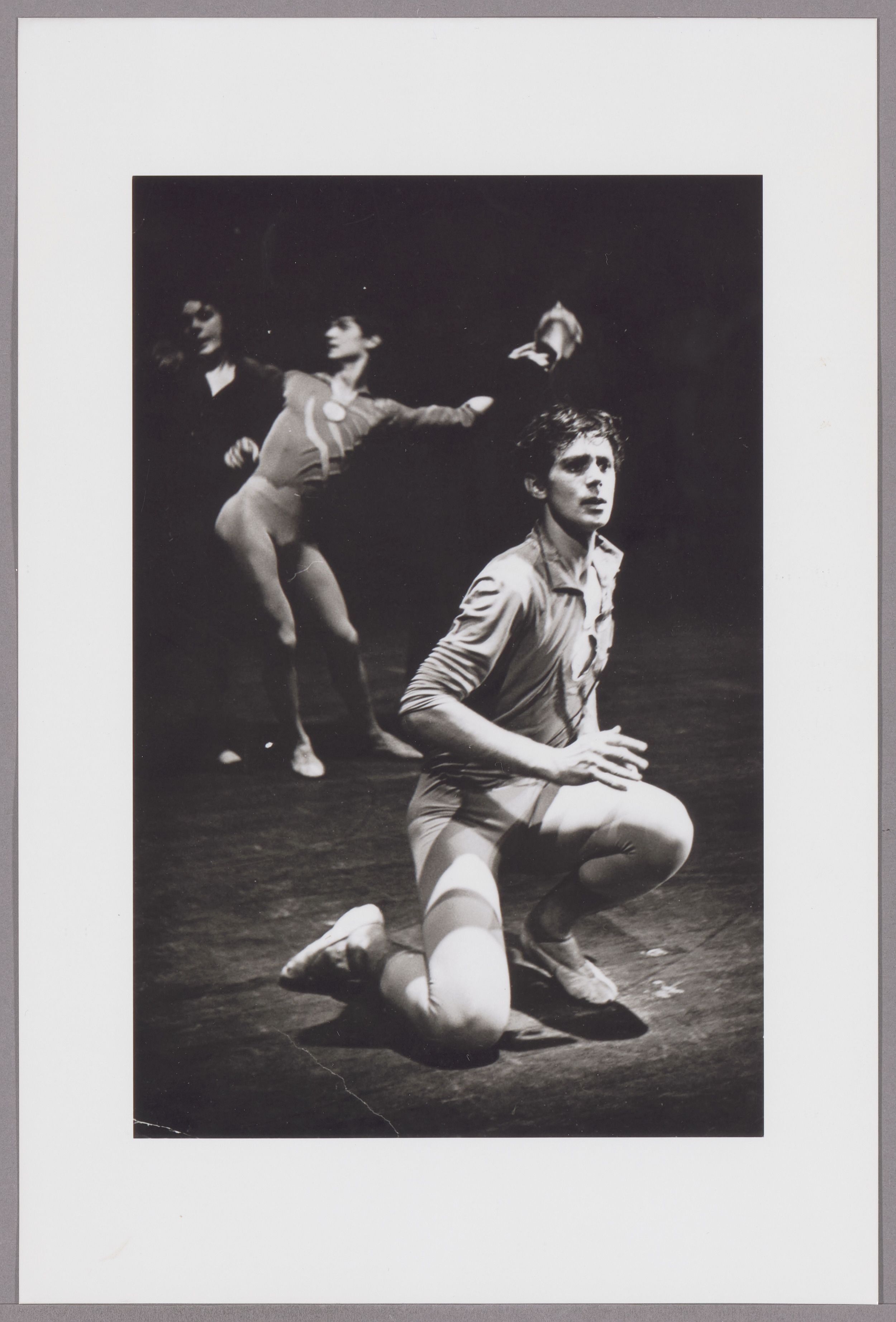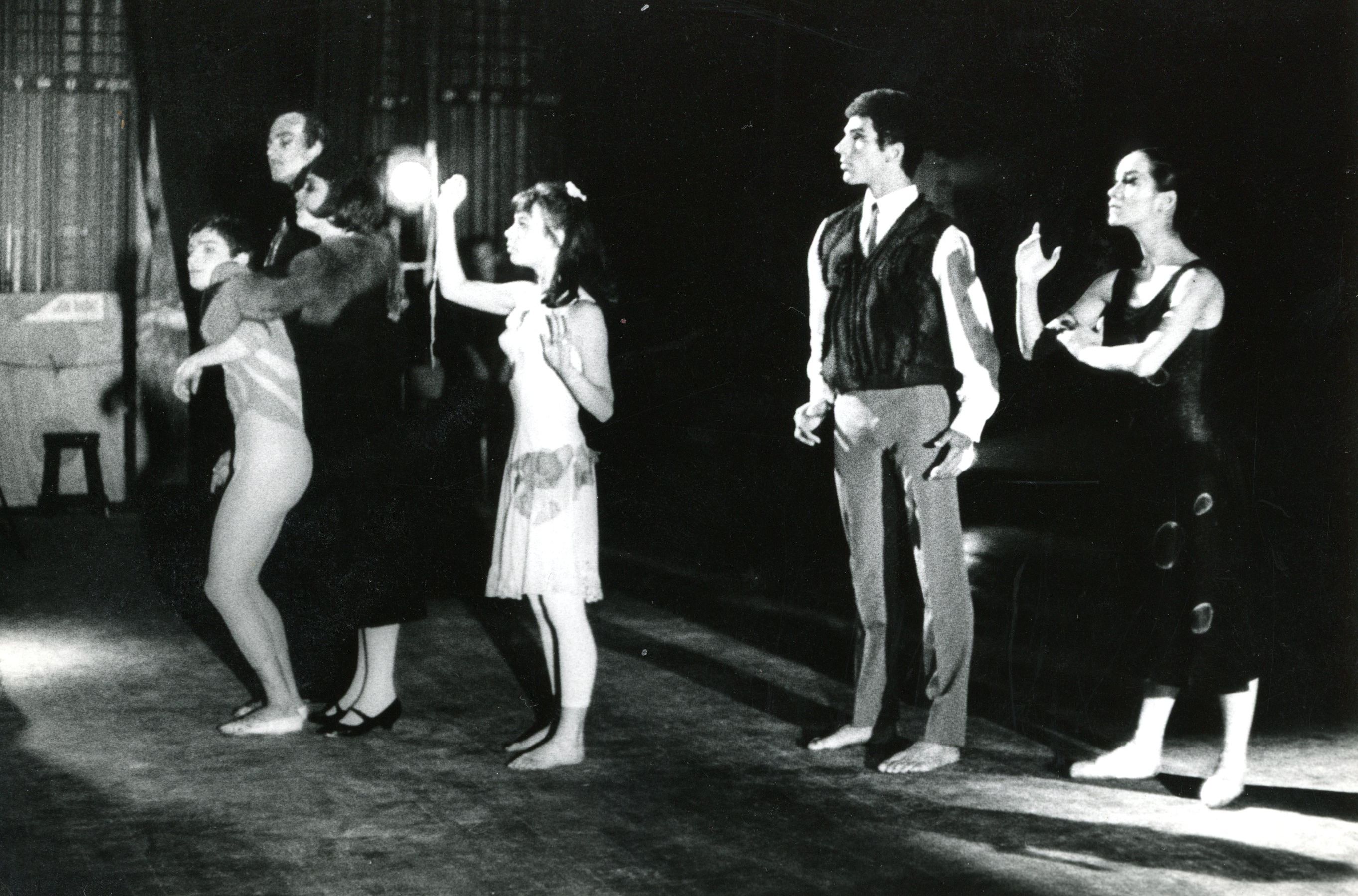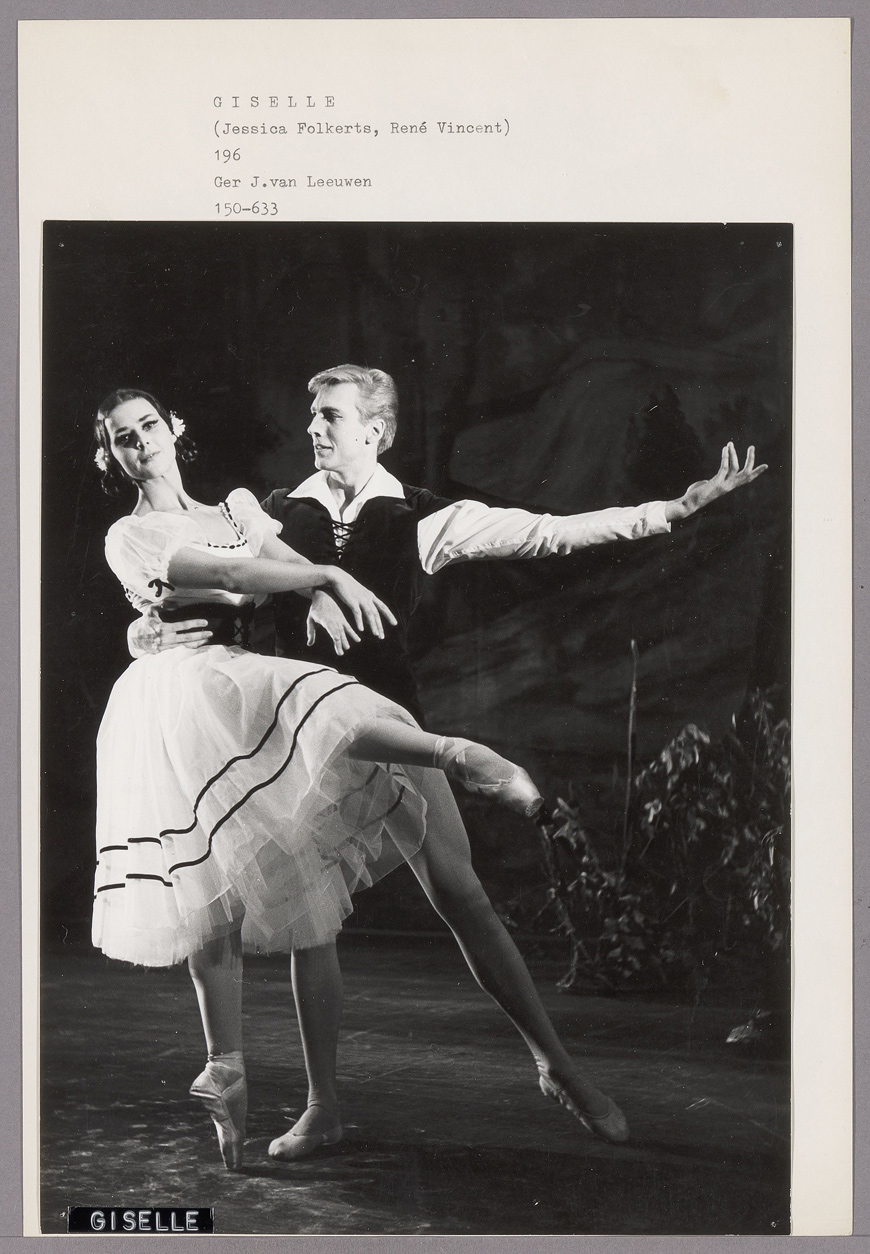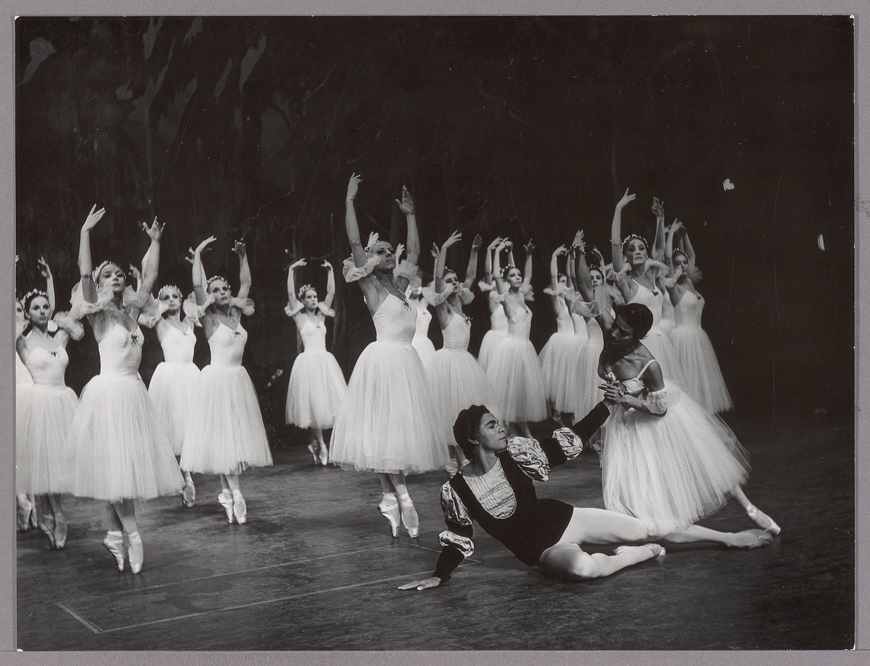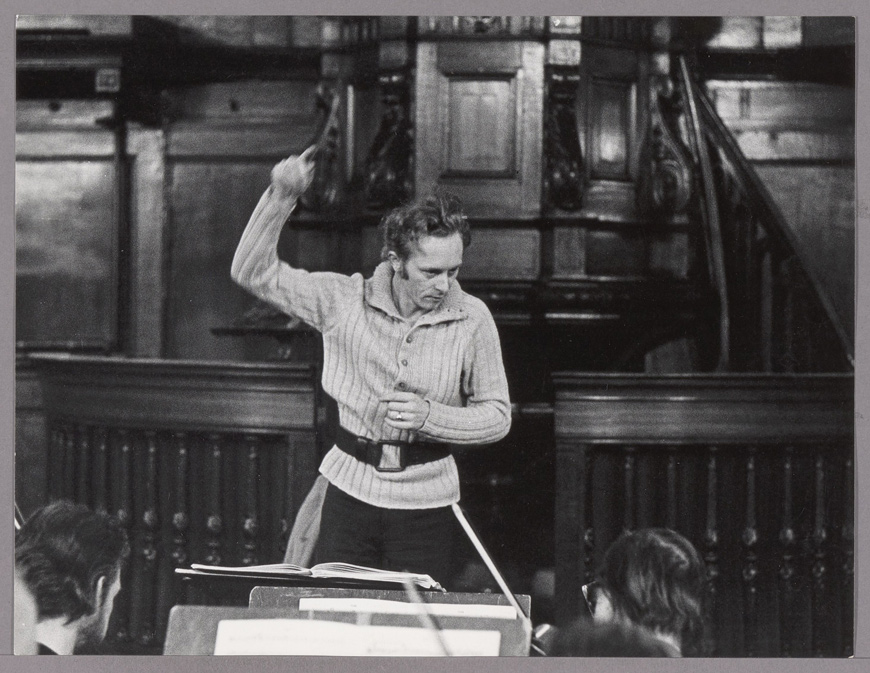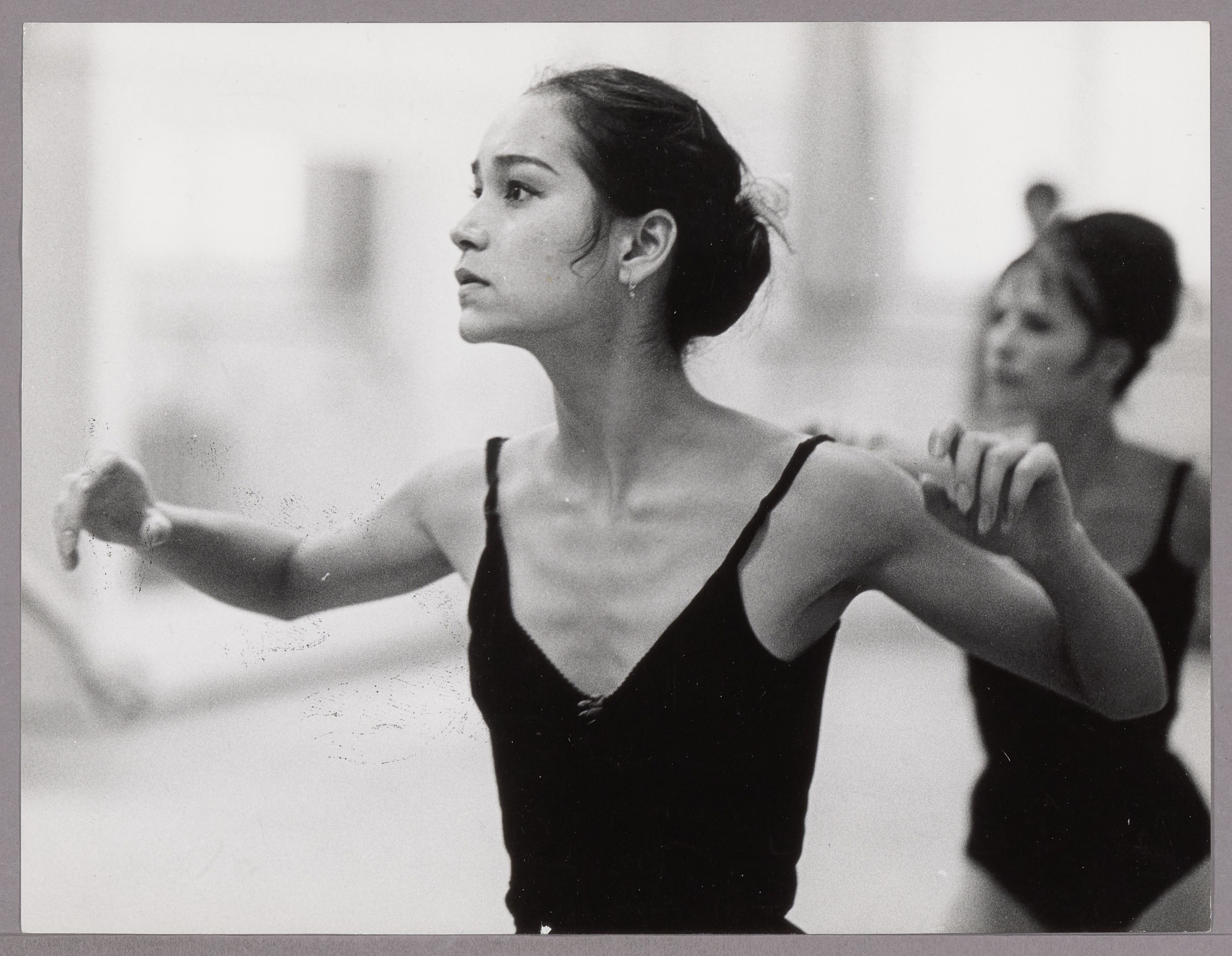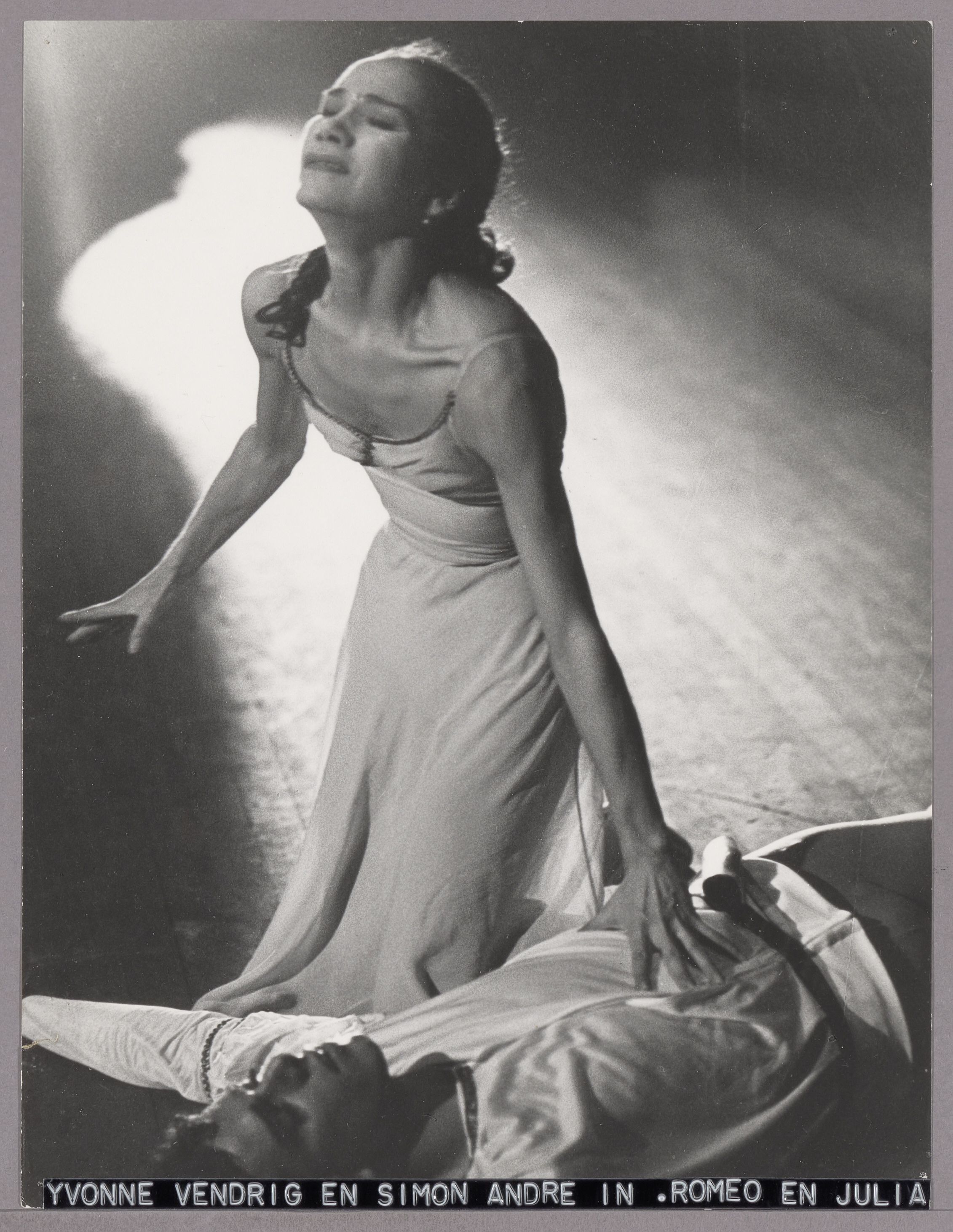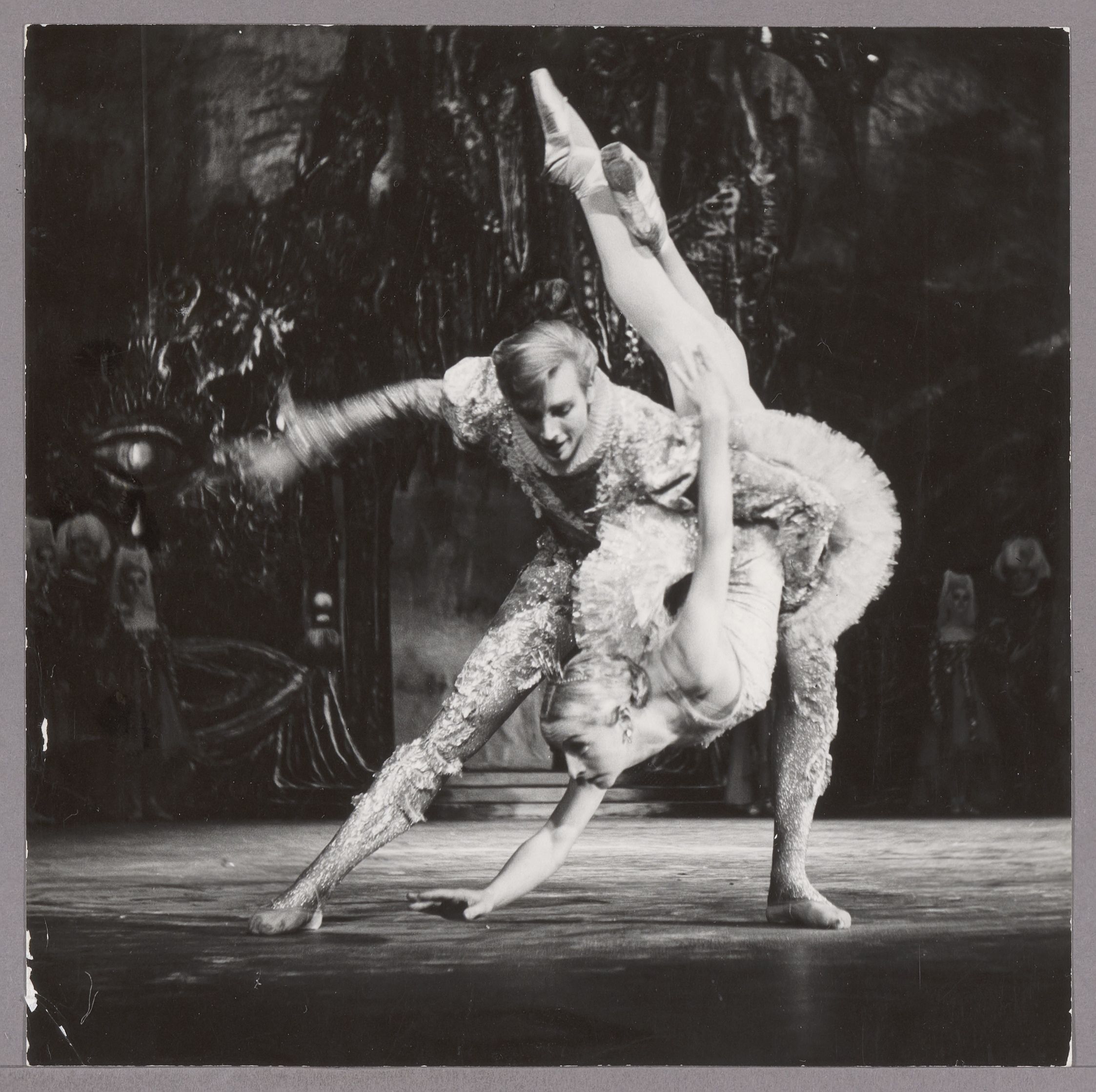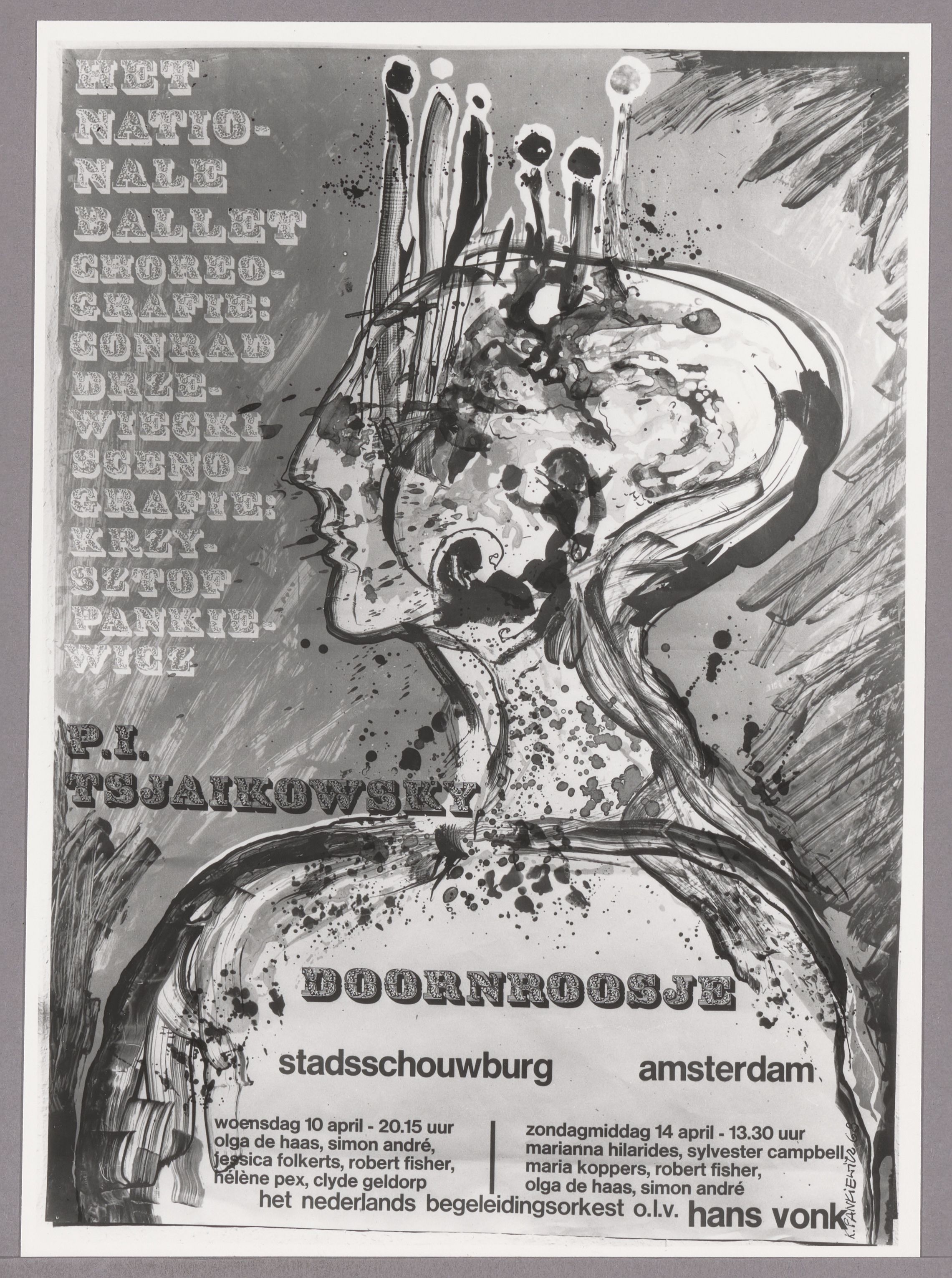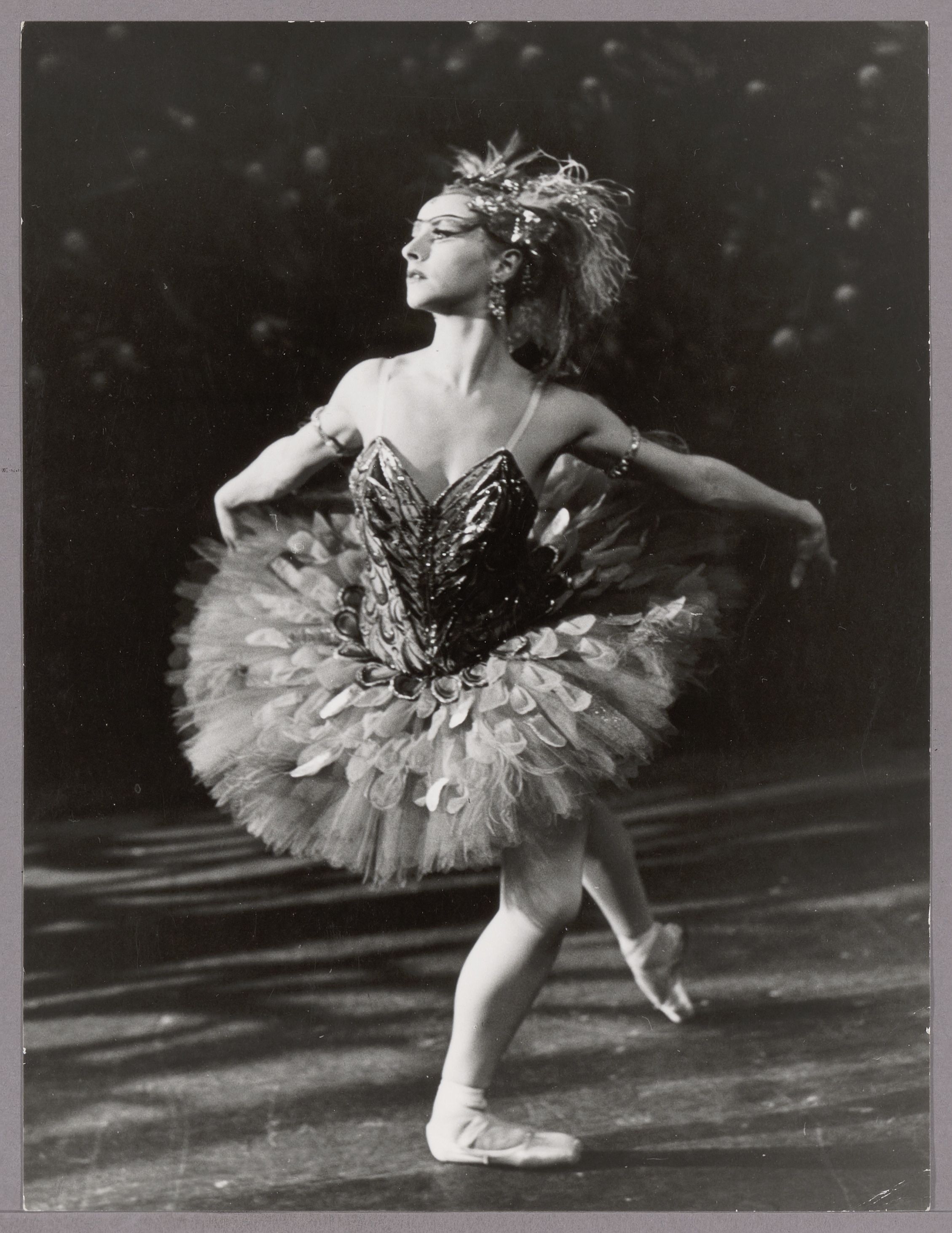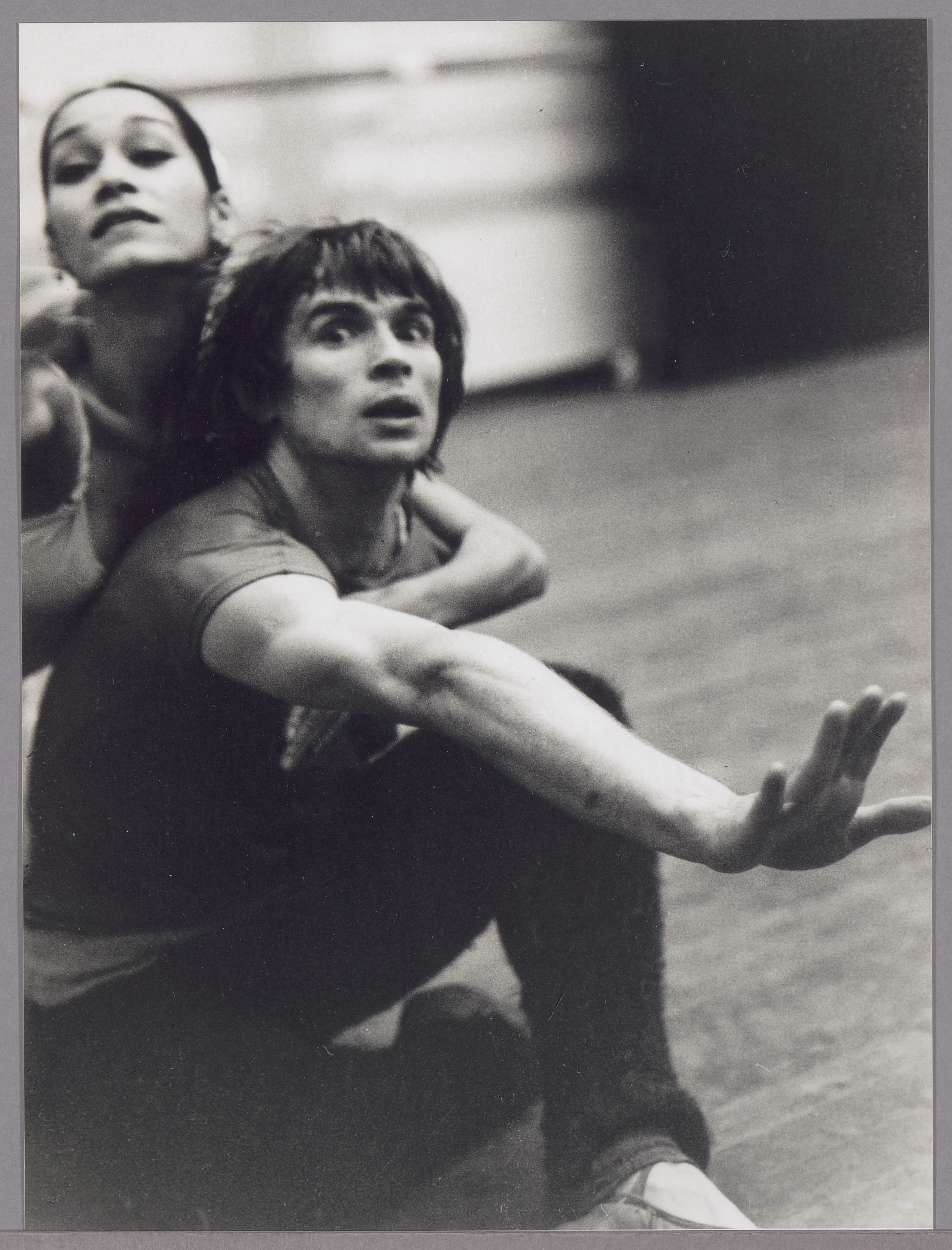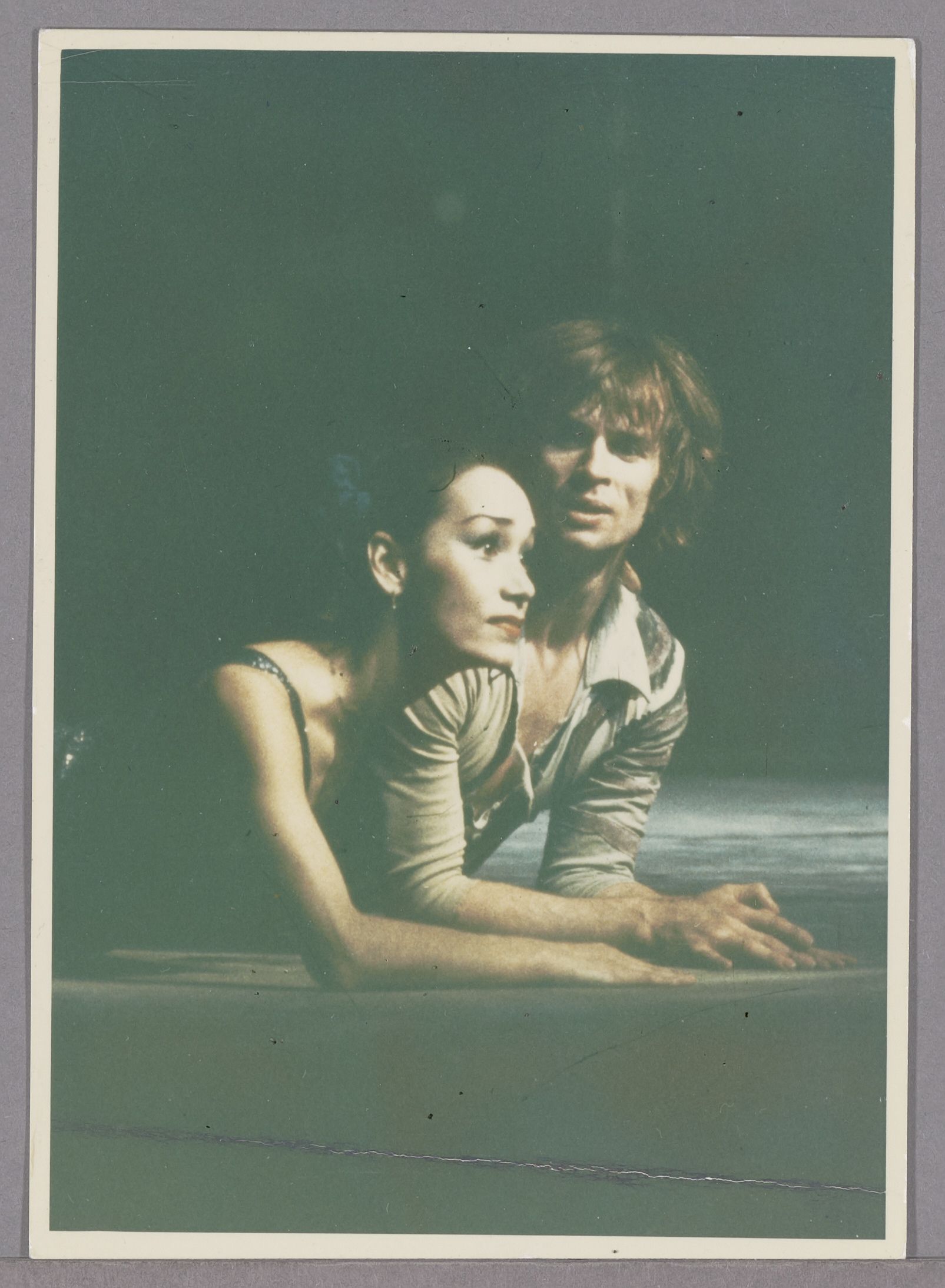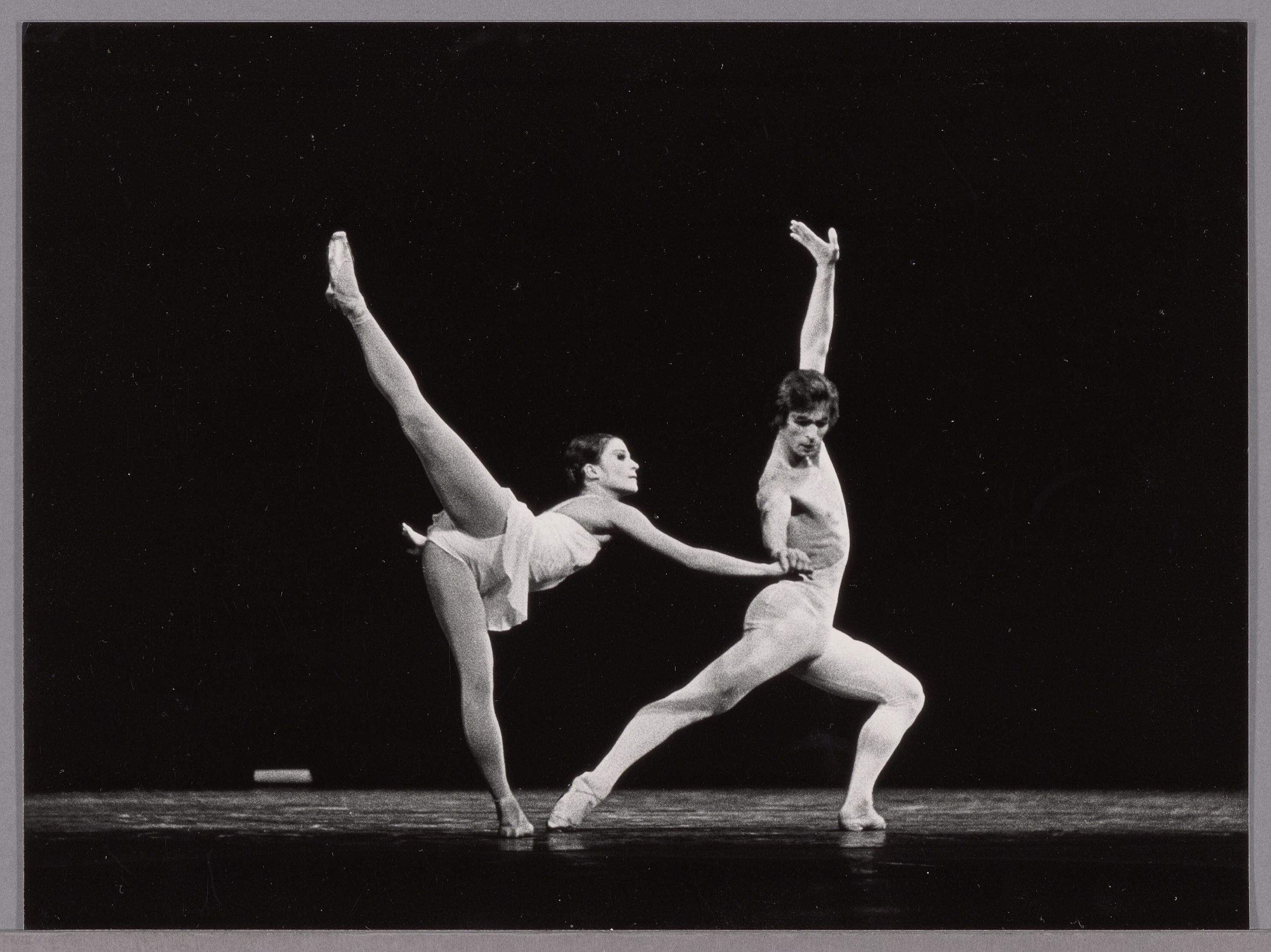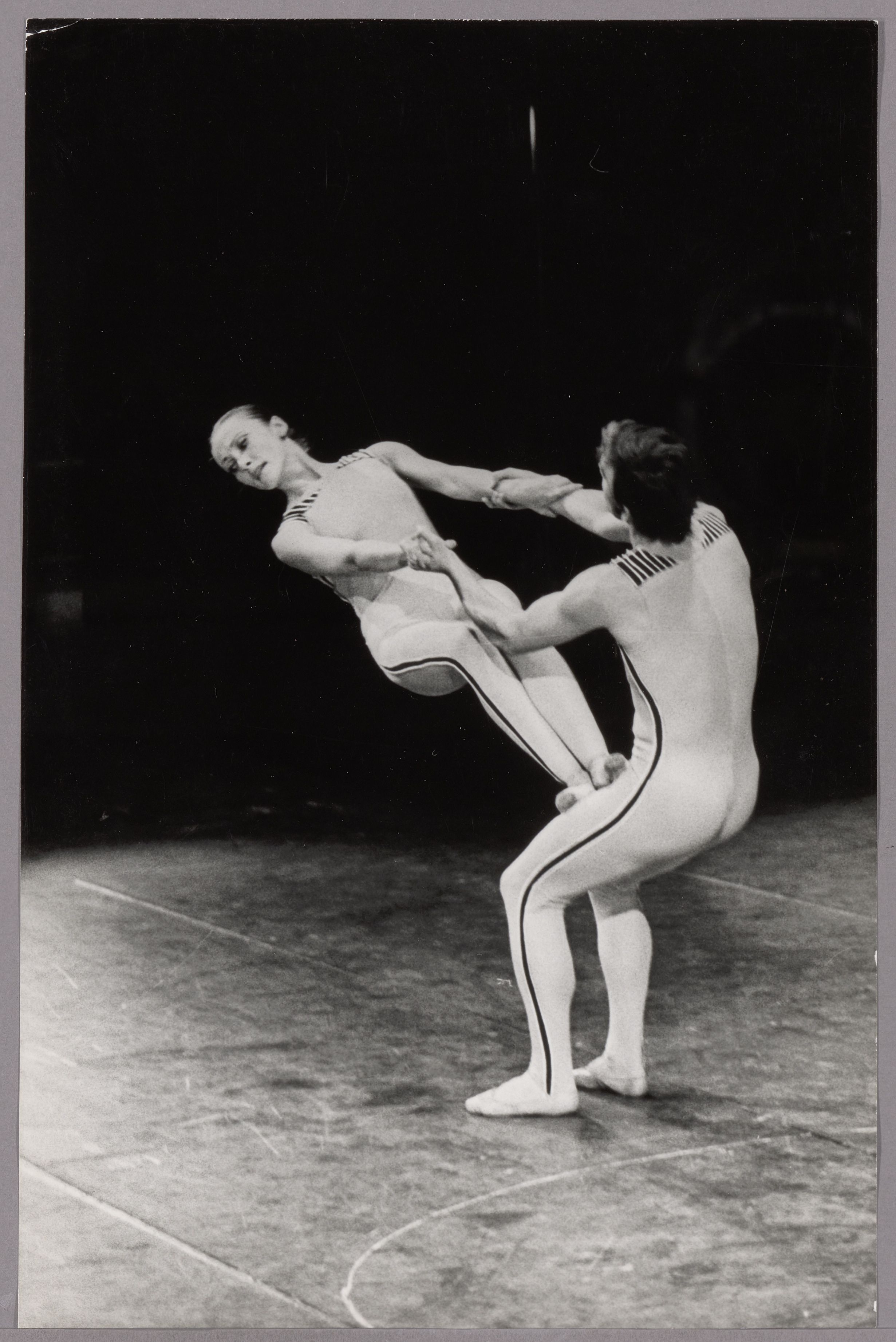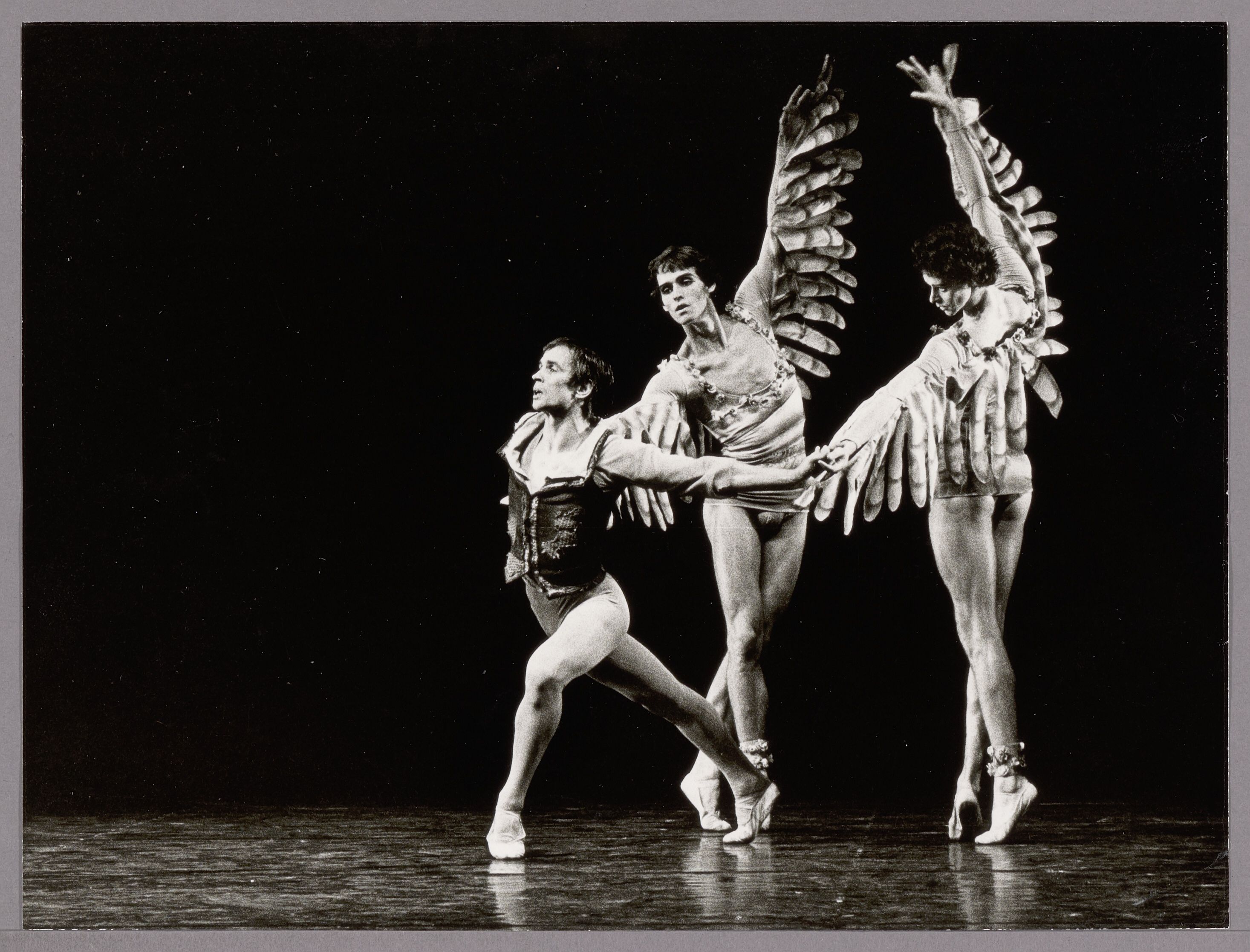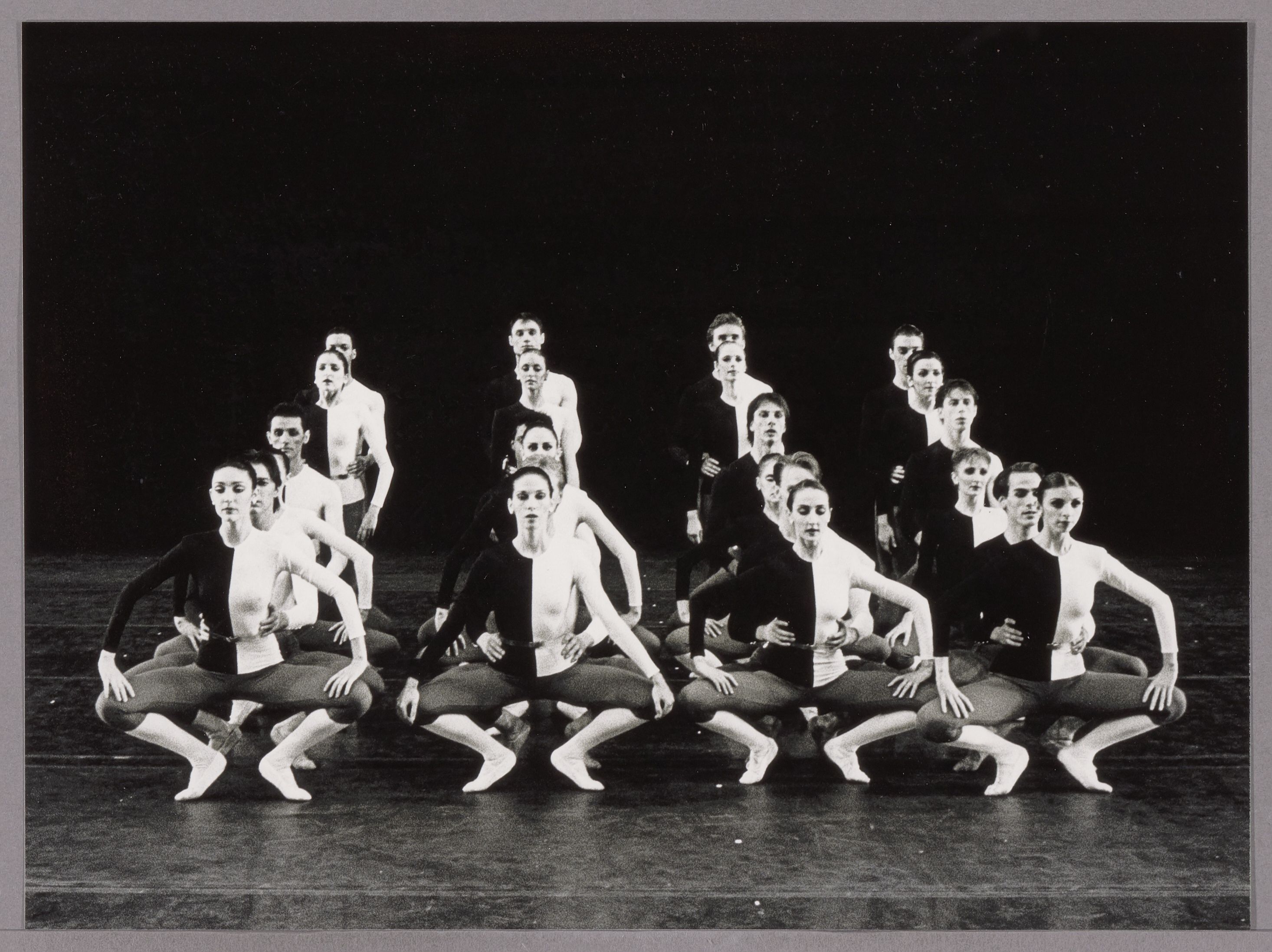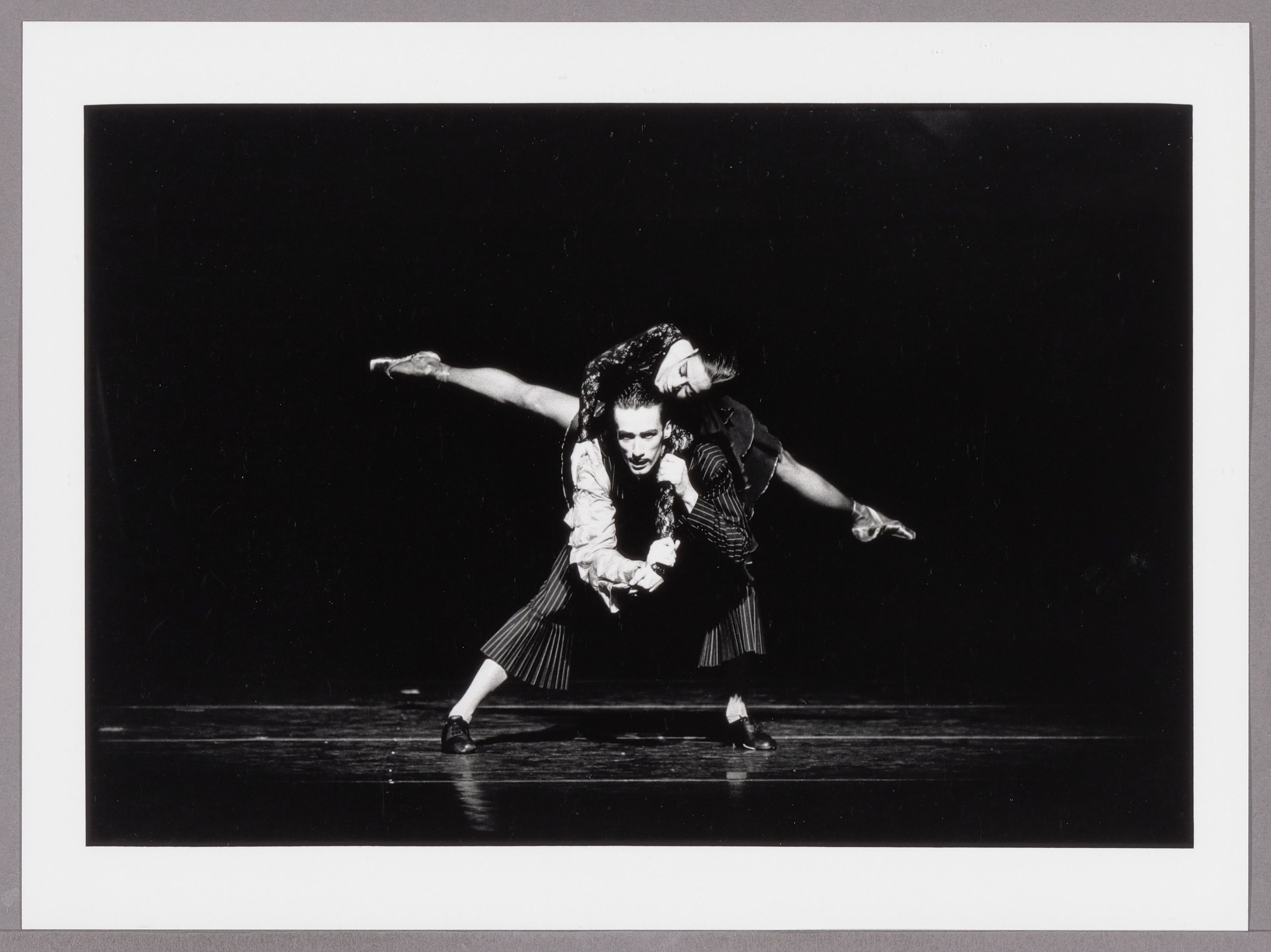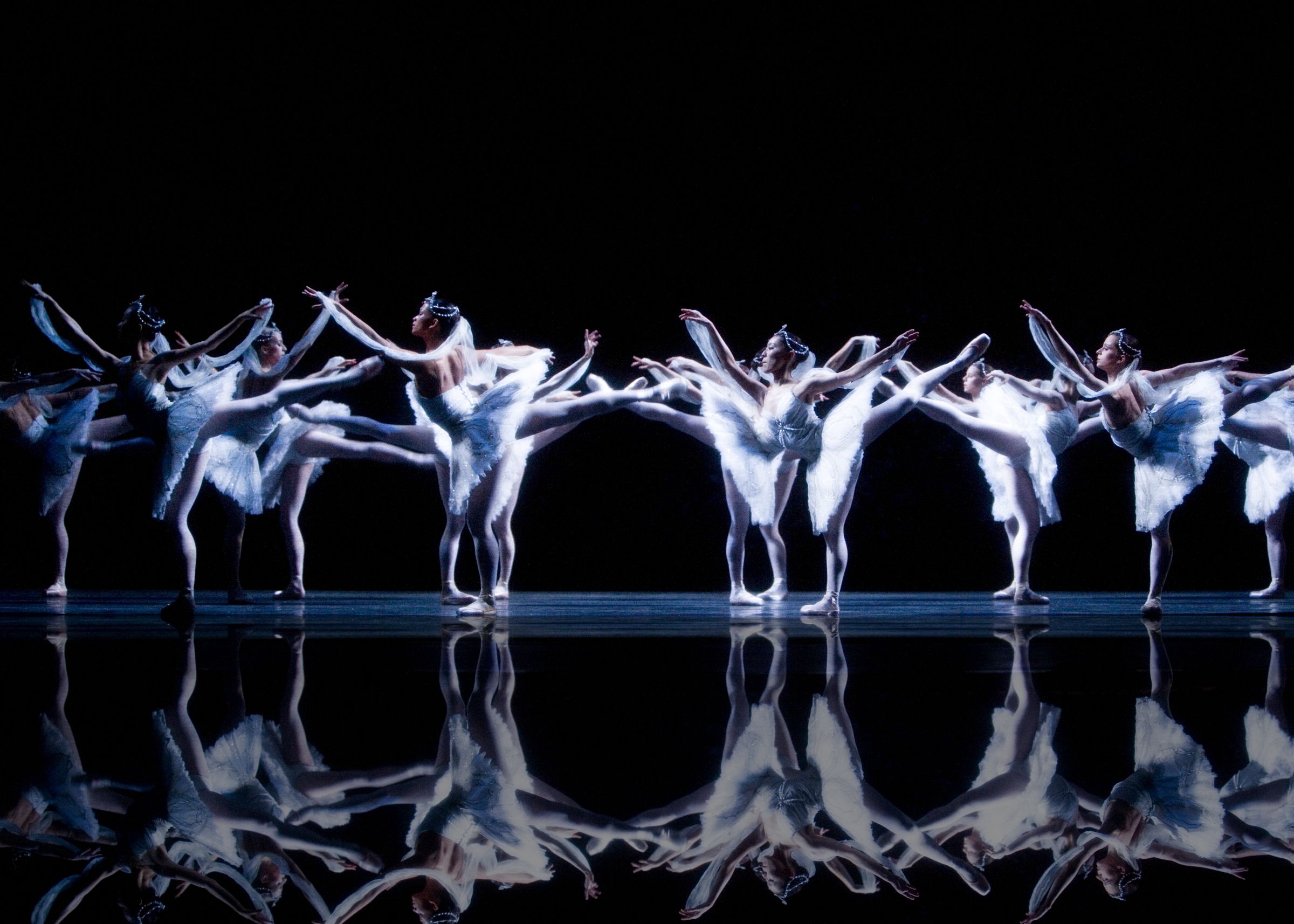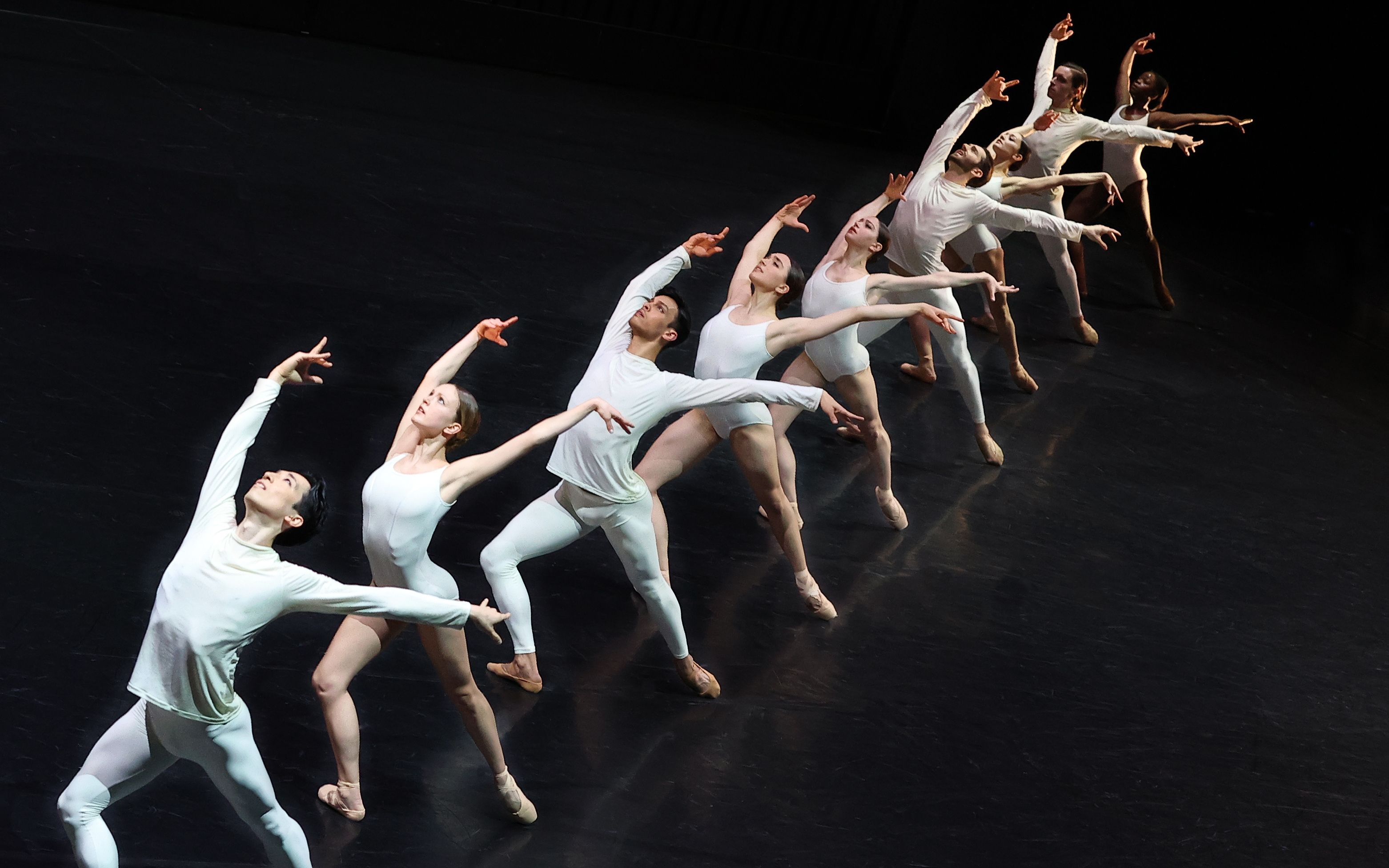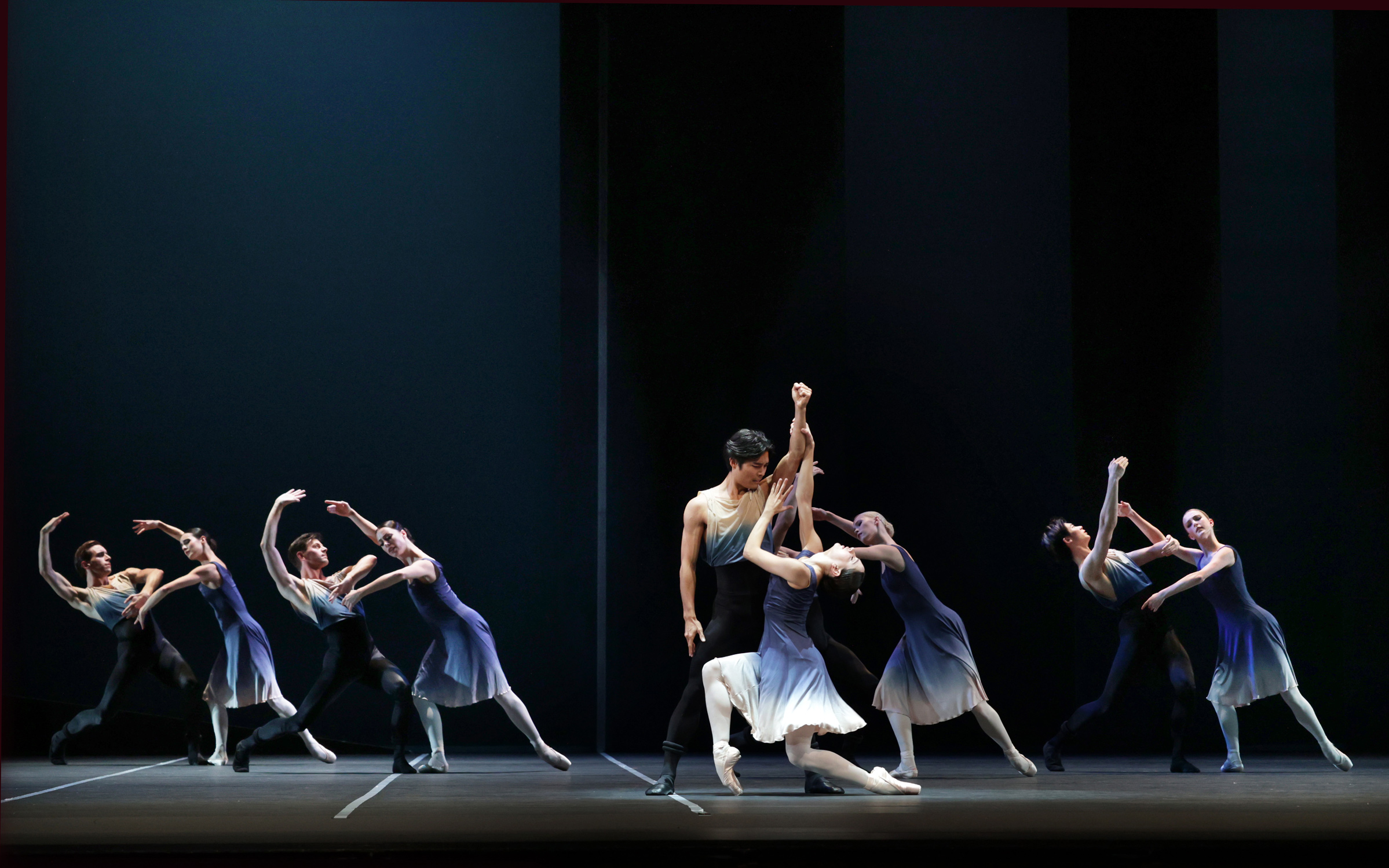
The history of Dutch National Ballet
Explore the rich history of Dutch National Ballet through this timeline, showcasing highlights from its repertoire and tracing the company’s development since its founding in 1961. Immerse yourself in captivating stories and enjoy a wealth of rarely-seen archival images.
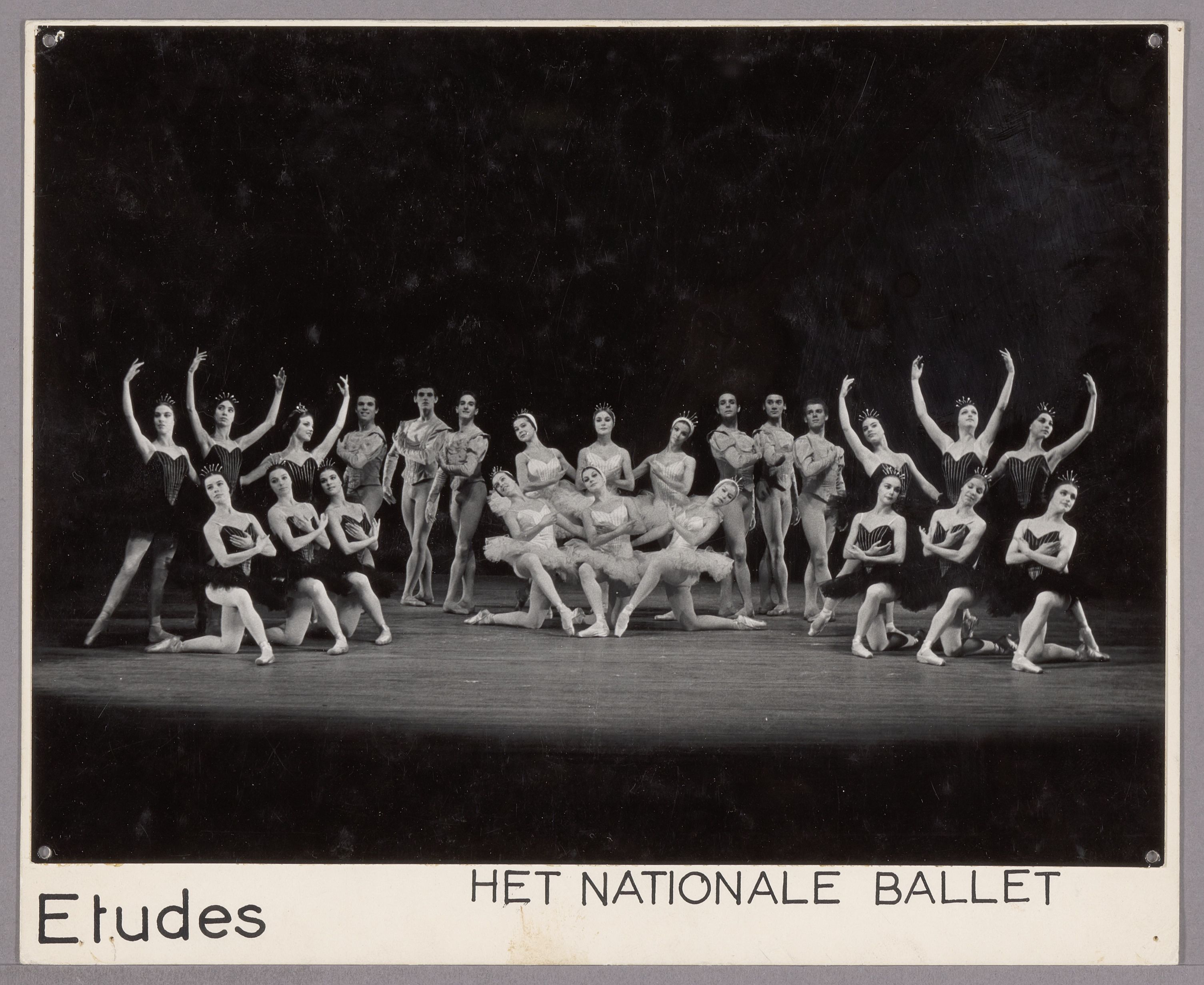
The 60s
- 112 New productions
- circa 50 World premieres
61 / 62
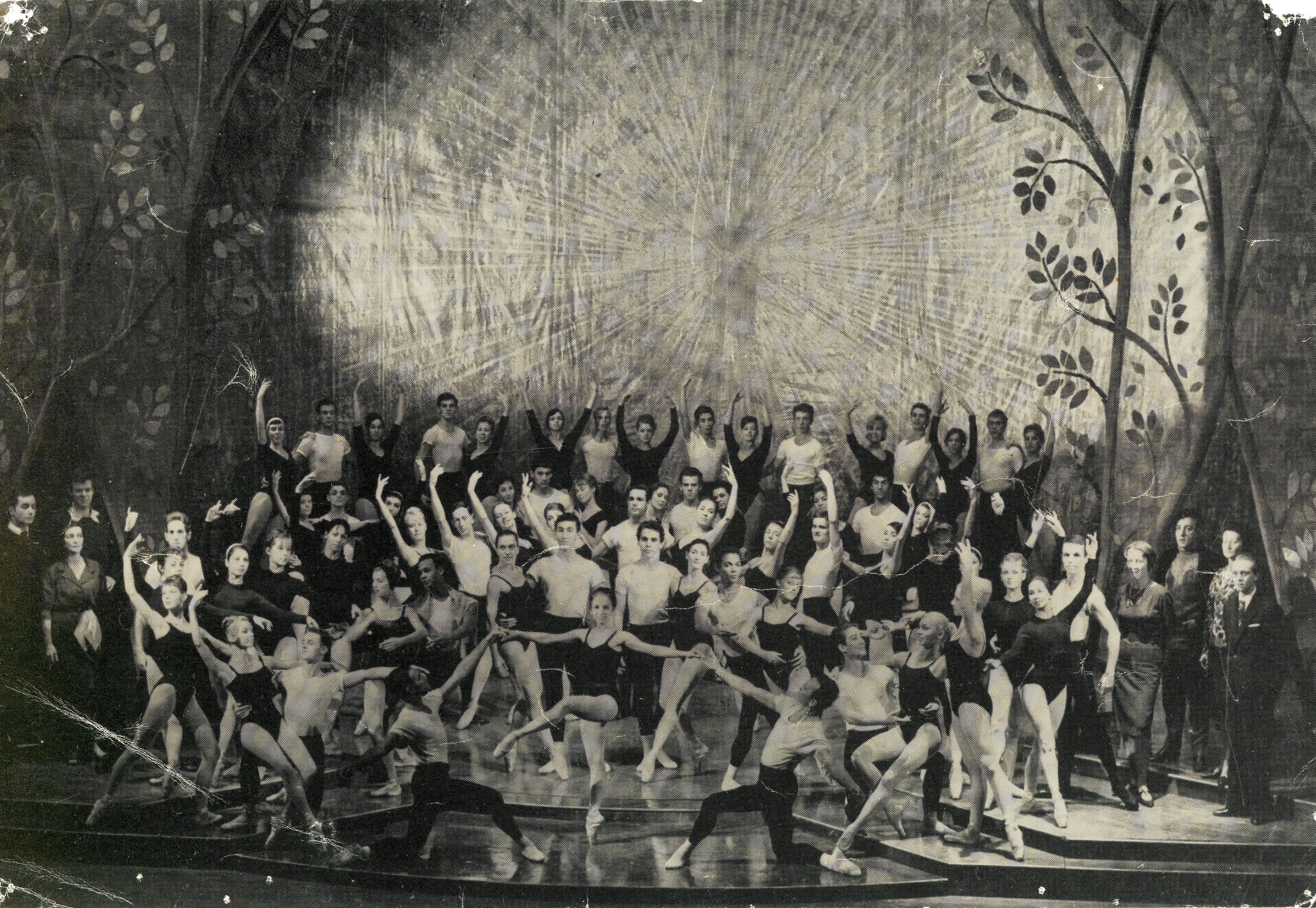
Foundation
Dutch National Ballet is founded on 31 August 1961 through a merger of the Nederlands Ballet (led by Sonia Gaskell) and the Amsterdams Ballet (led by Mascha ter Weeme), employing 89 dancers at its inception. Gaskell takes on the position of artistic director and Ter Weeme is responsible for the company’s participation in the productions by De Nederlandse Operastichting.
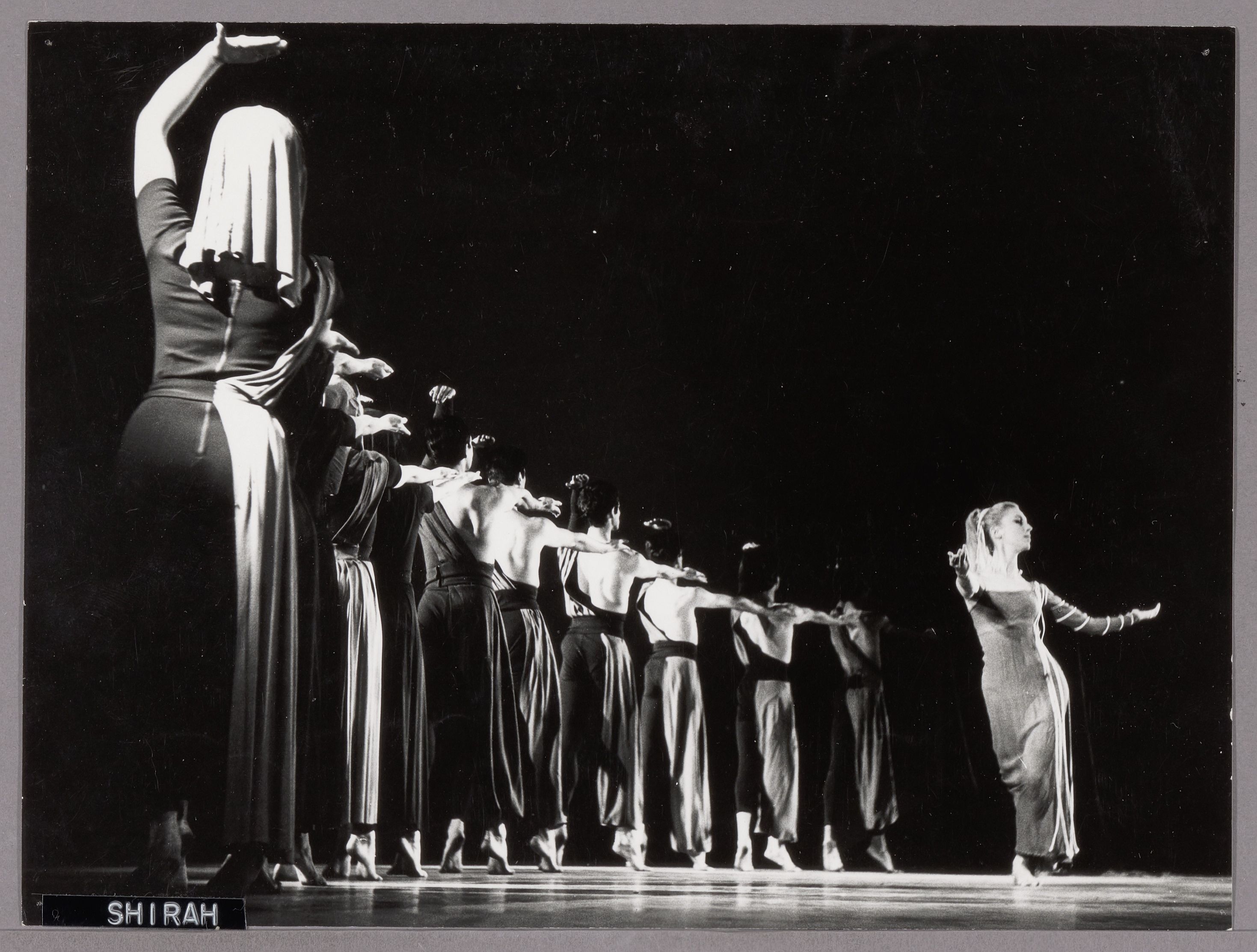
Thirty-six premieres in the first season
In its first season, the company adds no fewer than 36 works to its repertoire. Most of them are taken over from the Nederlands Ballet, the forerunner of Dutch National Ballet, led by Gaskell.
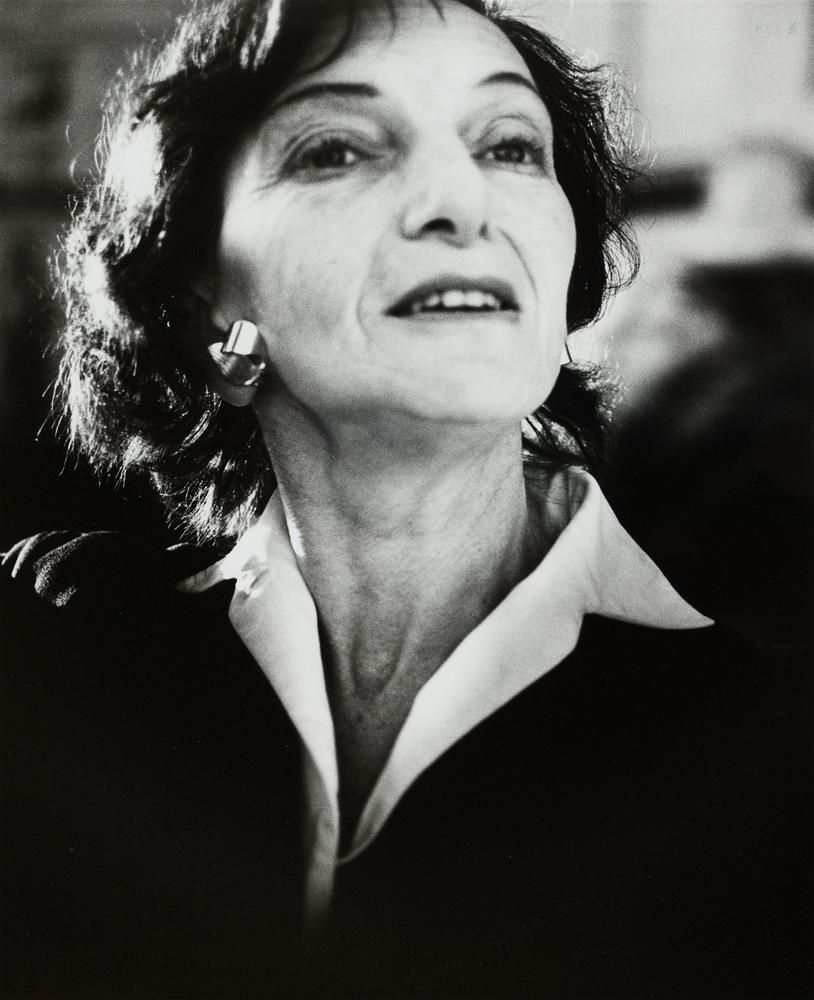
Resident choreographers
Rudi van Dantzig and Robert Kaesen are both appointed resident choreographers.
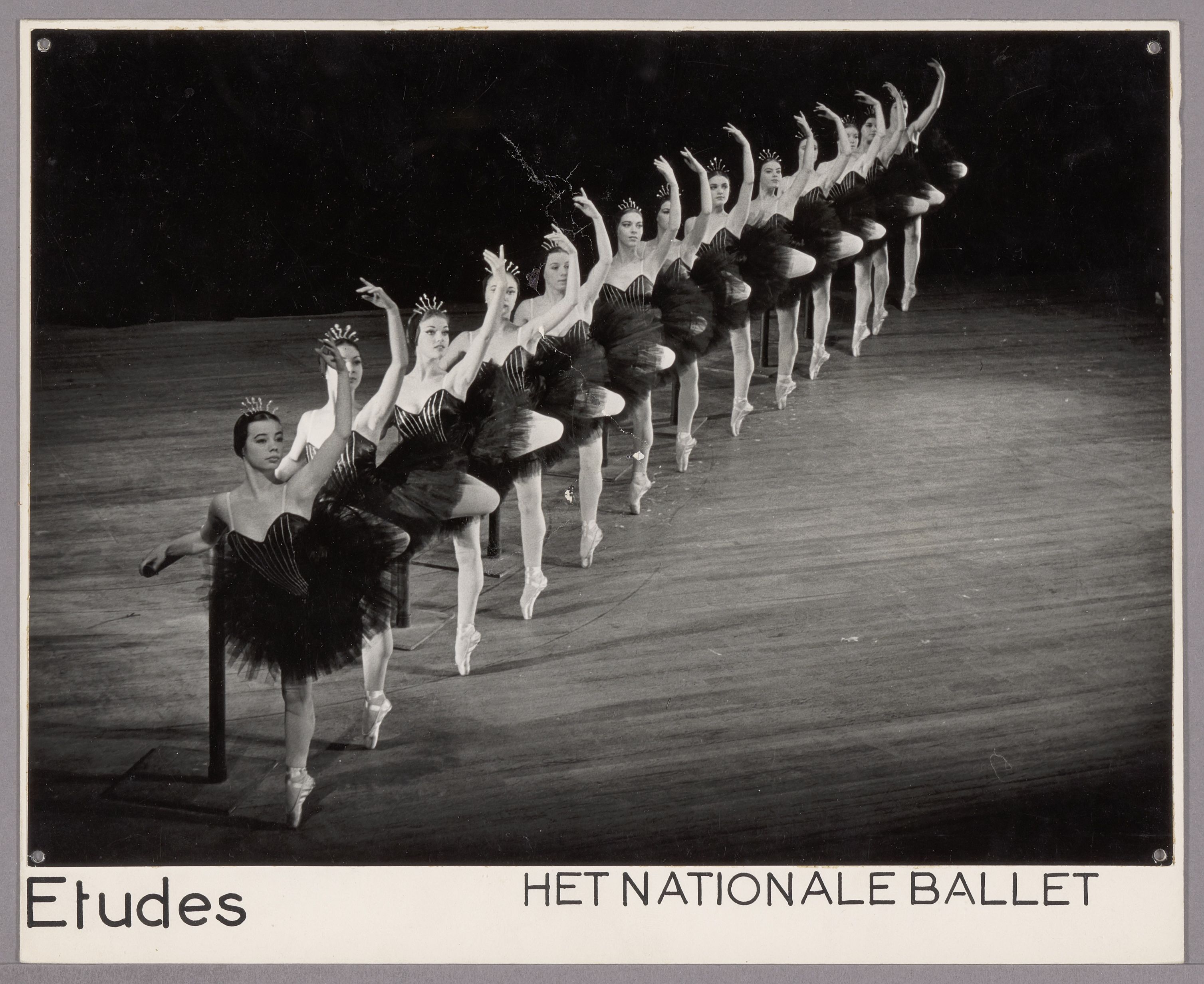
Three-cornerstone policy
Gaskell immediately unfolds her ‘three-cornerstone vision’, which actually still forms the basis for Dutch National Ballet’s artistic policy today. In the first season already, the company presents a combination of excerpts from the big classical ballets, highlights of the 20th-century ballet repertoire and new creations.
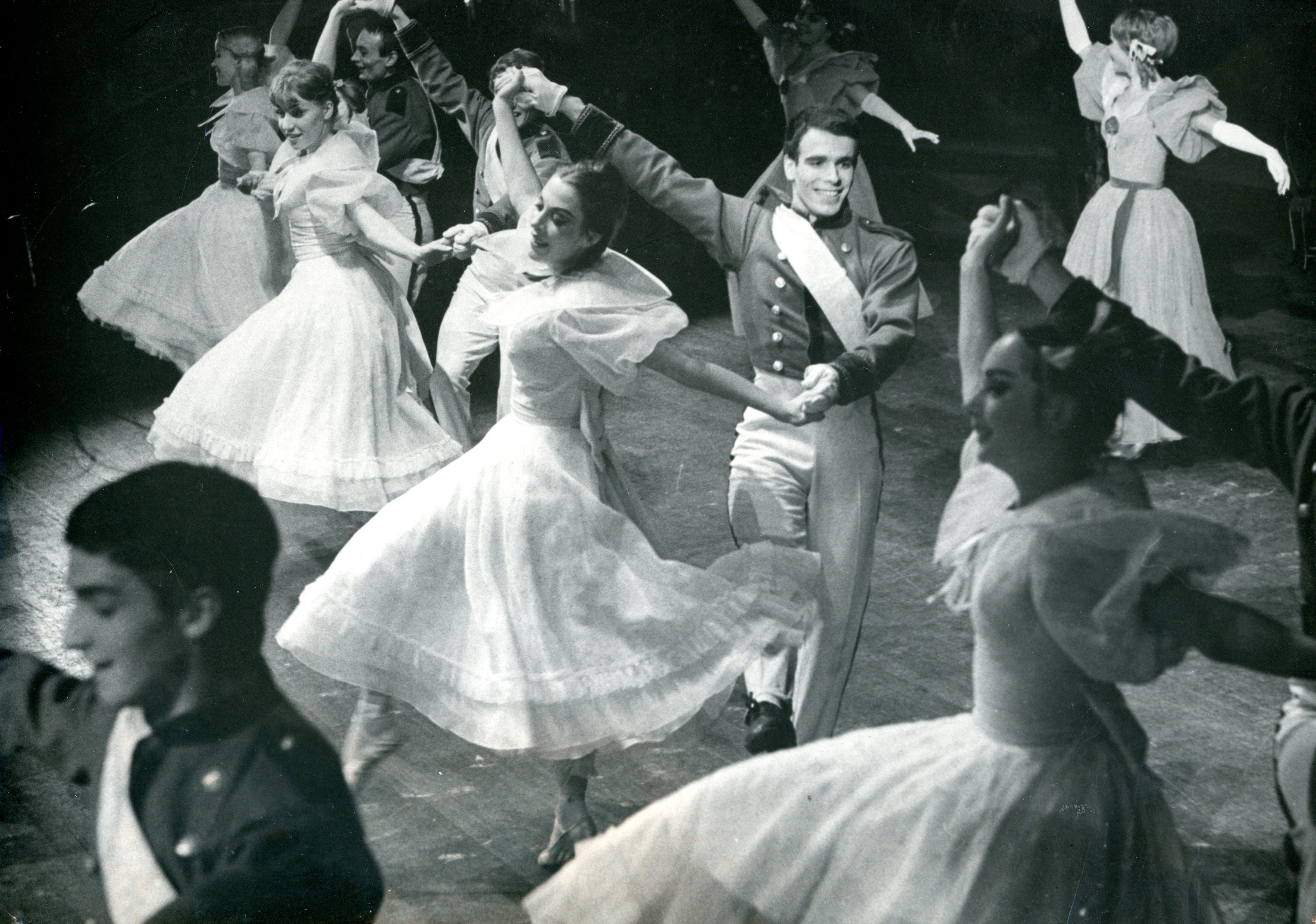
First performance
The first performance takes place on 16 September in the Stadsschouwburg Amsterdam (nu ITA), where the company is housed from then on.
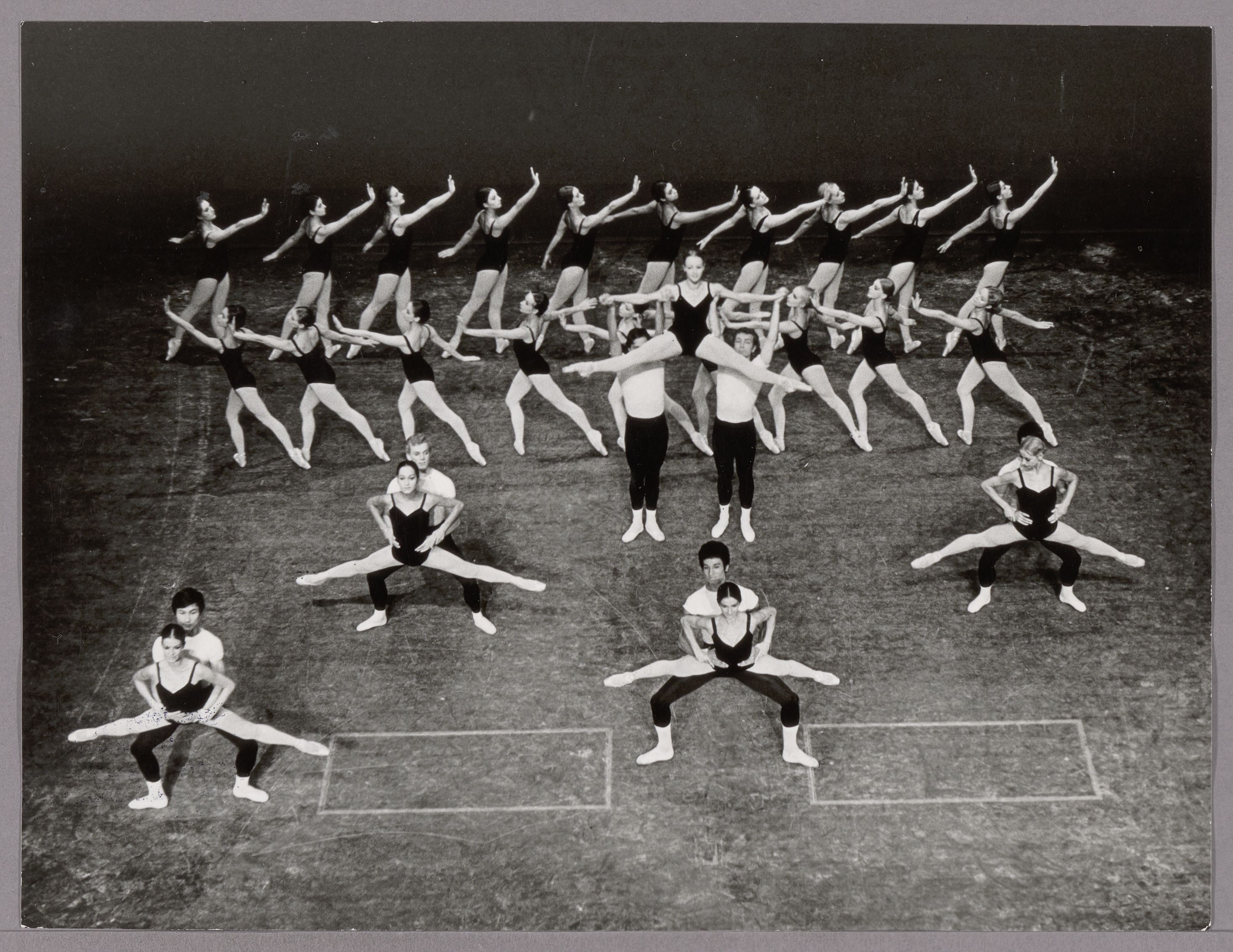
An eye for major talent from abroad
No fewer than five works by George Balanchine are danced in the first season (Dutch National Ballet will soon emerge as the leading custodian of the repertoire of the repertoire of the Russian-American master) and one work by Maurice Béjart.
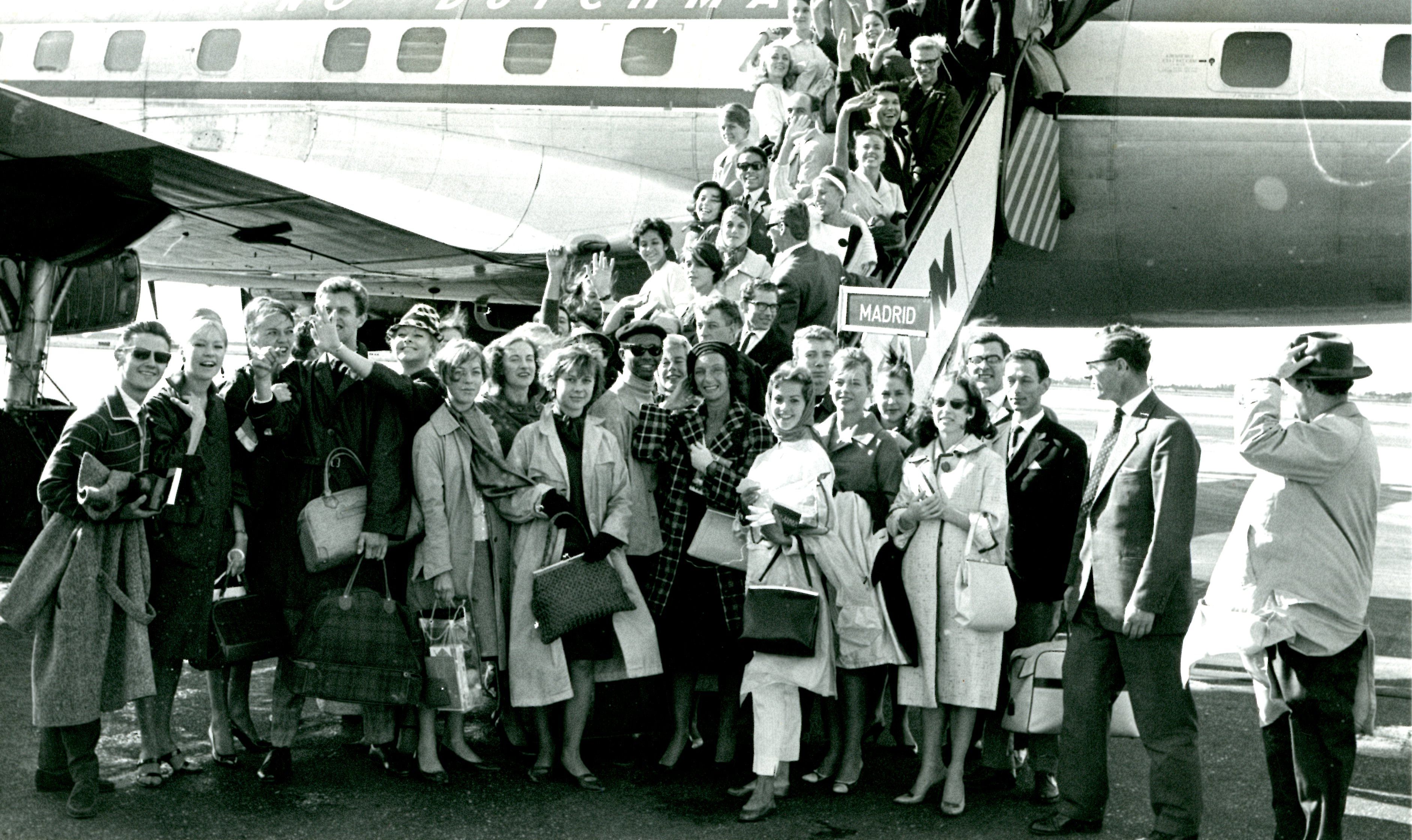
First tour
Shortly after its foundation, the company travels to Madrid (see photo) for its first tour. In the first season, the company gives a total of 30 performances in Spain and Spanish Morocco, in addition to performances in Germany and France.
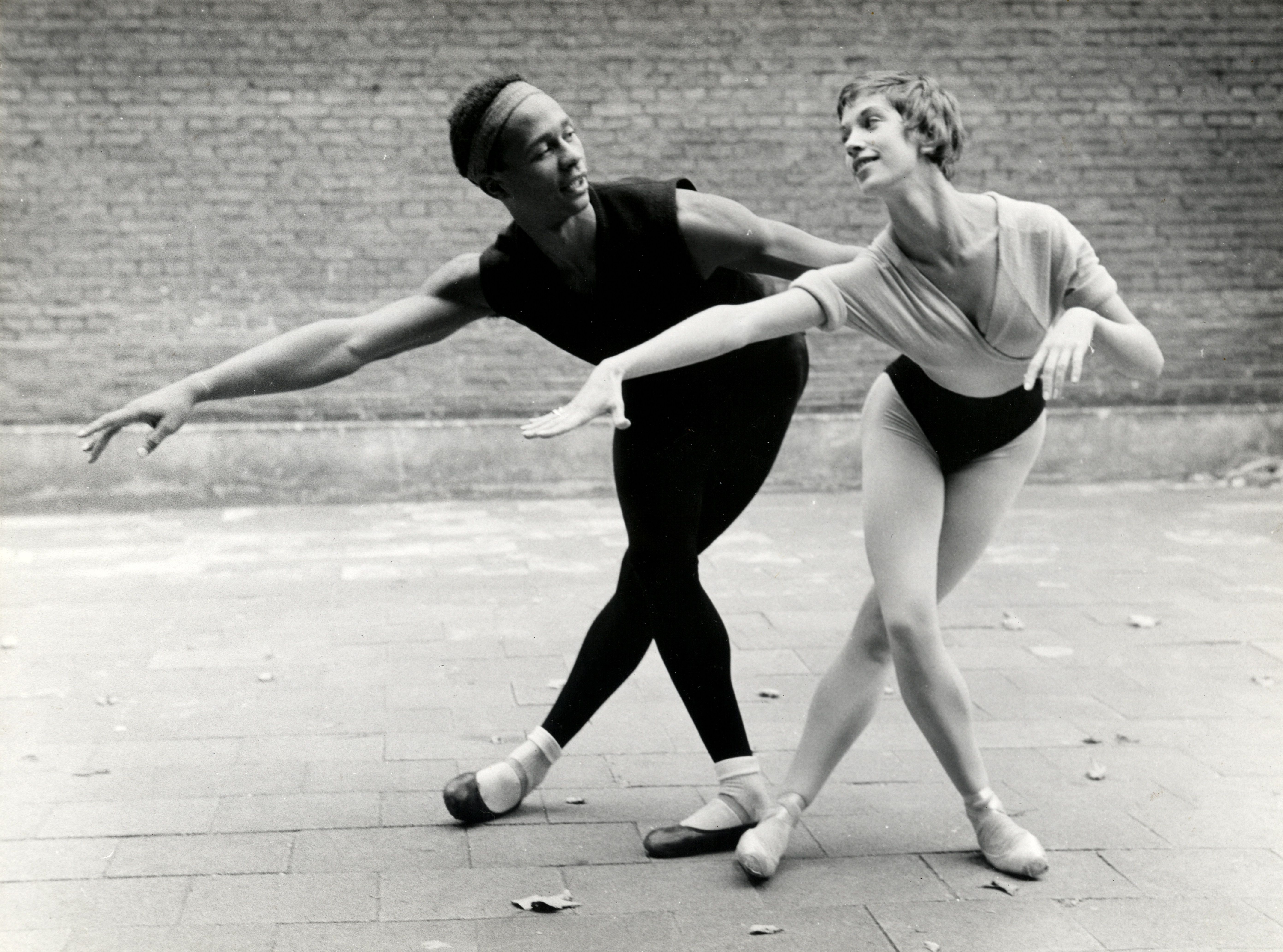
Black principal dancers
From the start, Dutch National Ballet has two black principal dancers, Sylvester Campbell and Billy Wilson; a unique situation at the time. Other black principals soon follow, including Benjamin Feliksdal (a member of the company from the start) and Raven Wilkinson.
62 / 63
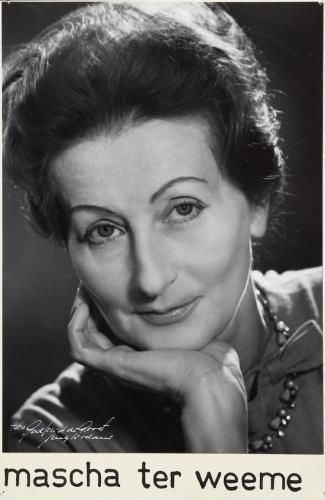
Mascha ter Weeme leaves
Following a long period of sick leave, Mascha ter Weeme is laid off and leaves the company. From then on, Sonia Gaskell becomes sole artistic director.
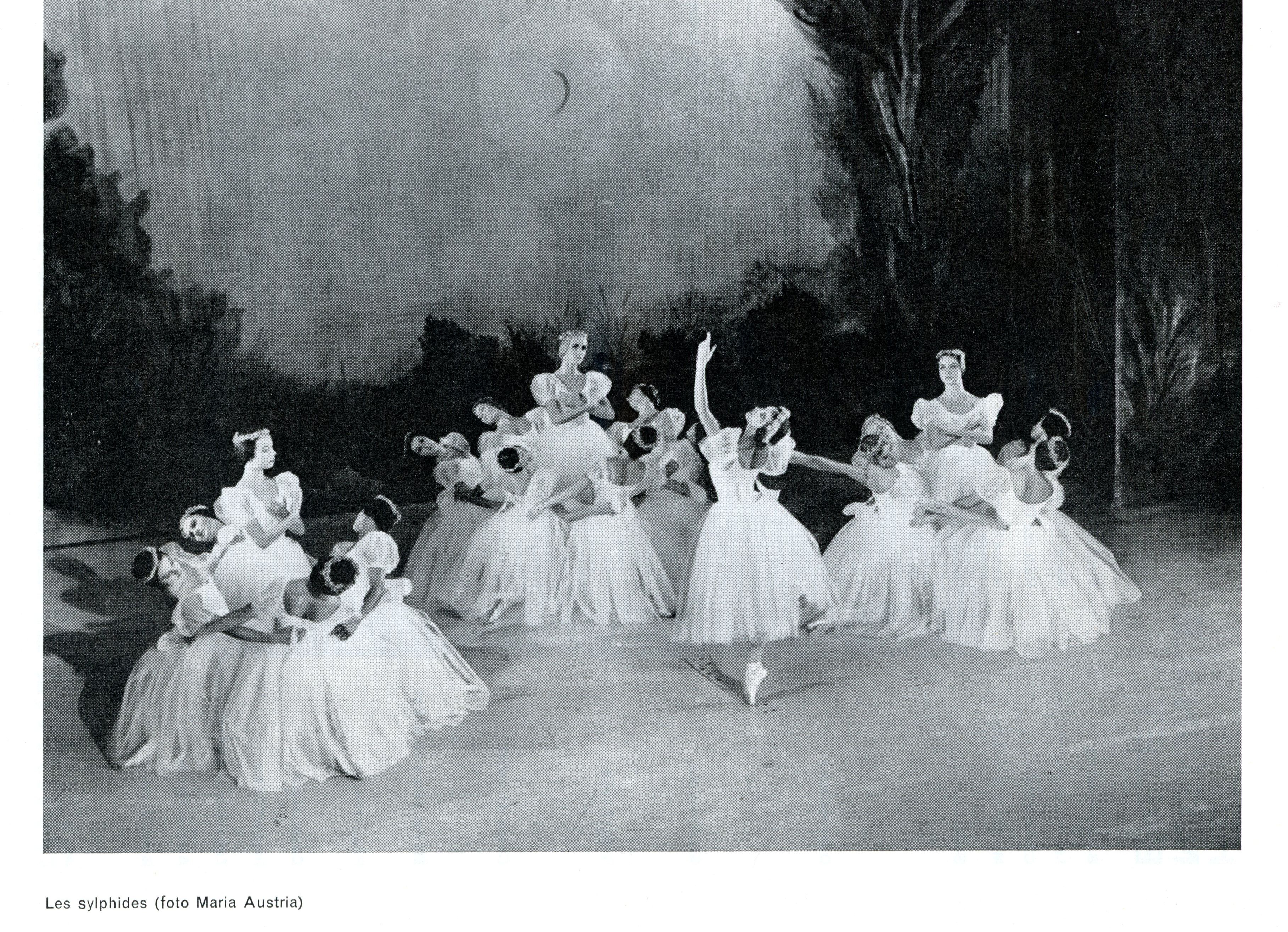
First full-length production
The first full-length production is taken into the repertoire: La Sylphide, based on the original by August Bournonville from 1836, in a version by the Danish Bournonville specialist Harold Lander.
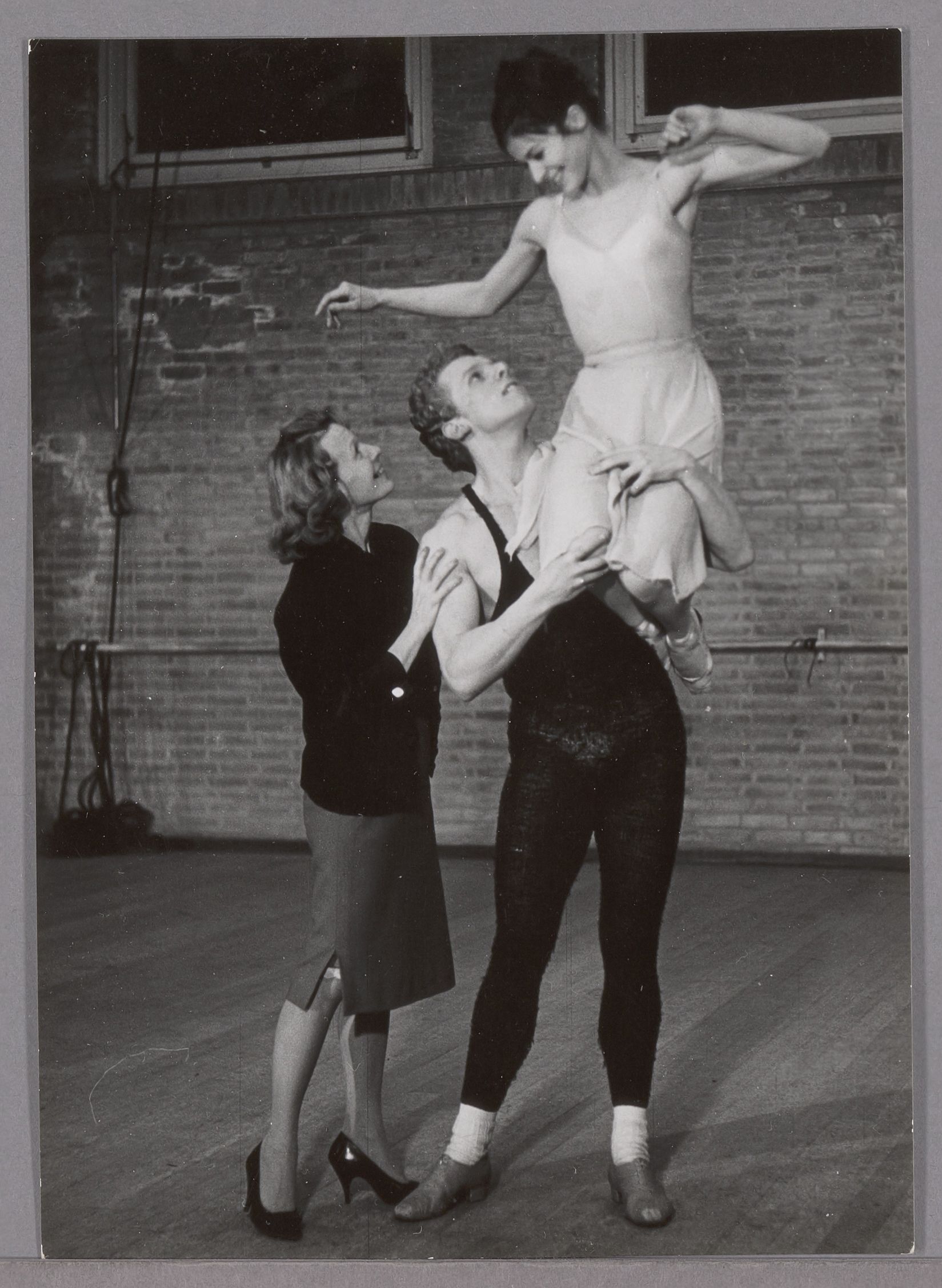
Soviet Russian ballet style
Gaskell (of Russian origin herself) brings the Russian ballet mistress Natalia Orlovskaya to the Netherlands, believing it is important to train dancers in the Soviet Russian ballet style.
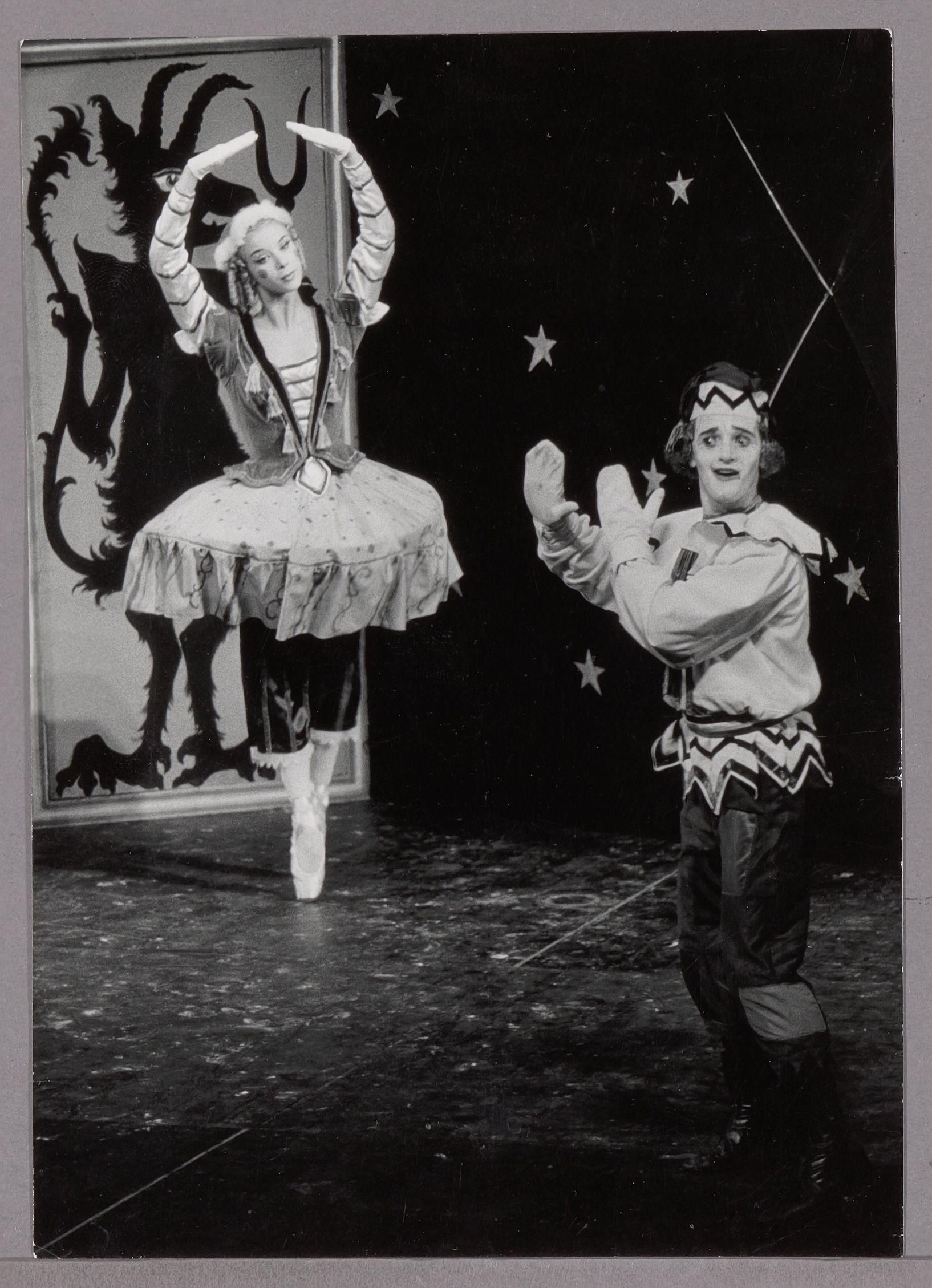
Petrushka
Another important addition to the repertoire (taken over from the Nederlands Ballet) is Petrushka, created by Michel Fokine in 1911 for Diaghilev’s Ballets Russes. It is one of the first successful examples of a narrative ballet in just one act.
63 / 64
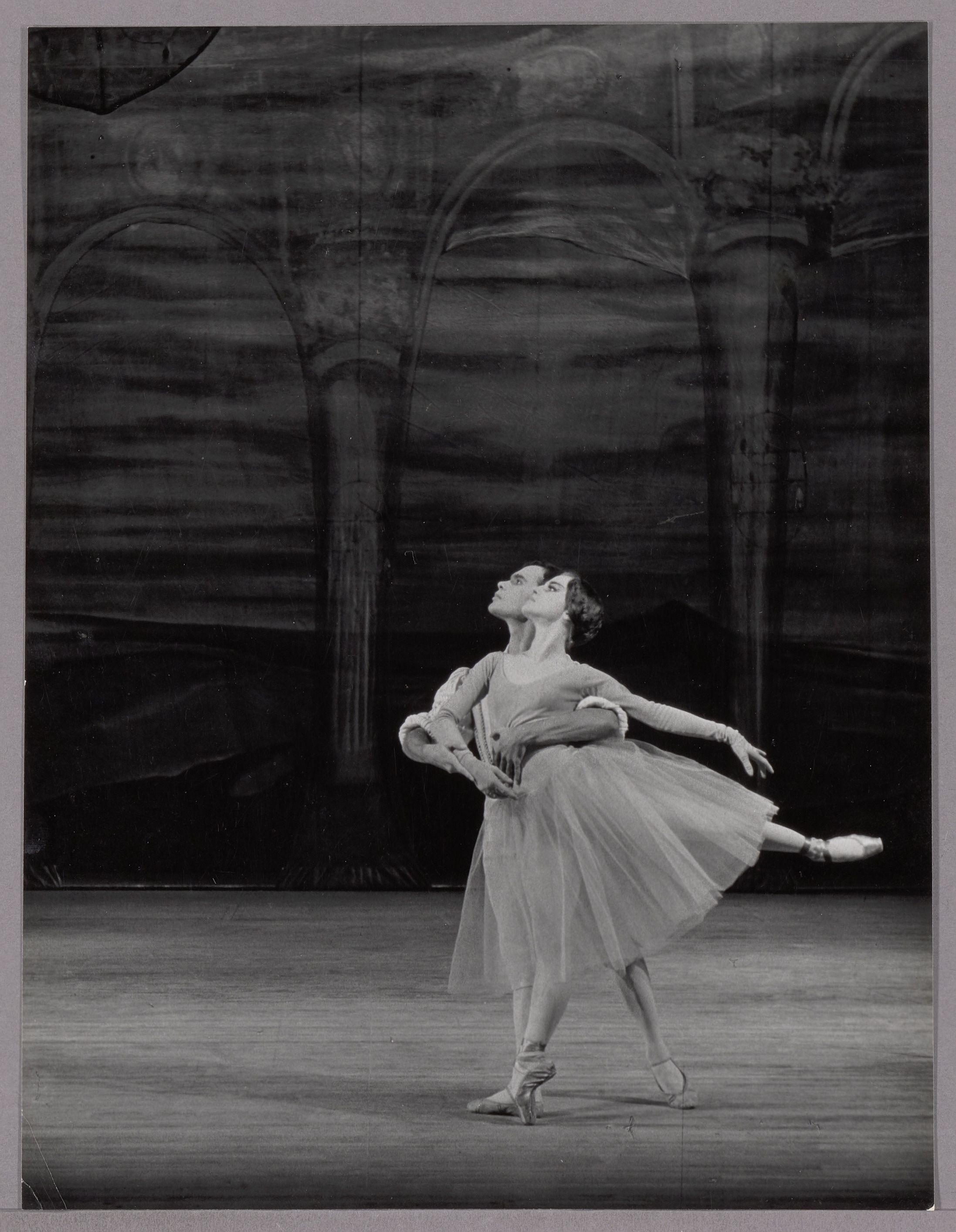
Marianne Hilarides
Principal dancer Marianne Hilarides has to leave the company, following a conflict with Gaskell. Hilarides is regarded as one of the most talented dancers of her generation and referred to as the first prima ballerina of Dutch origin.
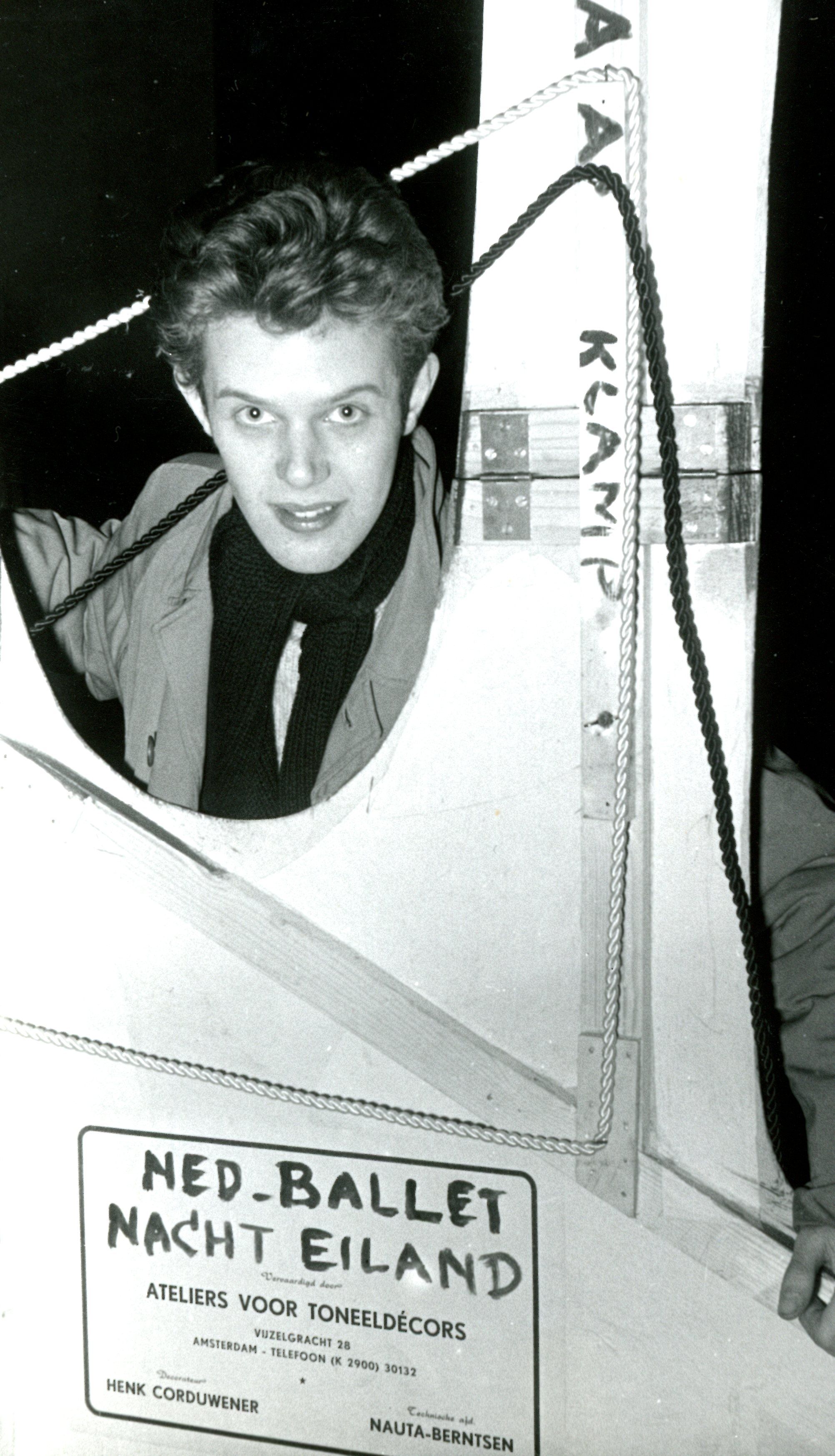
Nachteiland
One of the new works in the repertoire is Nachteiland (taken over from the Nederlands Ballet). Rudi van Dantzig makes his debut as a choreographer with this ballet in 1955.
64 / 65
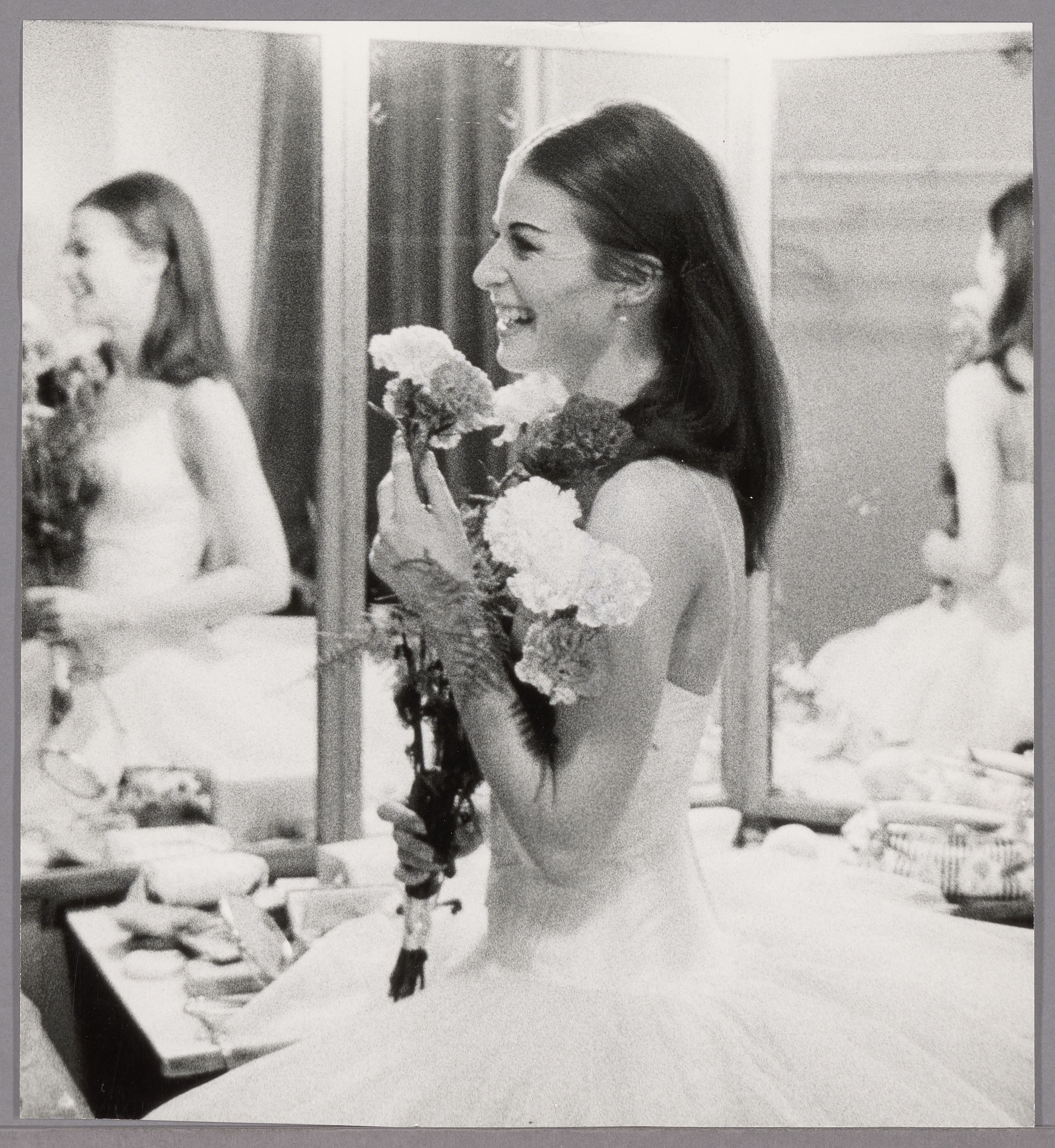
Olga de Haas
Olga de Haas (1944-1978) is promoted to principal dancer at the age of 19. The promising star and audience favourite goes on to become a legendary Dutch ballerina.
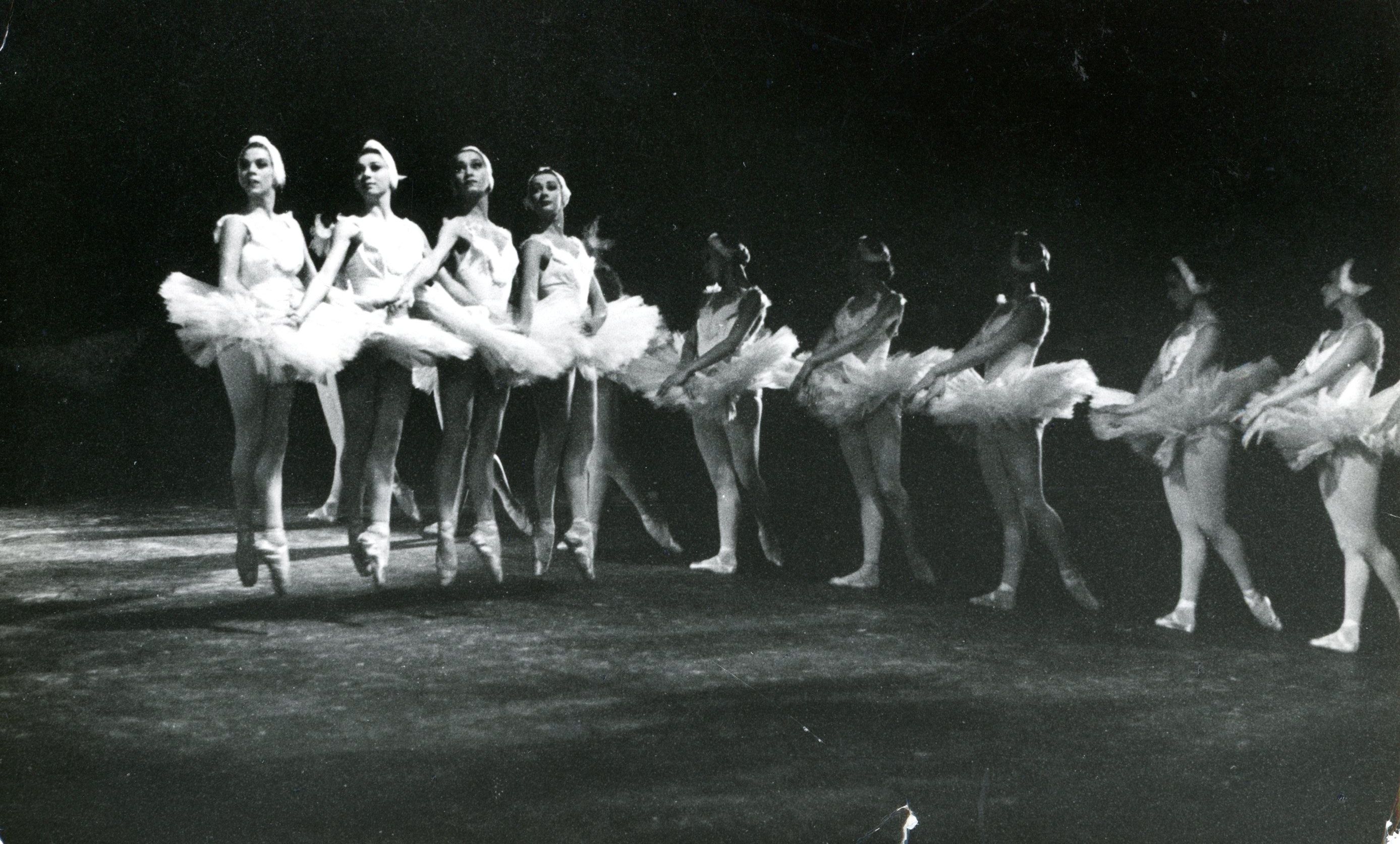
First Swan Lake
In March 1965, Dutch National Ballet’s first complete production of Swan Lake is premiered, in a version by the Russian choreographer Igor Belski.
Severance scheme
Dutch National Ballet is the first Dutch company (and until 1986 the only one) to set up a severance scheme to provide financial assistance to dancers at the end of their dancing career.
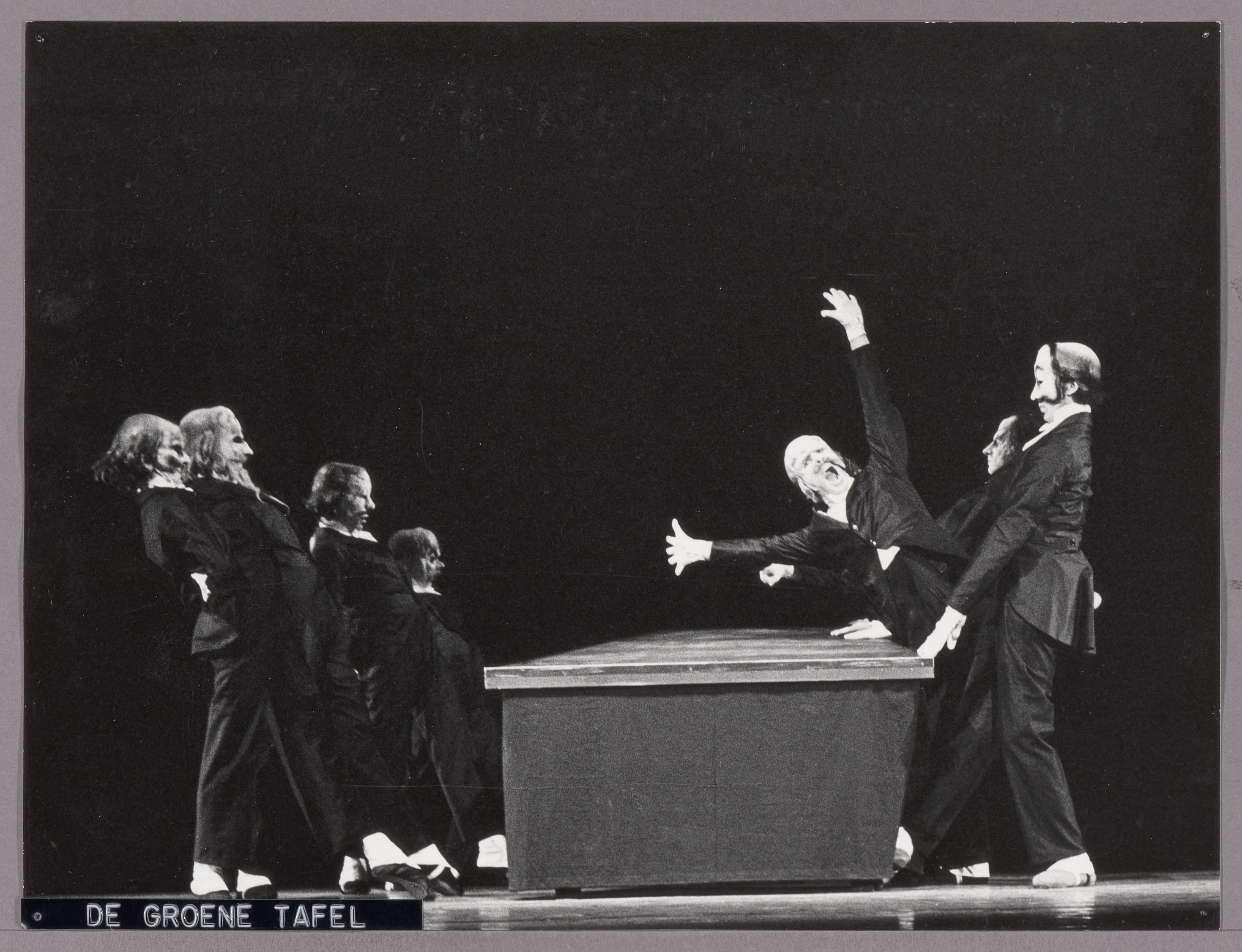
The Green Table
Another important acquisition is The Green Table, the gripping ‘anti-war ballet’ by Kurt Jooss (one of the figureheads of German Ausdruckstanz).
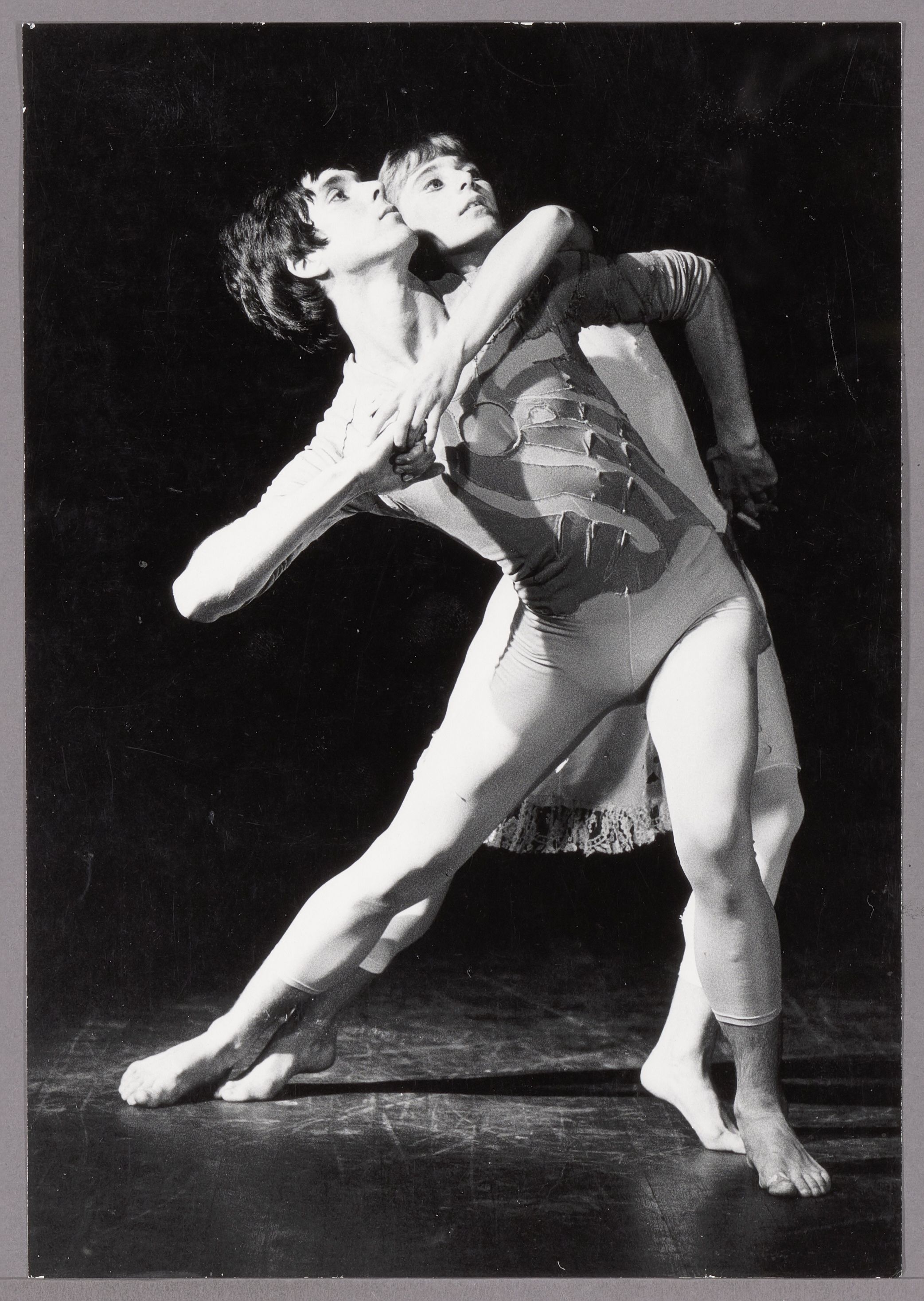
Monument for a Dead Boy
On 19 June 1965, the premiere takes place of Rudi van Dantzig’s Monument for a Dead Boy. The ballet about budding homosexuality – a taboo at the time – gains fame for Van Dantzig. The main role is impressively interpreted by guest artist Toer van Schayk, who joins the company a year later as a soloist.
65 / 66
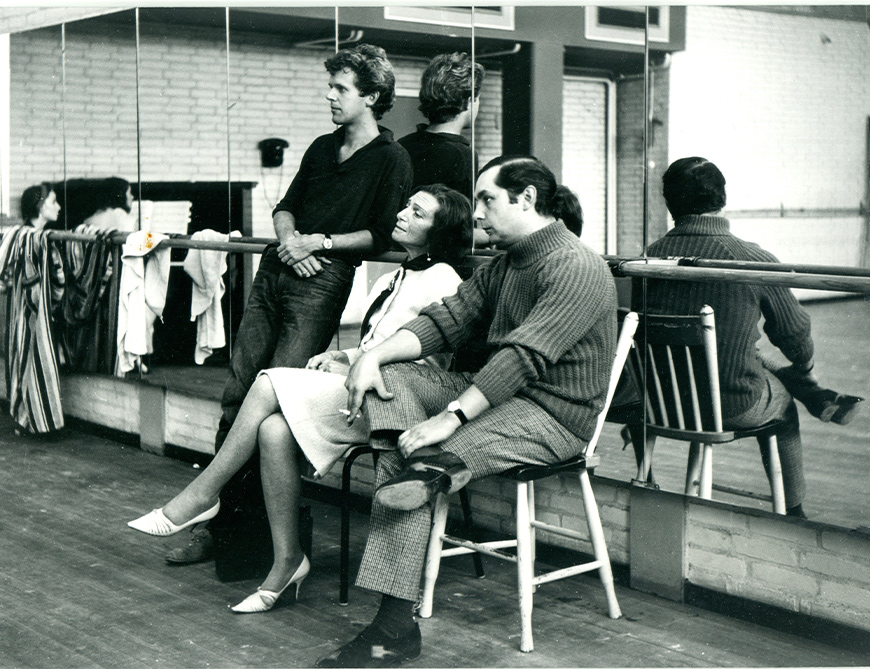
Van Dantzig and Kaesen as artistic directors
Rudi van Dantzig and Robert Kaesen are appointed artistic directors of Dutch National Ballet, alongside Sonia Gaskell.
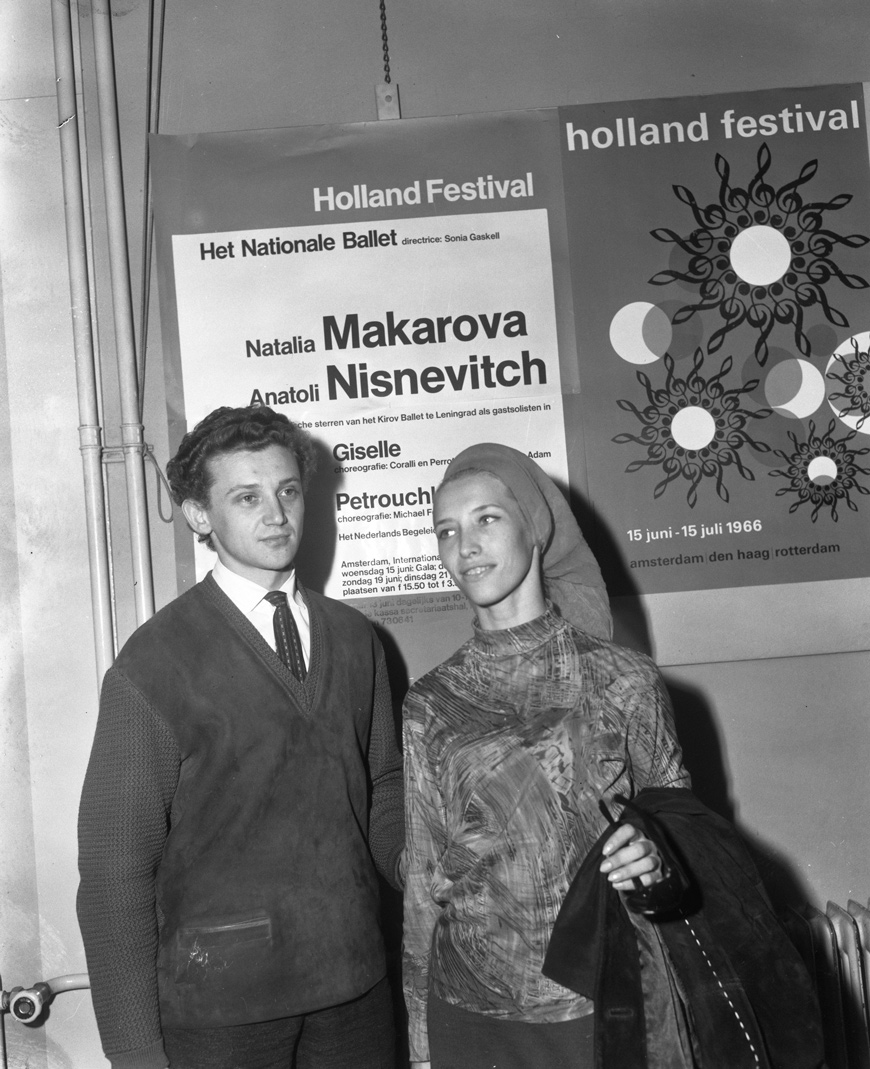
First Giselle
Dutch National Ballet dances its first Giselle, one of the oldest surviving full-length Romantic ballets (from 1841), which is still danced all over the world today. The production is rehearsed by the Russian teacher Natalia Orlovskaya.
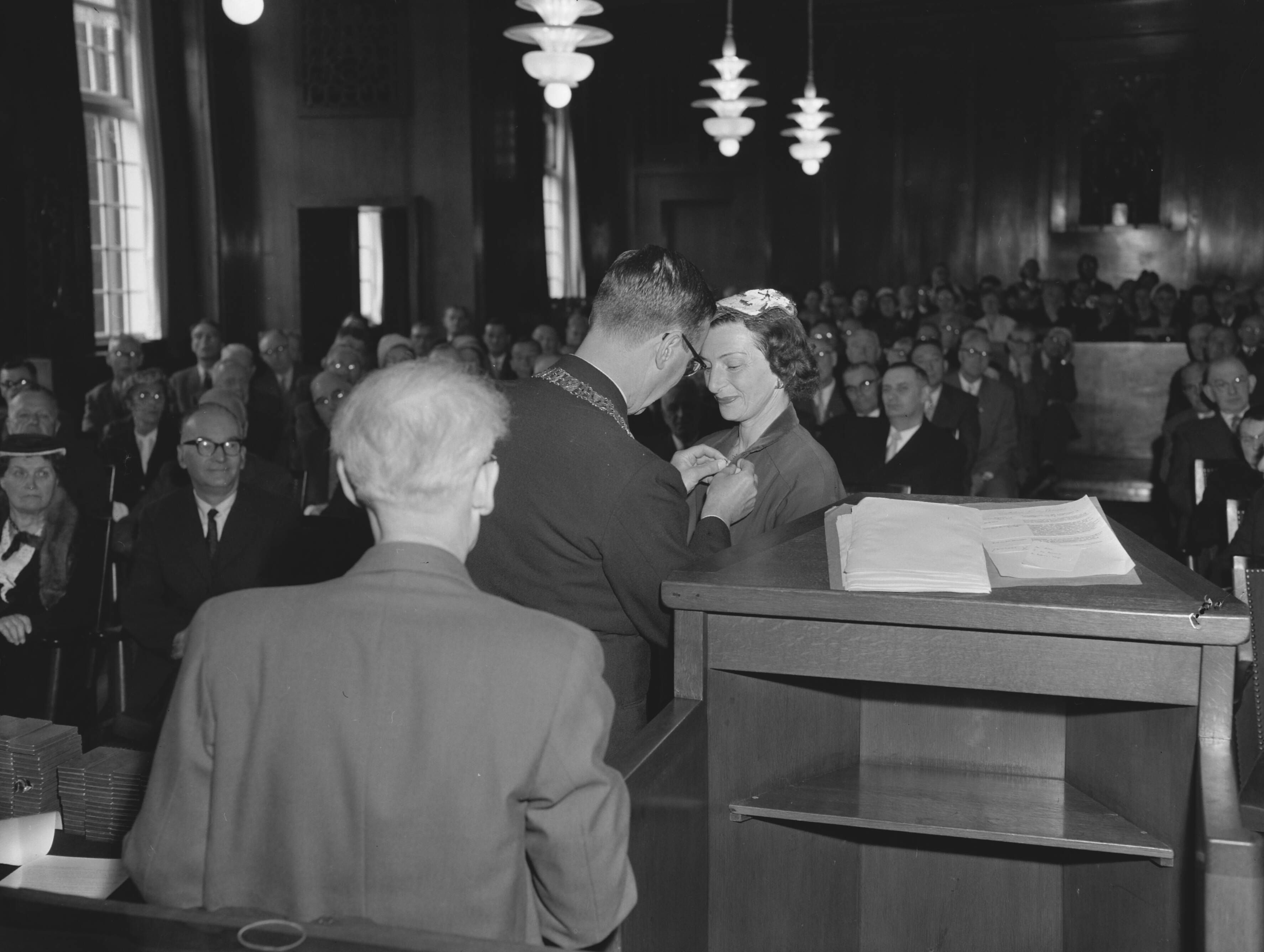
Gaskell’s twentieth anniversary
Gaskell’s 20th anniversary as artistic director (including the forerunners of Dutch National Ballet) is celebrated with a tribute performance, where she is appointed Officer of the Order of Orange-Nassau.
New Balanchines
Two special early Balanchine ballets are acquired: Apollon Musagète (1928) and The Prodigal Son (1929), both created for Diaghilev’s Ballets Russes. This brings the number of Balanchine works in Dutch National Ballet’s repertoire to eight (nowadays the total is 33).
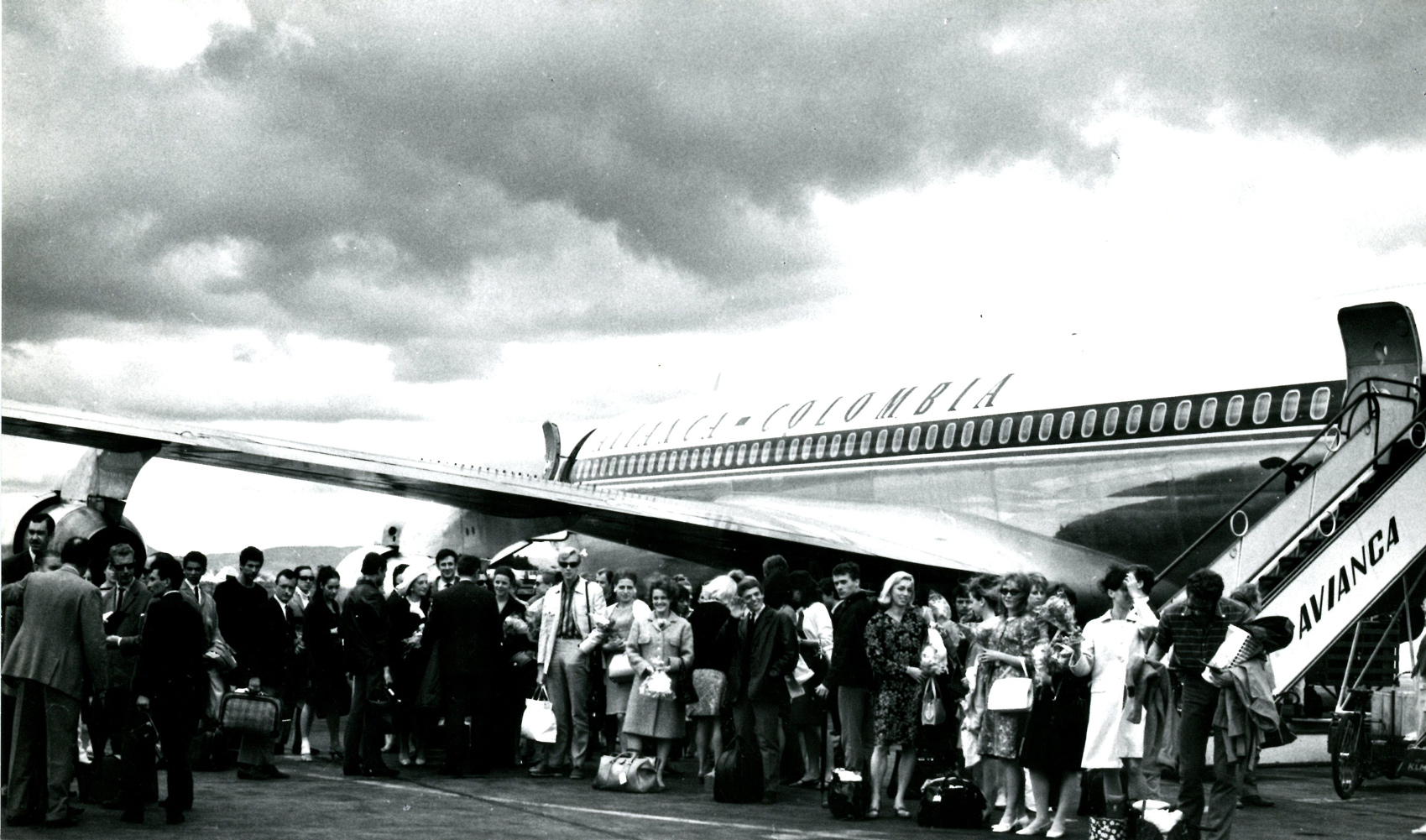
First tour outside Europe
Dutch National Ballet goes over the borders of Europe for the first time, giving 11 performances in Buenos Aires, six in Bogotá, three in Puebla (Mexico) and six in Lima.
Foundation of Dutch Ballet Orchestra
Dutch Ballet Orchestra is founded. Today, the orchestra still provides the musical accompaniment to performances by Dutch National Ballet and Nederlands Dans Theater.
66 / 67
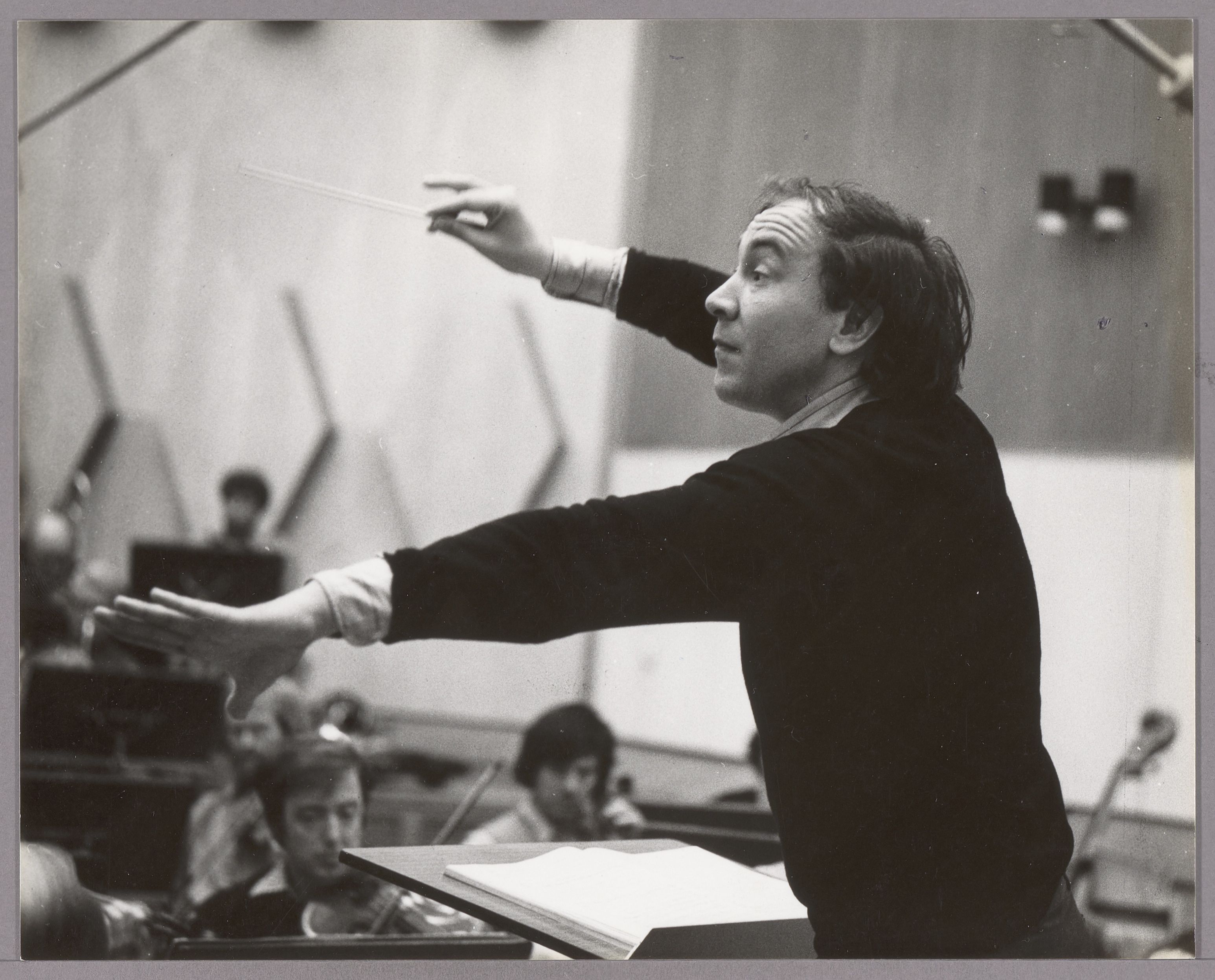
Conductors
Alongside musical director André Presser (associated with Dutch National Ballet since its foundation), Hans Vonk is appointed assistant conductor, remaining in the position for four years.
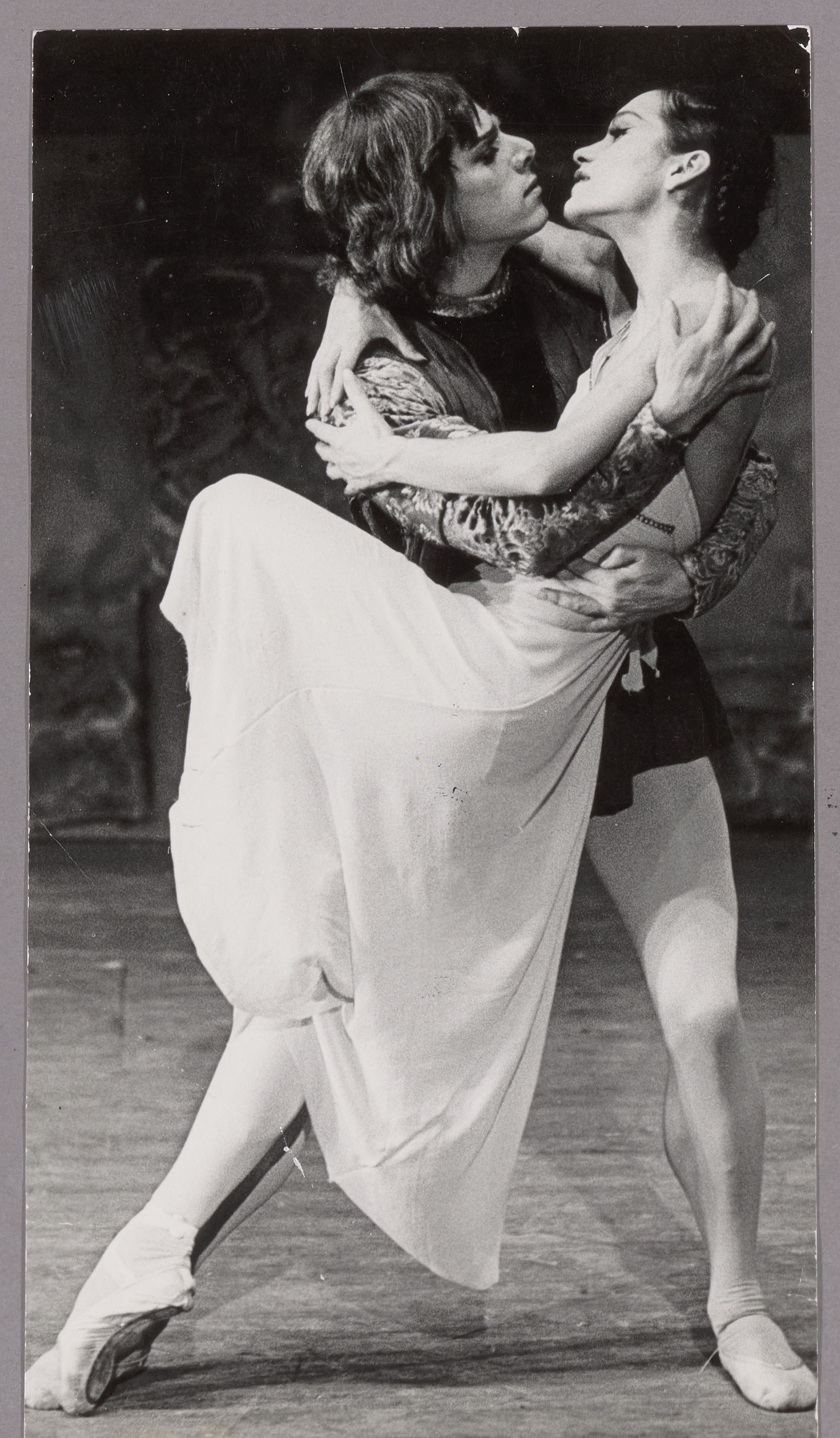
Romeo and Juliet
At the insistence of Sonia Gaskell, Rudi van Dantzig produces the first full-length ballet created in the Netherlands: Romeo and Juliet, based on Shakespeare’s famous love tragedy. Although Van Dantzig initially finds the task a difficult one, the ballet is to grow into one of the company’s biggest audience hits of all time.
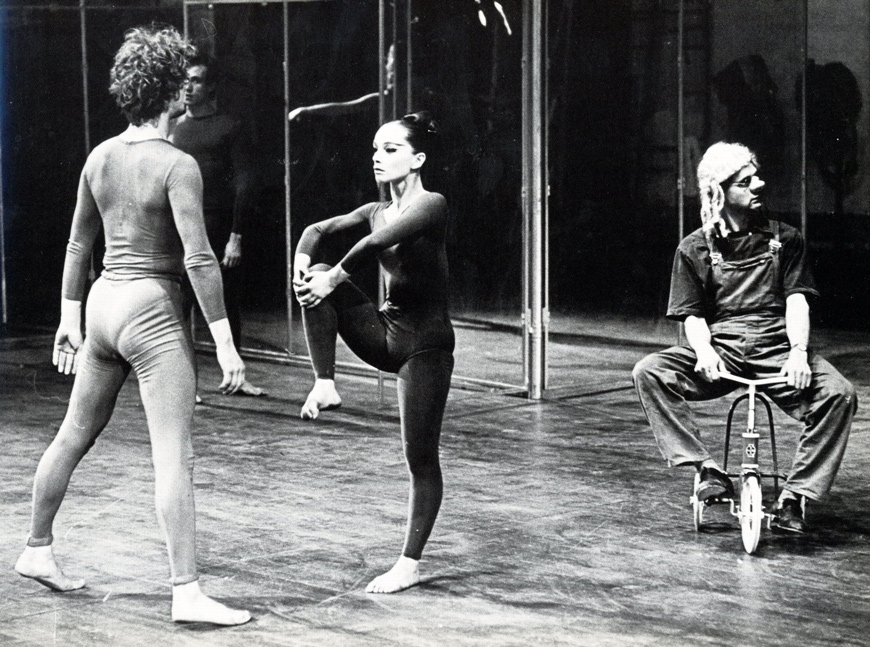
Premiere scandal
At the end of the season, Gaskell’s preference for experiment reaches a high point according to some, and a low point according to others, with the world premiere of Koert Stuyf’s postmodern work Visibility… By Chance. Dozens of audience members walk out, fruit is thrown at the stage and one audience member even runs on stage and tears up his programme.
67 / 68
Advisory position for Gaskell
At her own request, artistic director Sonia Gaskell takes up an advisory position, but leaves following an internal conflict. From then on, the company’s artistic directors are the resident choreographers Rudi van Dantzig and Robert Kaesen.
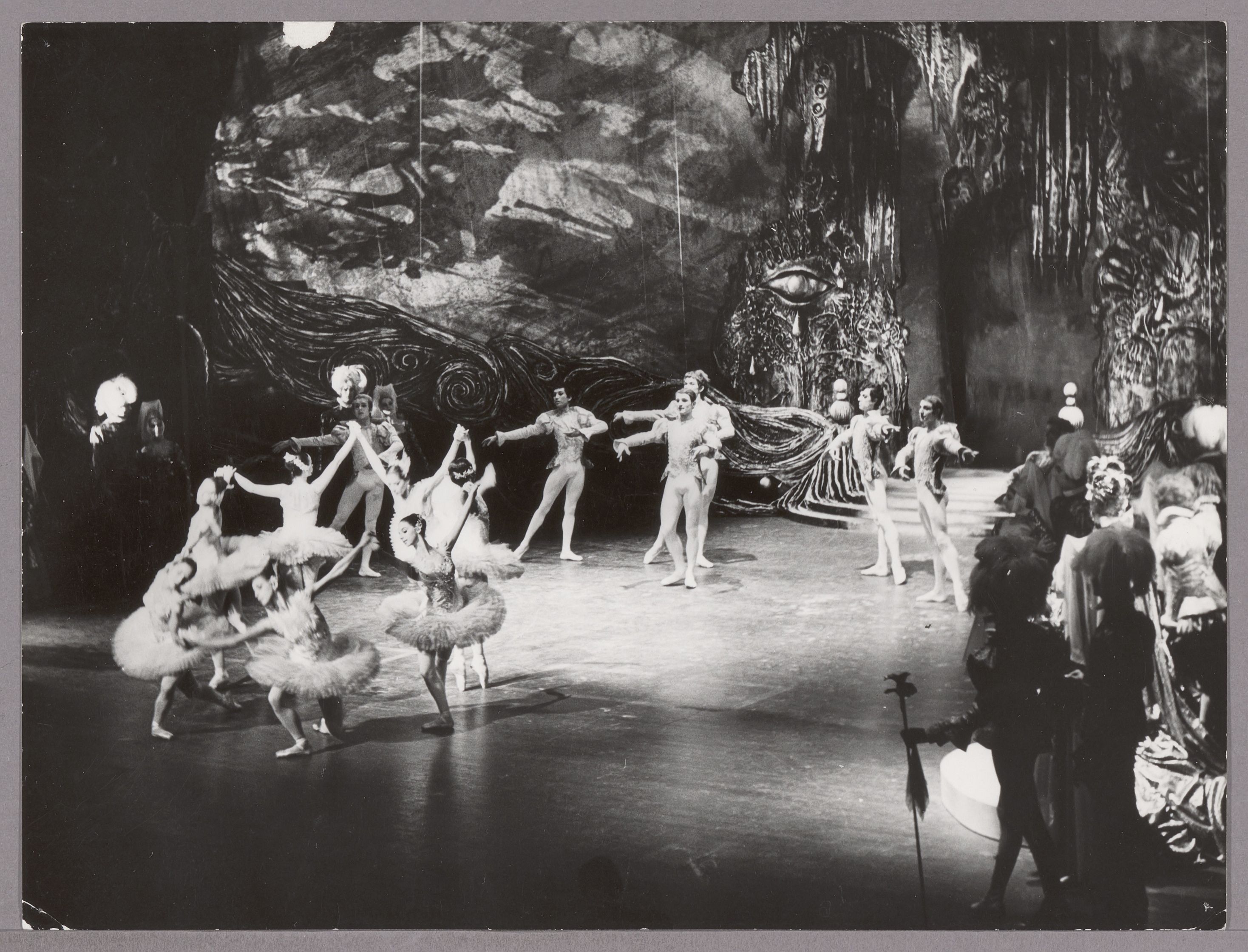
The Sleeping Beauty
Dutch National Ballet presents its first production of The Sleeping Beauty, in a very distinctive version by the Polish choreographer Conrad Drzewiecki. Just three well-known fragments of the original choreography by Marius Petipa are retained (rehearsed by Roland Casenave).
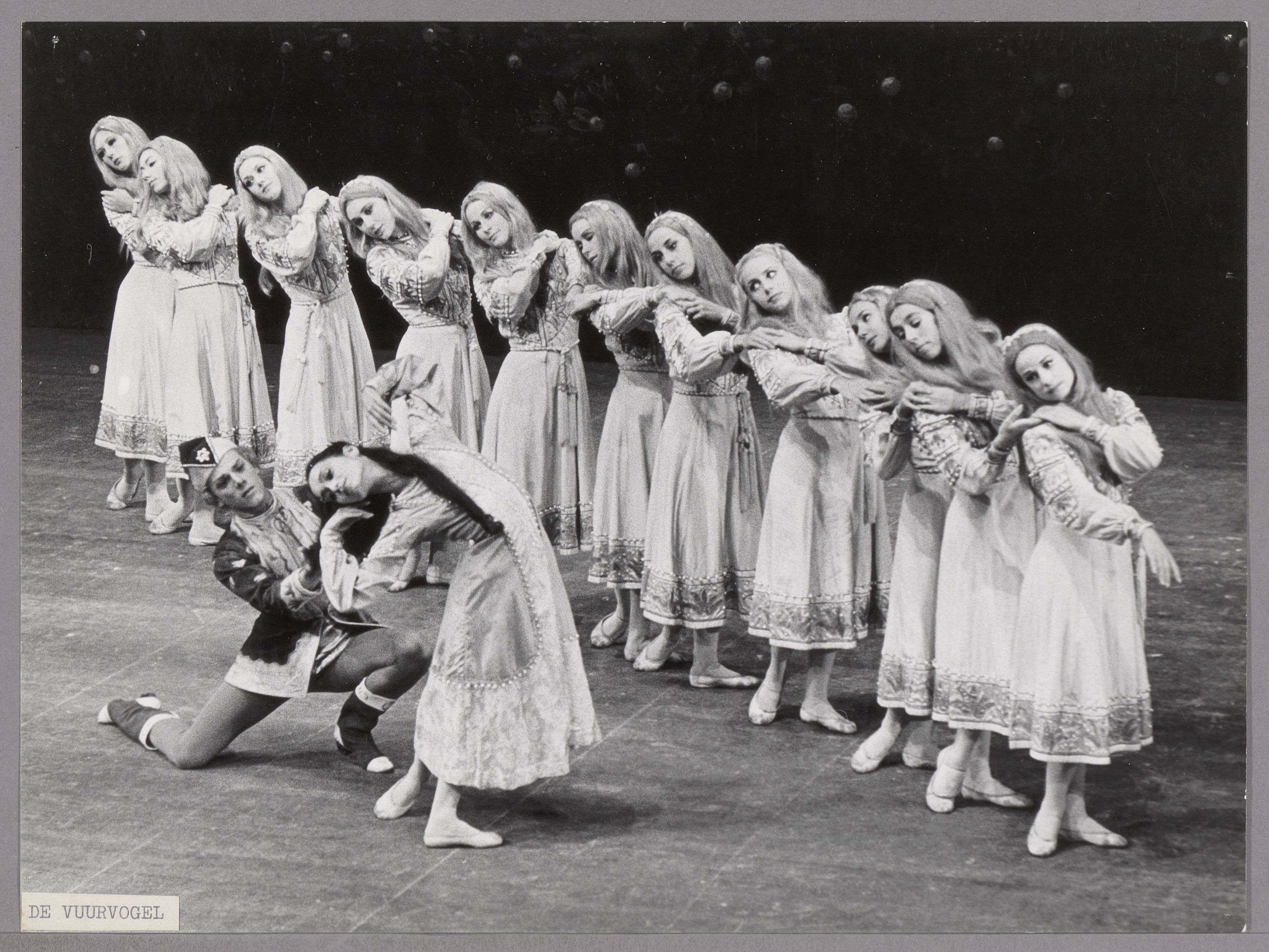
Firebird
Other prominent acquisitions in this season are Michel Fokine’s fairy-tale ballet The Firebird, with a starring role for principal dancer Maria Koppers, and Ivesiana and La valse by George Balanchine.
68 / 69
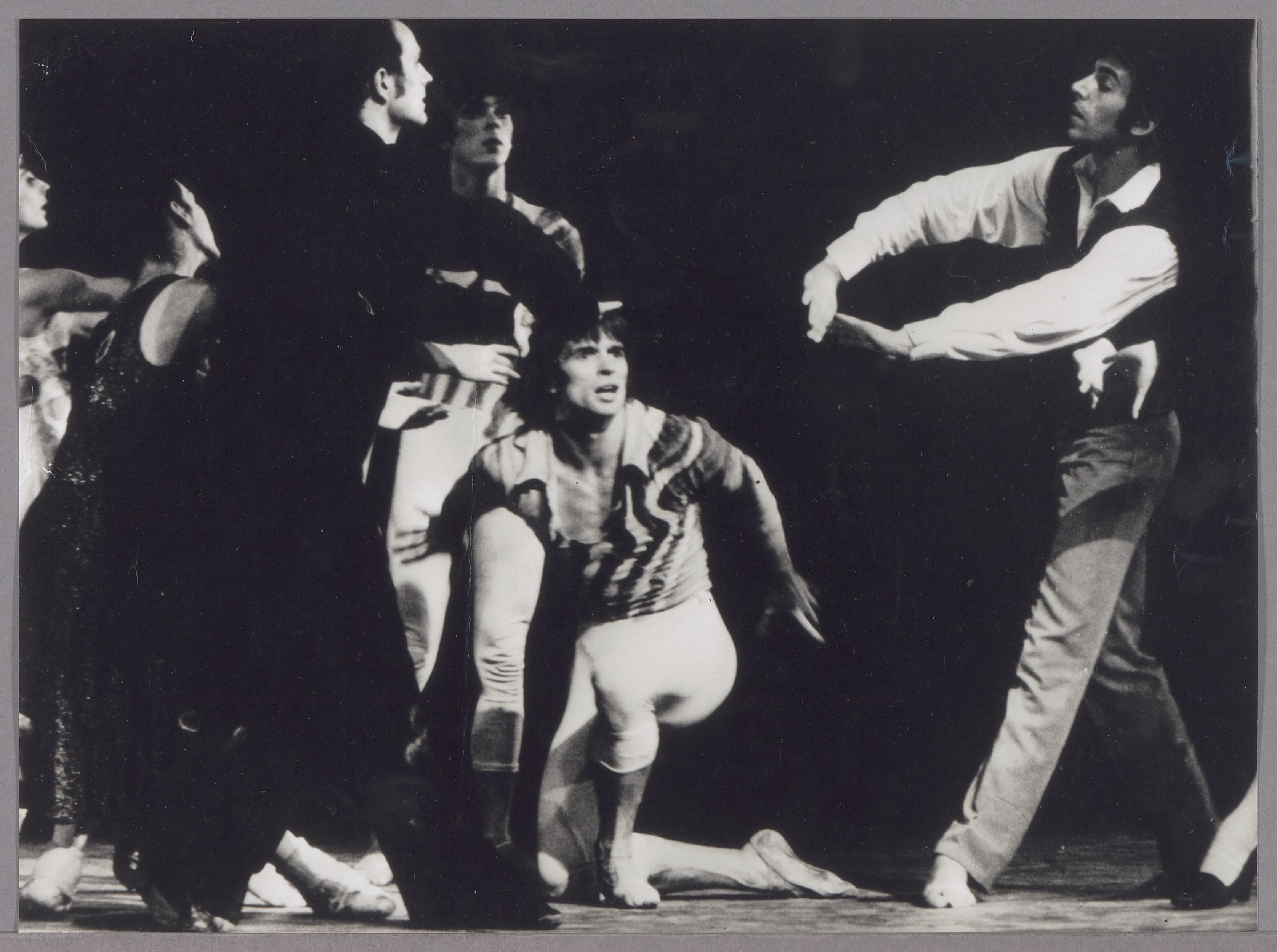
Rudolf Nureyev
The Russian star dancer Rudolf Nureyev makes his first guest appearances with Dutch National Ballet, in the Grand Pas de Deux from The Nutcracker (with the French étoile Noëlla Pontois), in Giselle (with Olga de Haas) and – at his own express request – in Van Dantzig’s Monument for a Dead Boy. Nureyev’s association with Dutch National Ballet, which was to continue into the late seventies, brought international fame to the company.
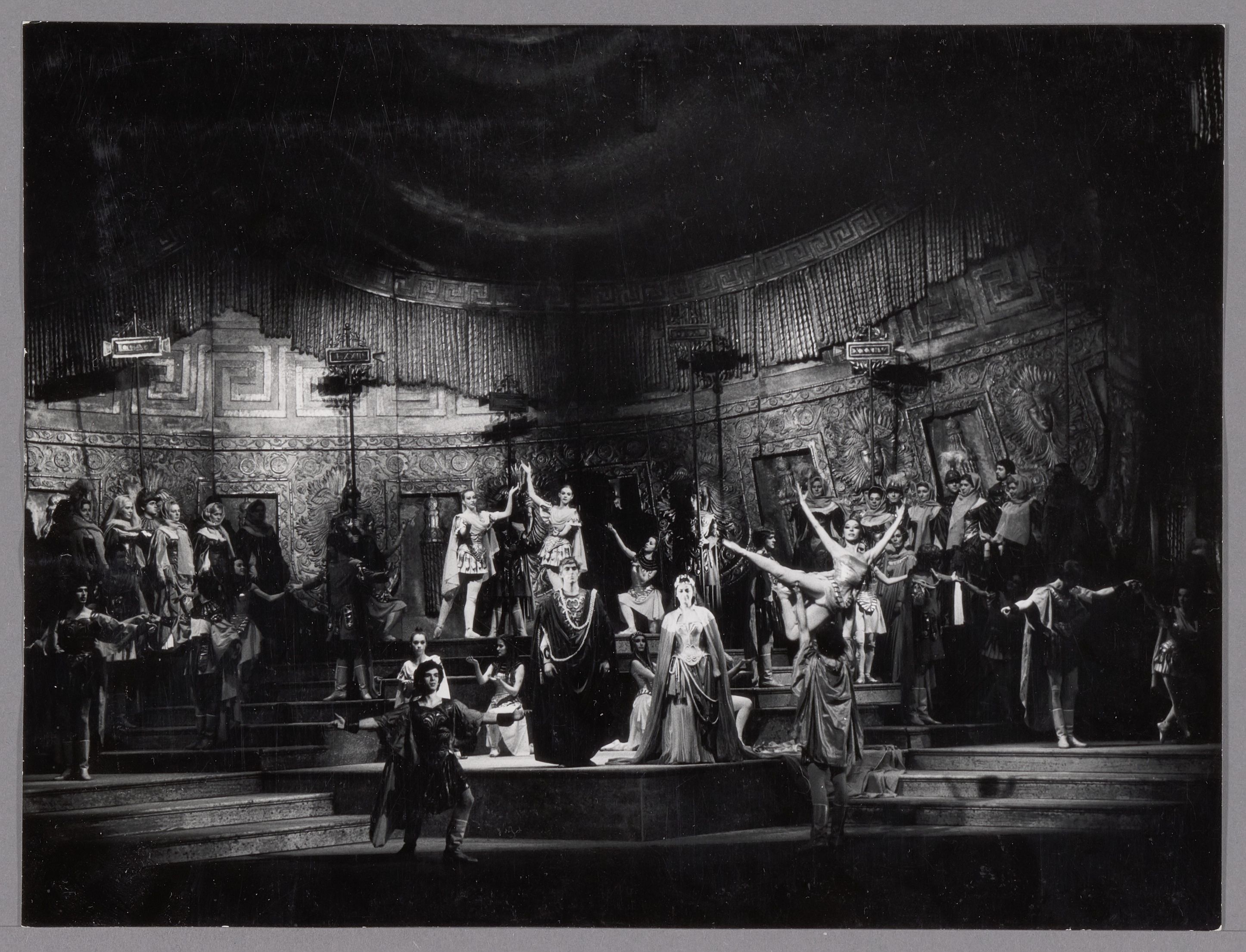
Opera productions
This season, Dutch National Ballet dancers take part in a record number of productions by De Nederlandse Operastichting (now Dutch National Opera): Un ballo in maschera, Carmen, Hänsel und Gretel, Julius Caesar, Das Rheingold, Le rossignol and Der Zigeunerbaron.
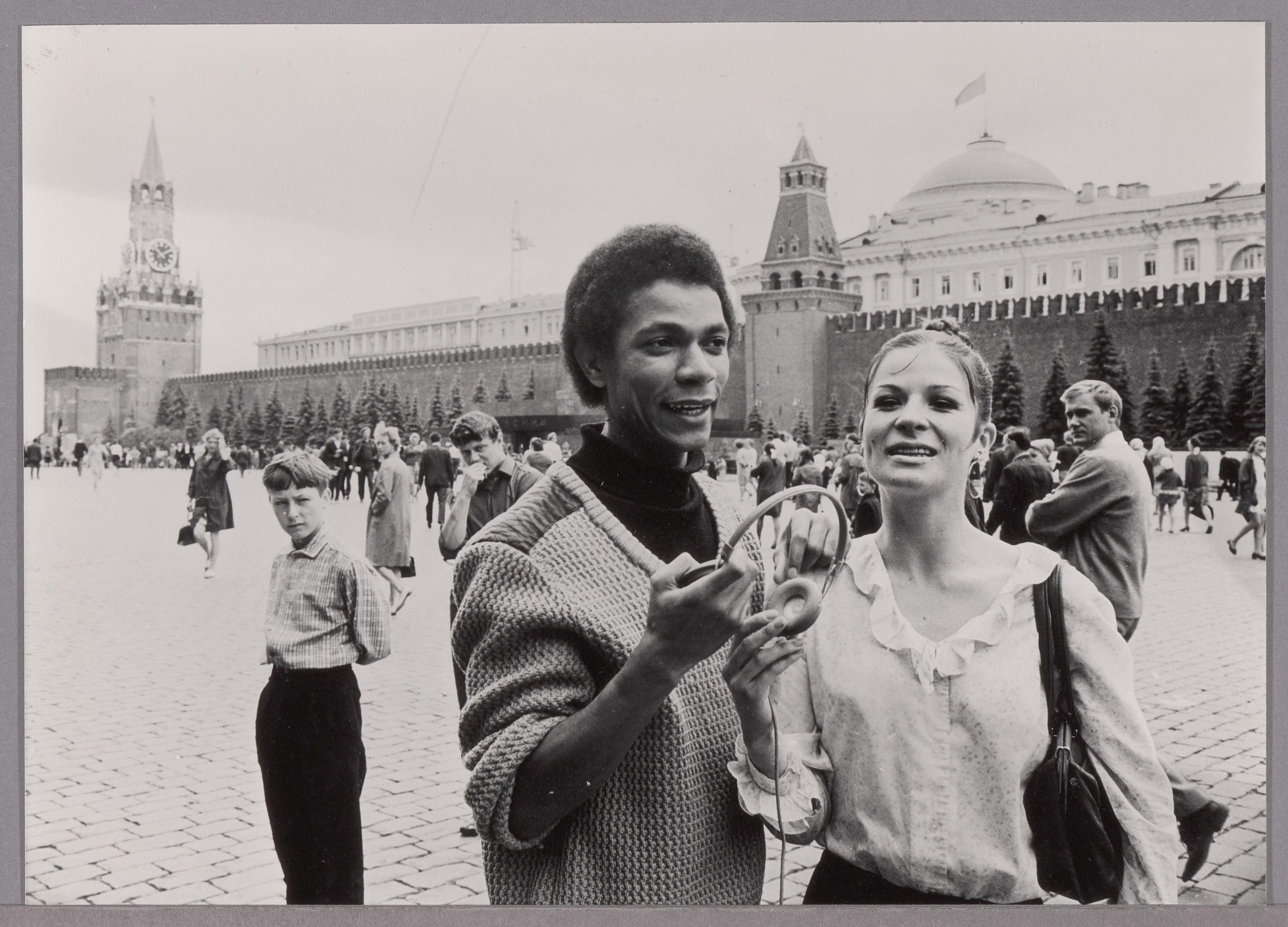
Honorary titles
Rudi van Dantzig is appointed Knight of the Order of Orange-Nassau. Olga de Haas reaches the finals of the International Ballet Competition in Moscow and receives an honourable mention for her performance.
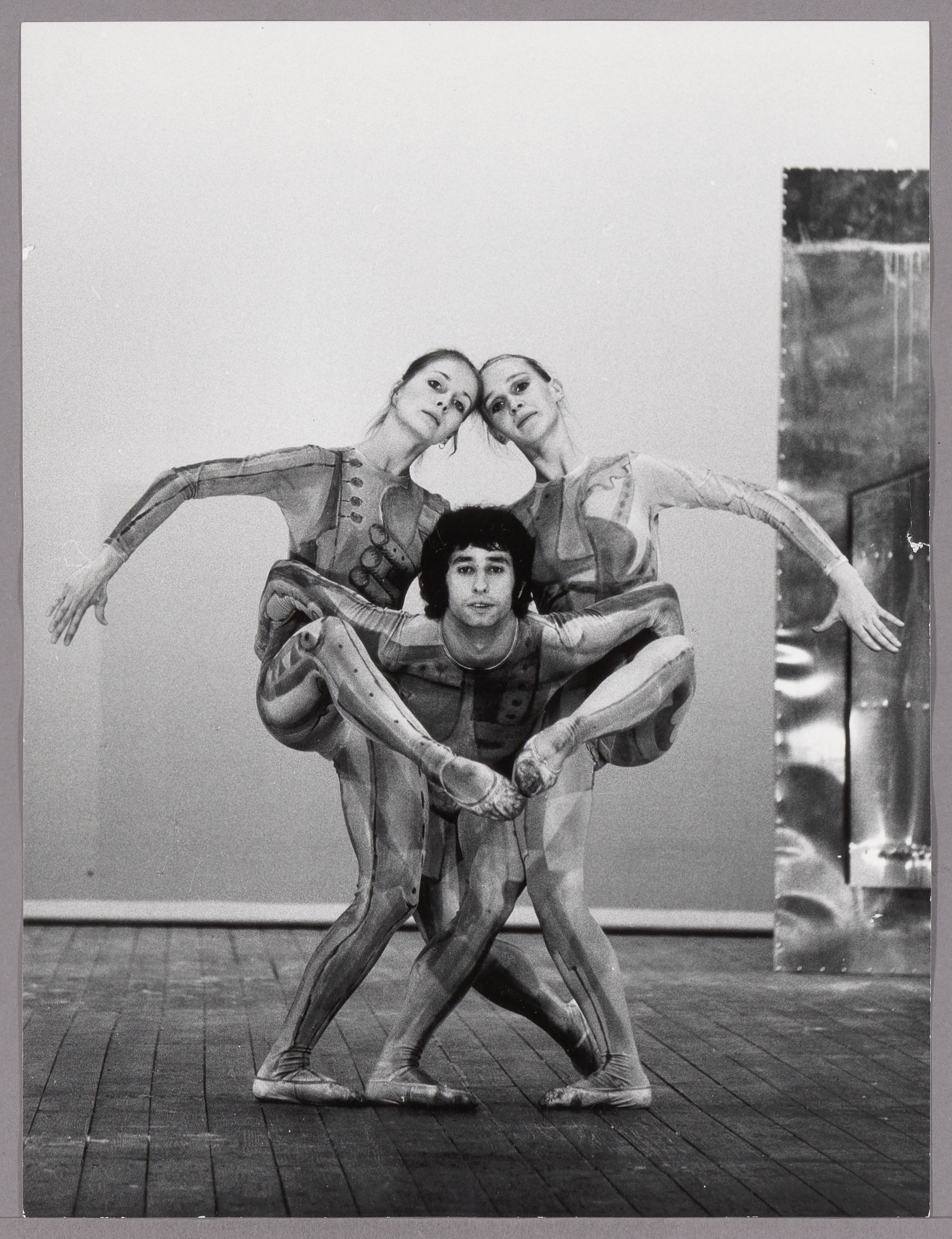
'Jongeren in beweging'
Under the title 'Jongeren in beweging' (Youth in Movement), the company gives its first series of performances for a young audience, performed by the young dancers of the company, who thus gain stage experience.
69 / 70
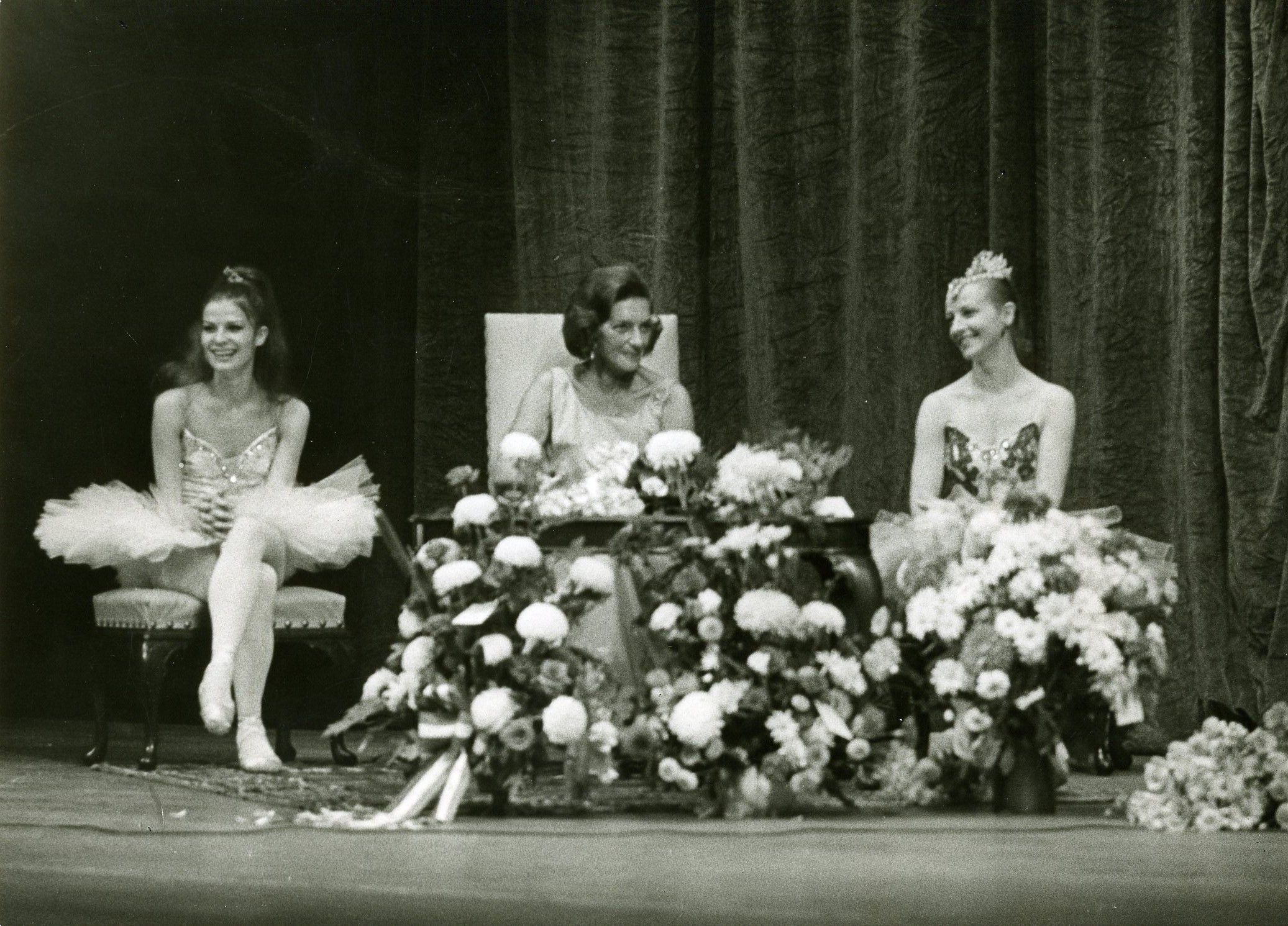
Gaskell’s departure
Following her previous departure, an official, large-scale farewell event is held for Sonia Gaskell, whereby 'Mevrouw' – as the dancers called her – is presented with the Silver Medal of the City of Amsterdam.
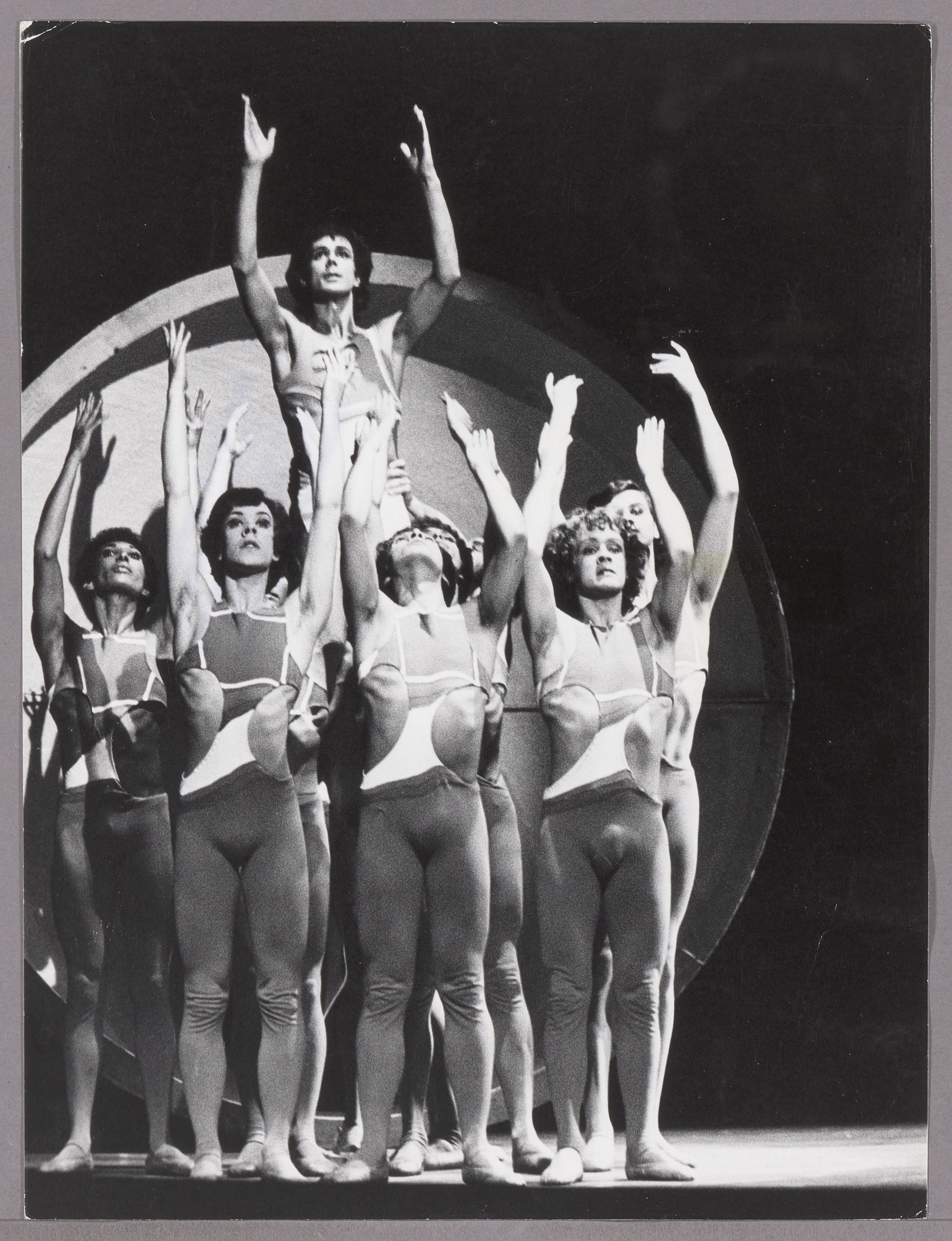
The Ropes of Time
Rudi van Dantzig creates his first work for Rudolf Nureyev and dancers of the prestigious Royal Ballet in London. Three months after its premiere, the ballet, The Ropes of Time, is also premiered by Dutch National Ballet, as De touwen van de tijd.
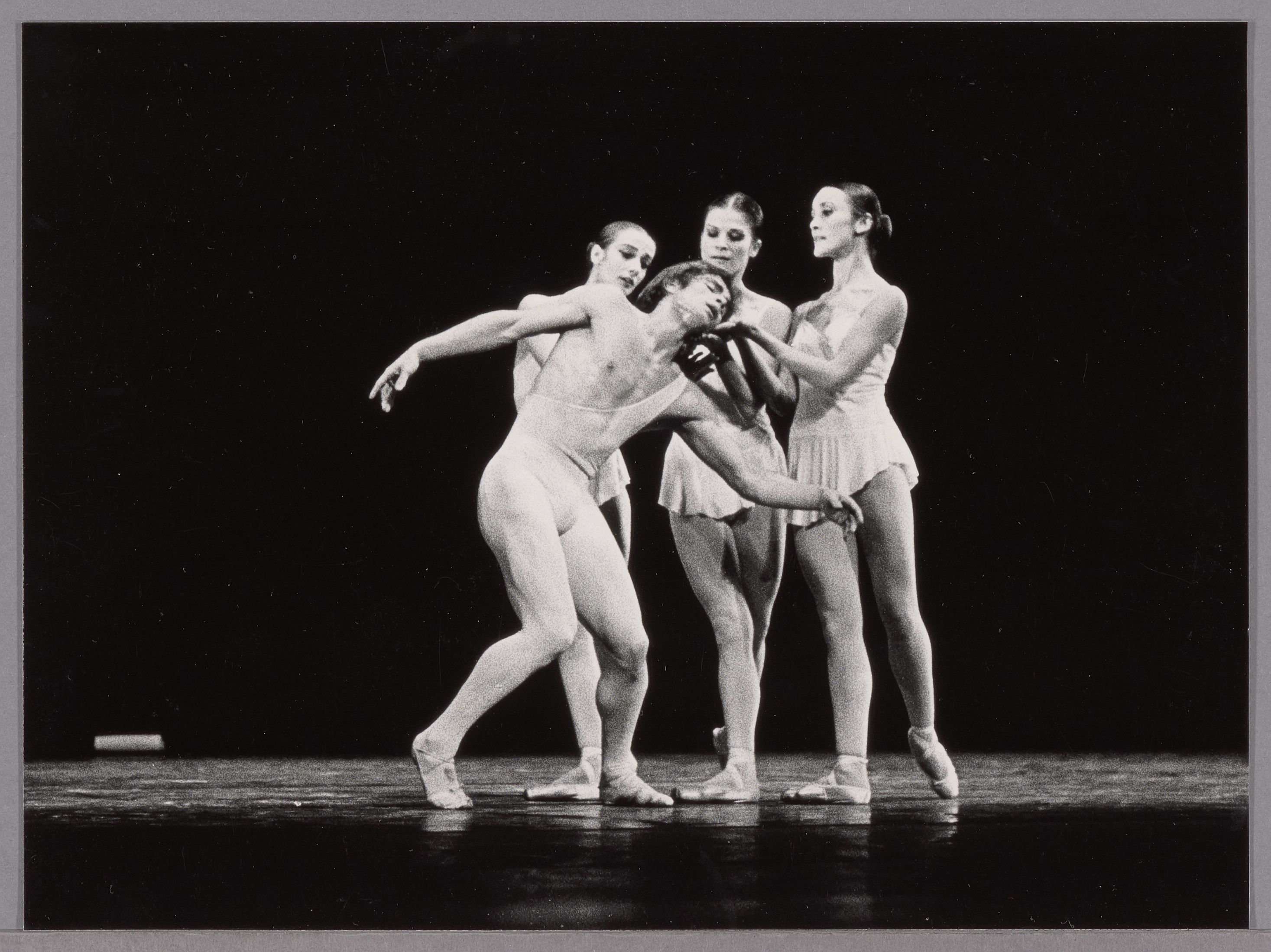
Nureyev and Fonteyn and the first tour to London
The British prima ballerina Margot Fonteyn performs for the first time with Dutch National Ballet, as the partner of Rudolf Nureyev in Giselle. And the company appears in London for the first time – with great success – giving seven performances with Nureyev as guest artist.
70 / 71
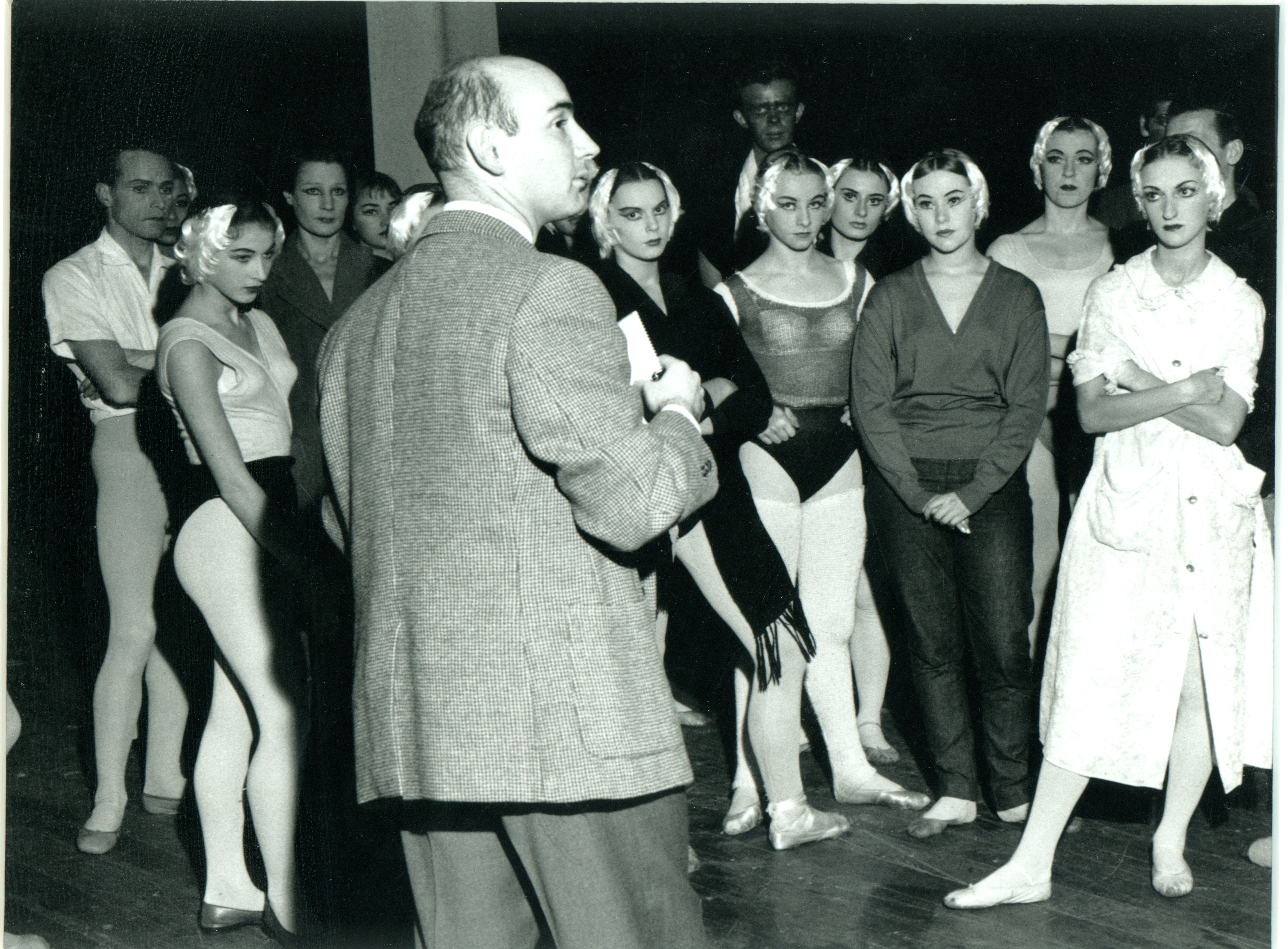
Kaesen’s departure
Artistic director Robert Kaesen leaves the company, initially on a temporary basis, to choreograph some shows for Bavarian television, but he does not return. He is replaced for a short while by the American teacher and choreographer Benjamin Harkarvy, who had also previously directed Nederlands Dans Theater.e.
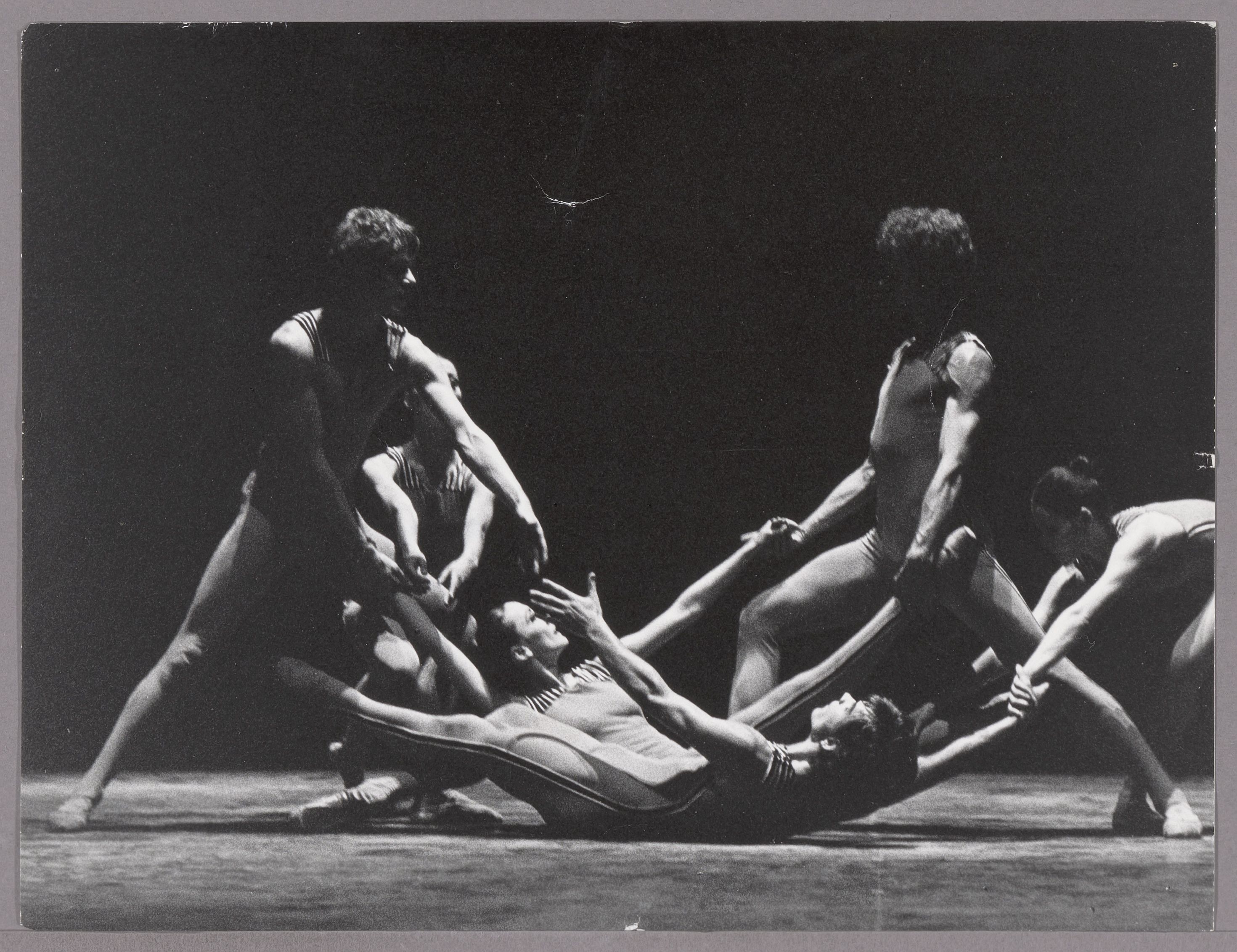
Choreographic debut by Toer van Schayk
Urged by Van Dantzig, principal dancer and set and costume designer Toer van Schayk makes his debut as a choreographer with Onvoltooid verleden tijd. “A remarkably sound and pure work (..) clear in line and form, stripped of all superfluity, without becoming cold or sterile”, wrote dance critic Ine Rietstap in NRC Handelsblad.
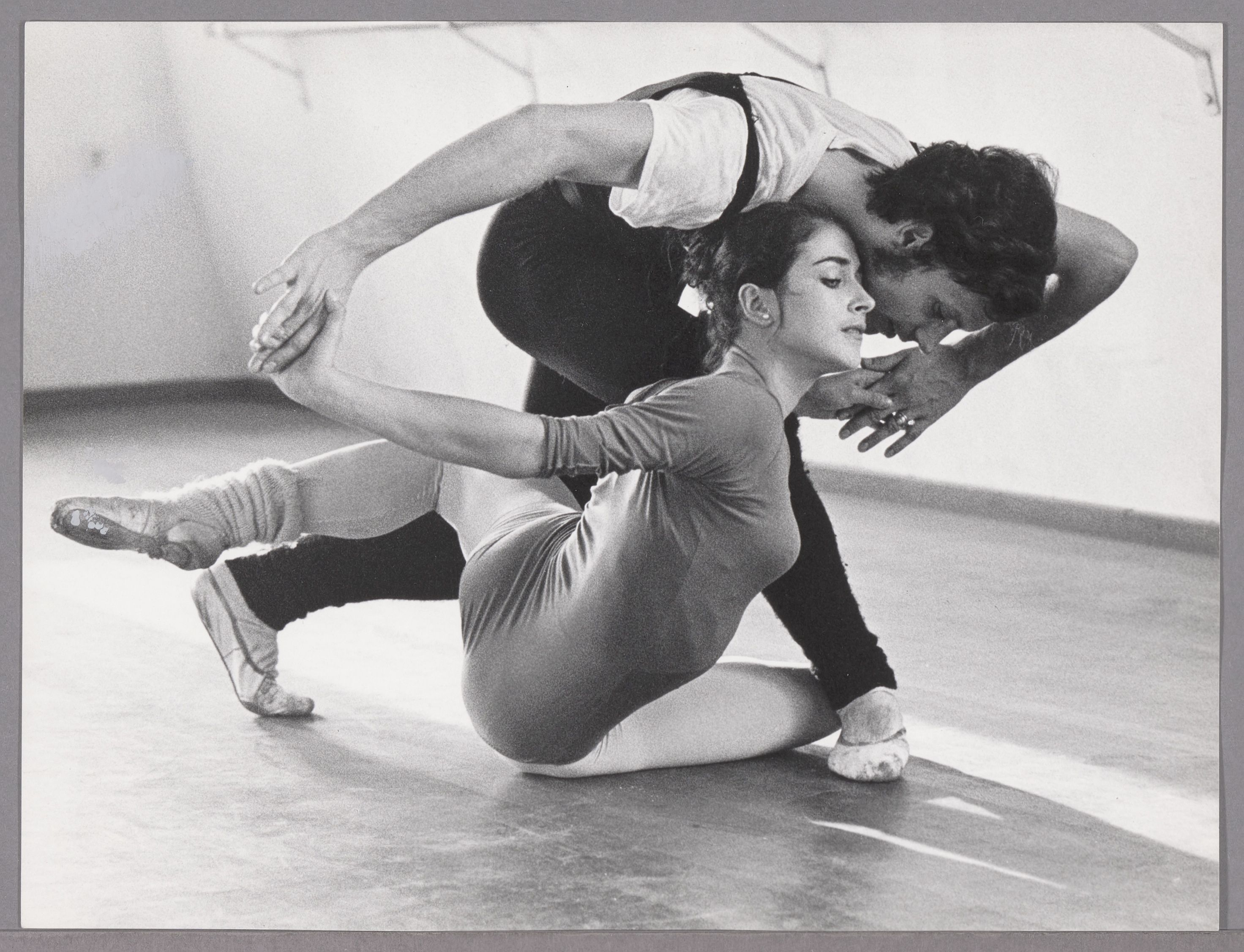
Arrival of Alexandra Radius and Han Ebbelaar
At Van Dantzig’s invitation, Alexandra Radius and Han Ebbelaar join the company as principals, after dancing for two years with the renowned American Ballet Theatre. Radius had previously danced with the Nederlands Ballet, switching to Nederlands Dans Theater in 1959, where she got to know Ebbelaar. After their return from the US, they go on to become the most famous dance couple ever in the Netherlands.
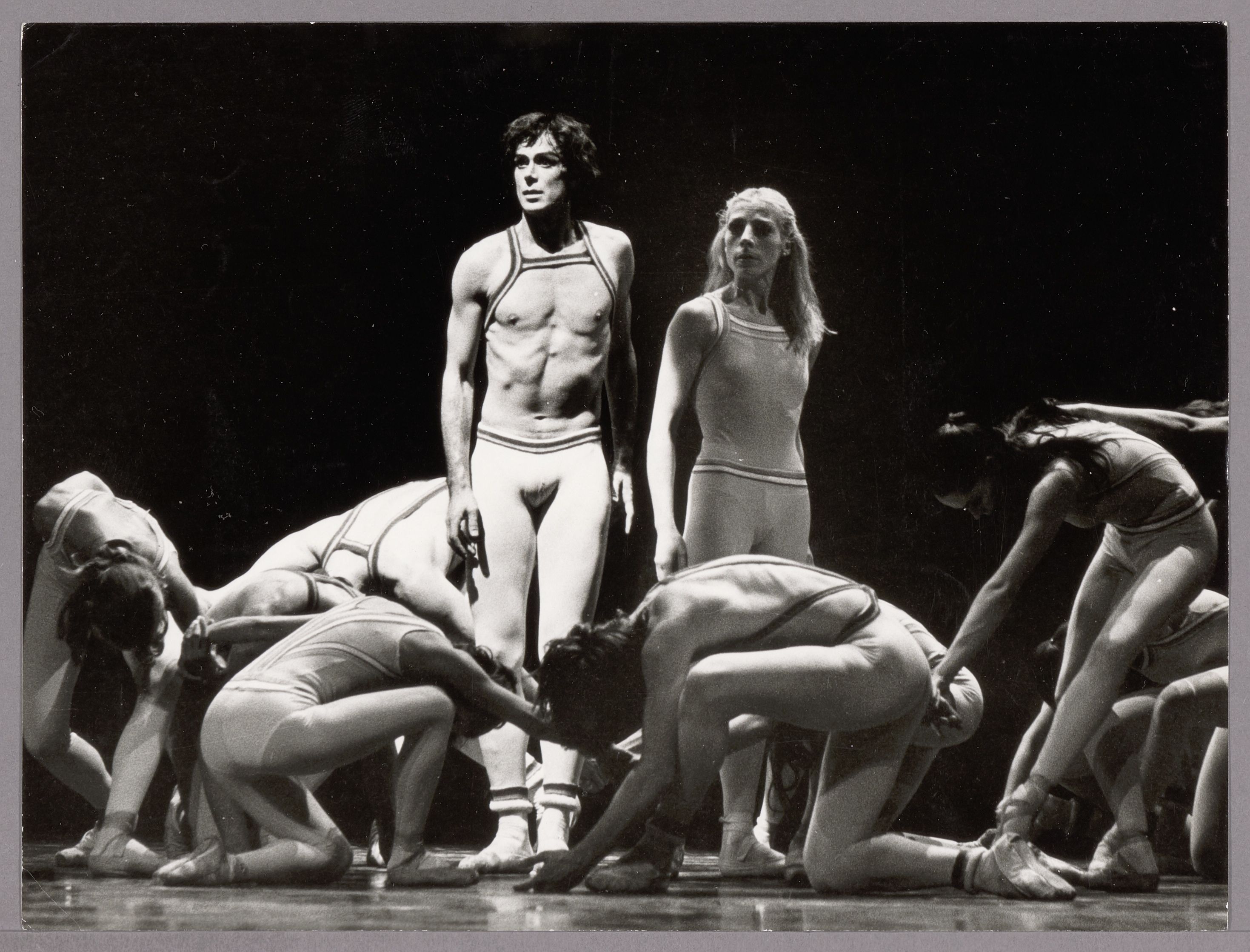
Paris debut
Dutch National Ballet performs in Paris for the first time, at the international dance festival at Théâtre des Champs Elysées. The first evening, attended mainly by high society, leads to a scandal because of the – in the words of a shocked reporter – practically naked dancers in Van Dantzig’s Epitaaf and the completely naked ‘Apollos’ in his new creation Onderweg.
